- Destinations
- Travel Guides

- Getting around New Zealand
)
Roxanne de Bruyn

New Zealand
New Zealand is a long, narrow and relatively sparsely-populated country. Outside the cities, there are large expanses of rolling countryside, tall mountains and thick native bush. In some regions, it can be a long way to the next town.
As a result, most New Zealanders tend to travel by car. Many visitors to the country do the same, although there are also some national public transport options available. Regardless of whether you want to explore the cities or escape into nature, here are some of the best ways to get around New Zealand.
)
New Zealand by car
New Zealand's stunning scenery makes for remarkable road trips and traveling by car is convenient and flexible, especially visiting attractions away from main arterial routes. One of the most enjoyable parts of traveling in New Zealand is exploring the national parks and seemingly isolated spots – in fact, many of the best-known sites are quite remote.
Driving around New Zealand is reasonably straightforward and traffic is relatively light outside of the major cities. People drive on the left-hand side of the road and visitors are usually allowed to drive on their home driver’s license for up to a year.
Keep in mind that car rentals aren’t always cheap, and insurance can be expensive for drivers under 25. If you’re traveling between the islands, also check whether your rental car is allowed on the Interislander ferry (which connects the North and the South Islands) – book your vehicle on the ferry in advance.
In more remote areas, there can be long stretches between gas stations, so be sure to fill up the car when leaving a town. Also, be aware that some roads are gravel or dirt, especially in rural places.
If driving through mountainous areas in winter, also remember to rent tyre chains, or a four-wheel drive, as there can be ice and snow on the roads.
In summer you still need to be well rested to tackle the windy narrow roads and tight mountain passes. Longer days mean more time to travel, but be aware distances are deceptive - single-lane roads mean that being caught behind a slow-moving campervan can add hours to your drive.
)
Hiring a campervan in New Zealand
Renting a campervan and driving around the country is one of the most popular ways to see New Zealand. Traveling by campervan gives you the flexibility of having your own transport while allowing you to save money on expensive accommodation costs.
There are a number of campervan rental companies in New Zealand and it’s possible to get a full-sized campervan or a smaller van, which is cheaper but not as comfortable. Just keep in mind that "freedom camping," or setting up camp outside of designated campgrounds, isn’t always legal – if in doubt, check the Department of Conservation website for some guidelines about where free camping is allowed.
Train routes in New Zealand
Trains in New Zealand are generally focused on freight and local travel within some of the cities, but there are a couple of scenic regional trains which are aimed at travellers.
The major route in the North Island is the Northern Explorer which goes from Auckland to Wellington, stopping in Hamilton, Tongariro National Park and Palmerston North. There is also the option to travel by train from Wellington to Palmerston North.
In the South Island, there are two scenic train options. The Coastal Pacific route follows the coast from Picton (where the Interislander ferry arrives from Wellington) to Christchurch and back again.
The other option is perhaps the most beautiful train journey in the country. The Tranzalpine Train runs between Christchurch and Greymouth on the West Coast, passing through stunning alpine scenery.
)
Bus travel in New Zealand
City-to-city buses provide good links between cities and towns in New Zealand. These can be booked in advance and are reasonably affordable, however, local buses will need to be taken to rural locations or national parks.
Intercity is the best known of the national bus companies and their buses include wi-fi and sometimes toilets. Intercity buses also offer flexible passes which include ferry passes on the Interislander ferry. Discounted bus tickets are often available in the off-season.
There are also hop-on, hop-off buses that cater to tourists and backpackers, however, these are significantly more expensive. Within cities and towns, buses are a popular form of transport, particularly in the major centres including Auckland , Wellington and Christchurch.
Travelling by plane in New Zealand
While many visitors choose to travel overland in New Zealand, opting for a plane can be a good option if you want to get to specific destinations within a short timeframe. Air New Zealand is the national airline and goes to 25 different destinations around the country.
Jetstar, a low-cost carrier, is another option, but it doesn't fly to all airports around New Zealand. If you book in advance, Air New Zealand’s special airfares are comparable with Jetstar’s pricing.
)
Transport passes in Auckland and Wellington
If you’re spending some time in Auckland or Wellington and planning to use public transport, it’s worth buying an Auckland Transport HOP or a Snapper card when you arrive in the city. HOP cards can be used on bus, train and ferry services in Auckland and give a 20% discount on fares (excluding the SkyDrive bus from the airport and the ferry to Waiheke Island). Snapper cards can be used on Metrolink buses and trains in Wellington and give a 25% discount on the usual fare.
Both cards are prepaid and provide an integrated fare. This means that you can transfer between Auckland Transport or Metrolink buses, trains and ferries (in Auckland) and pay just one fare across the zones you’re travelling.
Accessible transportation in New Zealand
Most public transport in New Zealand is accessible for people of all abilities including buses and trains, which typically provide wheelchair ramps, handrails and low steps.
Accessible vehicles are also available across the country with many car rental companies offering a wide range of vehicles and three rental companies who specialize in accessible rental – Disability Rentals, Mobility Vehicle Rental and Freedom Mobility. Mobility parking permits can also be arranged for international visitors if organized at the beginning of the trip.
The New Zealand Transport Authority also runs the Total Mobility Scheme , a resource for finding discounted accessible transportation in different regions of New Zealand, including public transport and taxis.
This article was first published by Lonely Planet .
- Introduction
- Transport passes
- Accessible transportation
Share this article
)
Author - Roxanne de Bruyn
Roxanne is the founder and editor of Faraway Worlds. She is a freelance writer and guidebook author and has written for several travel publications, including Lonely Planet, TripAdvisor and The Culture Trip. With a background in communications, she has studied ancient history, comparative religion and international development, and has a particular interest in sustainable tourism.
Originally from South Africa, Roxanne has travelled widely and loves learning the stories of the places she visits. She enjoys cooking, dance and yoga, and usually travels with her husband and young son. She is based in New Zealand.
Last Updated 23 March 2023


- Food & Drink
- Milford Sound
- Itineraries
- Work With Me
35 New Zealand Travel Tips: What to Know Before You Go
Are you’re planning your first trip to New Zealand and wondering where to start? I’ve got you covered with these New Zealand travel tips!
New Zealand is a stunningly beautiful country that offers a wide range of experiences for travelers. From the rugged mountains and glaciers of the South Island to the lush rainforests and pristine beaches of the North Island, it’s no wonder New Zealand is a must-visit destination for many.
With so much to see and do, there are a few things you should know first, so you can have an amazing time without having to spend time figuring these things out DURING your trip.
I’ve compiled the best tips for traveling in New Zealand that I learned from living here for 20 years to help you travel safely and smoothly throughout the country.
Here are 35 New Zealand travel tips to help you make the most of your adventure.
» Read next: Do I Need Travel Insurance for New Zealand?

Top New Zealand Travel Tips
1. don’t try to do everything.
New Zealand may be a small country but there is so much to see and do. Not to mention all the incredible landscapes to explore across two main islands. If you’re thinking you can see it all, you’re going to be disappointed or overwhelmed trying. My best tip for new visitors to New Zealand is “ don’t try to do everything” .
Even living here for many years, I still haven’t done it all.
No matter how much time you have, it’s impossible to do absolutely everything. And that’s ok! Plan a realistic itinerary so you can take the time to enjoy it. Prioritize your absolute must-dos, then build additional things around that.
Road trips are a good way to see a lot of things in between two main cities, including the small towns and beautiful landscapes around New Zealand.
2. Plan According to the Season
New Zealand is split across two main islands, and they are different in both terrain and climate. Research the areas you plan to visit including the weather to help you determine the best time to visit New Zealand .
In winter it can be quite cold in the South Island which may restrict certain activities, but it is ideal for skiing and snowboarding in the parts which have an alpine environment.
In summer it is a busier time to visit but there are more options with the good weather such as beach activities, especially in the warmer North Island.
Spring and fall can be good for hiking and experiencing popular activities with fewer crowds.
If you are planning road trips, bear in mind there can be snow and ice on roads in the alpine areas during winter. So you’ll need to keep an eye on road conditions and may need to consider a 4WD or carrying snow chains for your vehicle.
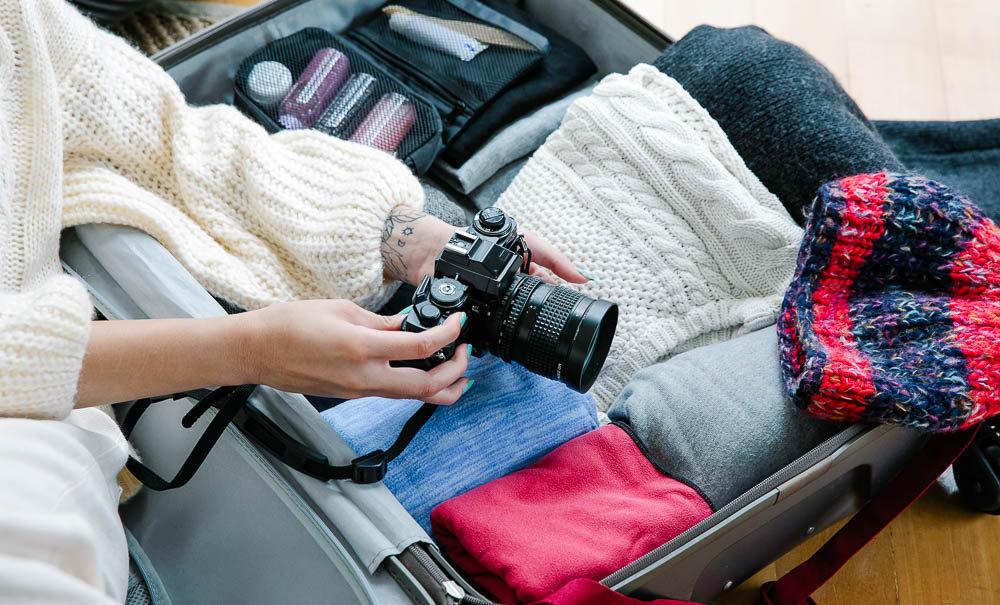
3. The Seasons are Reversed
Speaking of planning according to the season, it’s worth mentioning our seasons are opposite to the Northern Hemisphere.
Summer in New Zealand runs from December to February and winter from June to August.
This means summer school holidays are in December and January, which combined with the holiday season tends to be the busiest time of year to travel around New Zealand. Be sure to check school calendars if you want to avoid the school holiday crowds.
Spring (September to November) and fall (March to May) are considered the shoulder seasons and tend to be less busy with cheaper prices for accommodation, car rentals and some attractions than you would find in peak season.
4. Rent a Car or Campervan
Public transport outside the main cities is limited. If you plan on exploring multiple areas, I recommend renting a car or campervan. It offers the most flexibility and you can explore the country at your own pace.
Even within the cities, you may be limited to what you can see and do without your own transport. For example, the west coast beaches in Auckland are worth visiting but you’ll need a car to get there.
Hotels in the cities generally charge a fee for parking and it can be expensive. An option is to build your itinerary so that you have a few days in the city first without a car, then rent a car for the day trips you plan to take later on.
There are several car rental companies in New Zealand, including international brands and local companies. Some of the popular companies include Budget, Avis, Hertz, and Europcar. It’s important to do your research and compare prices and services before making a reservation.
We like using DiscoverCars.com to compare prices and book our rental cars. Once you enter your travel details they search the best deals you!

5. Know All Your Transport Options
Choosing the best way to travel around New Zealand is a personal choice. If renting a car is not right for you, there are several other options for getting around, each with its own advantages and disadvantages. The best option depends on your budget, travel style, and timeframe.
Here are some options to consider:
- Public transportation: New Zealand has a network of Intercity buses and trains that connect major cities and towns. This is a convenient and affordable option for getting around, especially if you’re traveling on a budget, but bear in mind it takes longer and offers less flexibility.
- Domestic flights: Air New Zealand and Jetstar are the two domestic airlines in New Zealand. Air New Zealand has the most coverage in regional airports, and Jetstar is generally cheaper. Flying between cities is good if you are short on time but it can be expensive and you’ll be limited to airport locations and flight schedules.
- Guided tours: There are bus tours covering most areas of the country from a couple of days to a couple of weeks. It’s a stress-free way to travel, with your itinerary and bookings made for you, and a great way to learn about the areas you visit from knowledgeable guides. Although they can be expensive and you may have limited time to explore on your own.
6. Know Where You Can and Cannot Camp
If you plan to explore New Zealand on a budget, staying in campsites and holiday parks along your journey, and renting a campervan is the way to go. Just be sure to know where you are allowed to camp as you can’t just park up anywhere in New Zealand.
Each region has its own by laws on freedom camping that you’ll need to adhere to. And you’ll need to be driving a certified self-contained campervan.
It’s also a good idea to book where you’ll be staying in advance, especially in peak season.

7. Learn New Zealand Road Rules
New Zealand drives on the left side of the road which may be different from what you are used to. This means the steering wheel will be on the right side of the car. A good tip to remember is the driver is always on the side of the car that is closest to the middle of the road.
Take some time to practice in a quiet place before tackling the cities or winding mountain roads.
Things like roundabouts and one-lane bridges are common in New Zealand but may be new to you. Be sure to know the New Zealand road rules and check driving conditions before heading off.
You can check the rules for driving as a visitor to New Zealand on the NZTA site , including license requirements.
8. Explore the Cities
New Zealand has several vibrant and dynamic cities that offer a range of experiences for visitors. I recommend that you don’t just stick to one during your visit. Each has its own vibe and attractions. They are also a great start and end point for exploring beyond the cities or embarking on a road trip.
- Auckland , the largest city in New Zealand, is known for its stunning harbor, world-class restaurants, and has plenty of attractions to choose from. Being a main travel hub, many visitors spend at least one day in Auckland to start their trip.
- Wellington , the capital city, is a cultural hub with a thriving arts scene, great coffee, and beautiful harbor views.
- Christchurch , located on the South Island, is known for its beautiful gardens and parks as well as cafes and restaurants.
- Queenstown , the adventure capital of New Zealand , offers a range of outdoor activities, from skiing and snowboarding to bungee jumping, skydiving and jetboating.
These cities, among others, offer a unique glimpse into New Zealand’s culture and history, as well as plenty of exciting things to do – rain or shine .
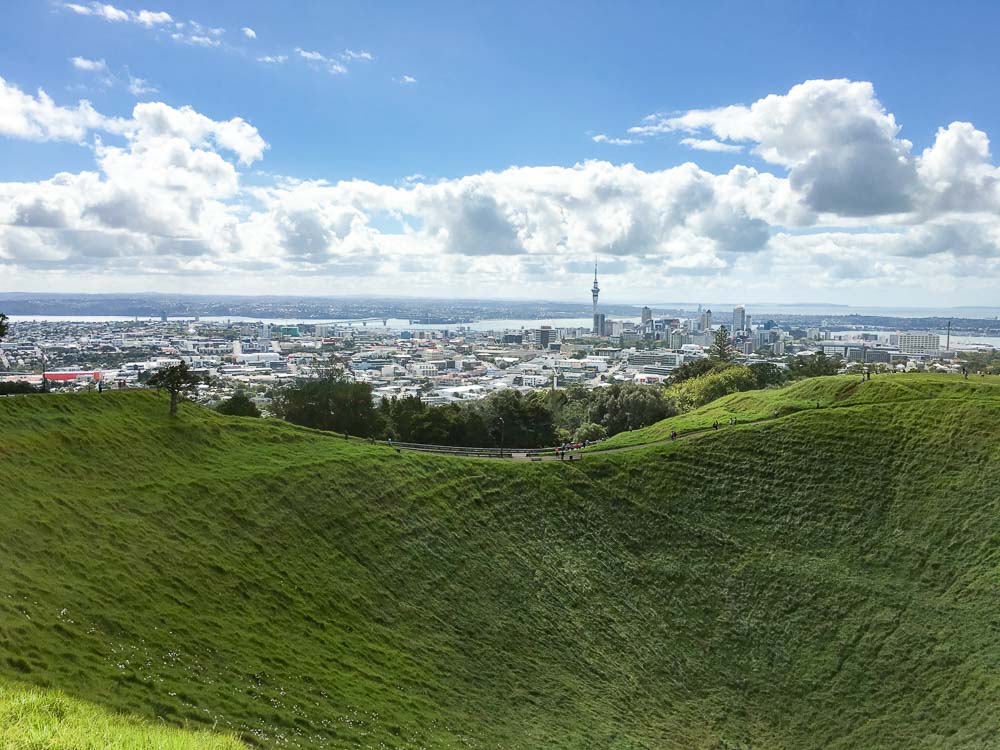
9. Explore Beyond the Cities
New Zealand is known for its natural beauty and there are many ways to experience it. From scenic drives and world-renowned hiking trails to national parks and quaint towns rich in history and culture.
In fact, New Zealand is home to two UNESCO World Heritage Areas, two International Dark Sky Reserves/Sanctuaries and 13 national parks that are free to visit.
Each area offers unique landscapes and activities, so try to visit at least a couple during your trip. Nature is what New Zealand does best!
10. Respect the Environment
New Zealand has a commitment to caring for the environment, including conservation efforts to preserve the native wildlife that is under threat due to invasive species.
Tiaki is a significant part of Māori culture that can be loosely translated to mean to care, conserve and protect. The Tiaki Promise is a commitment to care for New Zealand and everyone who lives and travels here has a responsibility to look after it. This means that while traveling in New Zealand we will:
- Care for land, sea and nature, treading lightly and leaving no trace
- Travel safely, showing care and consideration for all
- Respect culture, traveling with an open heart and mind
It’s important to stay on marked trails and practice “leave no trace” principles when hiking and camping. Always leave with anything you brought. Leaving trash or tramping on delicate vegetation is not responsible or respectful.
Be sure to clean your boots at cleaning stations when you see them. Not all trails have them, but it is an important step in containing diseases such as Kauri tree dieback, which is killing our beautiful Kauri trees. So please use them when you see them.
This is why it’s also important to only bring clean hiking gear into New Zealand. Declare your gear at the airport and they’ll even clean it for you.

11. Try Local Cuisine
New Zealand may not be the first place that comes to mind when thinking about food, but thanks to its diverse cultures and rich agricultural resources New Zealand has a range of delicious foods to try . Be sure to try local cuisine and visit farmers’ markets for fresh produce. Here are some of the best local dishes and where to try them:
- Auckland: Known for its multicultural food scene. Visit the Auckland Night Markets to try a variety of street food from all over the world. Head to Commercial Bay for a selection of restaurants and an upmarket food hall with a range of eateries. Or head to the Viaduct for Auckland’s top restaurants with a view. Try the steak and oysters at Oyster and Chop or fresh seafood at Soul Bar and Bistro.
- Rotorua: Experience a hāngī meal and learn about Māori culture at a Māori Village in Rotorua. Hāngī is a traditional method of cooking in Māori culture in which food is steamed in an underground pit, referred to as an earth oven, resulting in deliciously tender meat and root vegetable infused with smoky flavors.
- West Coast: Famous for its whitebait fitters. New Zealand whitebait are tiny fishes with a subtle flavor, most commonly served in fritters. They can be found all over New Zealand during whitebait season (September and October), but especially along the West Coast of the South Island.
- Bluff: A small town located at the very bottom of the South Island known for its fresh seafood and bluff oysters that are wild caught straight off the coast. If you can’t make it to Bluff, don’t worry, they are shipped to just about every seafood restaurant in the country from March to August.
- Kaikoura: Known for its amazing crayfish with ‘seafood caravans’ dotted along the coast. Similar in appearance to lobster but with a subtle flavor. If you’re heading to Kaikoura be sure to stop at Nins Bin to try their famously fresh crayfish.
- Queenstown: Home to the famous Fergburger, arguably New Zealand’s best burger, but also many restaurants featuring farm to table cuisine and local wines. Try Rata restaurant for fresh contemporary New Zealand cuisine. Or the signature ribs at Flame Bar & Grill, we dine here at least once or twice whenever we’re in Queenstown!

12. Enjoy Local Wine
New Zealand is known for its world-class wine, with several regions producing some of the best wines in the world. There are quite a few and I’m still working my way through trying them all!
Try to visit a couple of wineries, tour the vineyards, and sample the wine. It’s a wonderful experience sitting amongst the vineyards. Enjoy the stunning views of the surrounding landscapes, as well as a chance to meet the winemakers and learn about the wine-making process.
You may like to book a wine-tasting tour. There are plenty to choose from in each of New Zealand’s wine regions. Here are a few of our favorite wine regions to visit in New Zealand:
- Waiheke Island , located on the North Island and a short ferry ride from Auckland, is known for red wines based on Cabernet Sauvignon, Merlot, Malbec and Cabernet Franc grape varieties. The island is home to 30 boutique wineries , many with tasting rooms, swanky restaurants and breathtaking views.
- Hawke’s Bay , located on the North Island, is known for its full-bodied red wines, including Cabernet Sauvignon, Merlot, and Syrah.
- Marlborough , located on the South Island, is known for its Sauvignon Blanc, which is crisp, refreshing, and bursting with tropical fruit flavors.
- Central Otago , also located on the South Island, is known for its Pinot Noir, which is elegant, complex, and has a distinct earthy flavor.
Popular wineries include Cloudy Bay in Marlborough, Craggy Range in Hawke’s Bay, and Felton Road in Central Otago.

13. Book in Advance
New Zealand is a popular destination during the summer months (December to March). Accommodation and tours can fill up quickly. Many visitors from the Northern Hemisphere come to escape their winter plus local families are traveling for summer school holidays .
It’s worth booking your accommodation and car or campervan rental well in advance for the best rates. As appealing as it sounds to arrive with a road trip plan and wing it on where to stay each night, it’s not a good idea.
Even campsites need to be booked in most places and you may end up with nowhere to stay if you leave it to the last minute. You’re better off having a rough itinerary and booking your accommodation in advance for each area.
I also recommend booking any tours or attractions you don’t want to miss out on.
If you’re traveling between May and October you’ll have more flexibility with fewer crowds. With the exception of Queenstown, which gets busy for ski season from June to August. Even then, you’re better off having a rough plan with flexible bookings that you can change around once you’re here.

14. Don’t Miss the Scenic Roads
The South Island offers some of the most scenic drives in the country with views that have to be seen to be believed. Our 2-week South Island road trip itinerary provides a comprehensive loop around the island stopping at popular attractions and off-the-beaten-path locations.
The Southern Scenic Route follows the coastline from Dunedin to Invercargill including picturesque lighthouses and stunning waterfalls to be explored along the way.
You can continue on the Southern Scenic Route from Invercargill to Te Anau through the remote coastal communities and popular surf beaches along the southern coast.
Te Anau is a great base from which to explore the popular Milford Sound and the more remote Doubtful Sound . The drive from Te Anau to Milford Sound is an incredible journey through the lush landscapes of Fiordland with plenty of scenic stops along the way and not to be missed.
But my personal favorite is the drive from Queenstown to Mt Cook . Plan for a slow drive, with plenty of stops to see all the best views and places to discover along the way. From New Zealand’s oldest hotel to landscapes that can only be described as otherworldly, it has it all.
Here are some other scenic drives you might enjoy:
- Driving from Queenstown to Milford Sound: Everything You Need to Know + 18 Best Places to Stop Along the Way
- Driving Cromwell to Queenstown: 10 Best Places to Stop Along the Way
- 15 BEST Places to Stop on the Drive from Glenorchy to Queenstown
- Queenstown to Invercargill: 10 BEST Places to Stop Along the Way
For the North Island, our 2-week North Island road trip itinerary covers all the best places and scenic routes to take.

15. Protect Yourself from the Sun and Sandflies
The UV rays are pretty intense in New Zealand, thanks to a thin ozone layer and less airborne pollution to scatter the UV radiation. Traveling in New Zealand requires some preparation to protect yourself from the sun’s harmful rays all year round, with extra precautions during the summer months. Here are some of our top tips:
- Check the UV Index : UV levels are variable across the country and depending on the time of year. The sun’s rays are generally the strongest from months of September to April and from 10 a.m. to 4 p.m. so make sure you can seek shade during these times and plan outdoor activities in ways that prevent overexposure to the sun.
- Sunscreen: Use a broad-spectrum sunscreen with at least SPF 30 and remember to re-apply regularly, even if it’s cloudy. Consider a waterproof sunscreen if you’ll be swimming or sweating and re-apply more often.
- Clothing: Wear lightweight, long-sleeved shirts and pants to protect yourself from prolonged exposure to the sun. You can find apparel with built-in UV protection, but generally clothes with a tight weave are best at blocking UV rays.
- Hats and Sunglasses: Protect your face, neck and shoulders with a wide-brimmed hat. Sunglasses that block both UVA and UVB rays are best for protecting your eyes.
- Hydrate: Exposure to the sun can bring on dehydration quickly, especially when you’re active. Drink plenty of water, even if you don’t feel thirsty, to ensure you stay hydrated.
- Bring Bug Spray: Sandflies can be prolific in areas near running water and humid bush such as beaches, lakes and waterfalls, especially during summer. These tiny insects leave an itchy bite that can be unpleasant. Cover your arms and legs with clothing and use a high deet insect repellent if venturing to these areas. I also find they don’t bother you as much if you keep moving.

16. Don’t Skip the Hike
New Zealand is an outdoor paradise with hundreds of trails across the country from easy to advanced, and ranging from 10 minutes to 10 days! We always recommend including a few hikes in your itinerary. By the way, hiking is referred to as “tramping” in New Zealand .
The Department of Conservation (DOC) is a great resource to find trails that are available in any region across New Zealand, including any alerts or track closures.
Exploring the landscapes of New Zealand is a truly rewarding experience but it’s important to be prepared. If you plan on doing the more challenging hikes be sure to wear sturdy footwear and don’t underestimate the effort required. New Zealand’s advanced trails can be tough, technical and remote but incredibly beautiful.
The environment can also change quickly, especially in the backcountry and at higher altitudes. Dress for the conditions and always have a warm layer with you, even in summer. Wi-Fi may not be available in some locations so if you’re heading into the remote or alpine areas you should carry a personal location beacon (PLB) with you.
Here are some of our favorite hikes in New Zealand:
- 12 BEST Day Walks in Queenstown
- 10 EPIC Day Hikes in Queenstown
- 15 Must-Do Walks in Te Anau From Easy to Advanced
- Guide To Hiking Roys Peak: Everything To Know About New Zealand’s Most Photographed View
- 15 Best Hikes In Milford Sound
- Sawpit Gully Trail – A Spectacular Hiking Trail in Arrowtown, New Zealand

17. Enjoy the Beaches
New Zealand is home to some of the most stunning beaches in the world, and there are plenty of ways to enjoy them. Here are some of our top tips:
- Choose the Right Beach: New Zealand beaches can vary drastically from the wild black sand beaches on the west coast to the calm and pristine white sand beaches on the east coast. Do some research to find a beach that fits your interests – whether that’s surfing, swimming, relaxing or exploring.
- Sun Protection: Wear a broad-spectrum sunscreen with at least SPF30. Reapply regularly and don’t forget your sunglasses and hat.
- Follow Safety Guidelines: Always pay attention to beach safety signs and flags. Watch out for rip currents and only swim in designated areas when lifeguards are present.
- Pack a Picnic: Many beaches have picnic areas, some even with BBQ facilities, where you can enjoy a meal with a view. Remember to pack plenty of water and stay hydrated.
- Explore Beyond the Sand: Many beaches are near hiking trails, waterfalls, parks or towns with shops and restaurants. See what else there is to see and do in the area.
- Leave No Trace: Remember to take trash and belongings with you at the end of the day to help keep New Zealand beautiful.

18. Be Flexible
New Zealand is beautiful, wild and unpredictable and the weather can affect some activities. For example, wind or rain may cancel a skydive or a helicopter landing on a glacier. Fog may obstruct views at the top of the mountain you just spent 4 hours climbing.
I get that it’s a balancing act between planning for the time you have here and being flexible. Especially if you are traveling in the summer months when booking tours in advance is recommended.
Most tours offer the chance to re-schedule if it gets cancelled due to inclement weather. Our advice is to book your activities or tours that are weather-dependent for the beginning of your stay. This way you have the option to re-book for another day if you need to.
It’s also good to have a list of other things you want to see or do in each location so that you can adjust to the weather and conditions if you need to. Then you won’t have to spend time trying to research other things to do on the fly if plan A gets disrupted.
19. Dress for The Weather
New Zealand’s weather can be unpredictable, so be prepared for all kinds of weather, even in the summer.
The best way to pack for New Zealand is to bring layers. The time of year you’ll be visiting and the activities you’ll be doing will determine just how many layers you need. For example, hiking in the South Island in fall I wear a short sleeve or long sleeve t-shirt during the day and usually progress to a fleece and then a puffer jacket the higher we climb, and for the cooler evenings.
But even in summer, a light layer is useful for the cooler evenings and protection from the sun. And a warm layer if you’ll be heading to the mountains.
A waterproof jacket and comfortable walking shoes are essential all year round. And sturdy hiking boots if you’ll be hitting the trails.

20. Be Prepared for Earthquakes
Earthquakes can occur in certain parts of New Zealand. They aren’t very often and are usually small. In fact, I’ve lived here for many years and I still haven’t felt one in person. But that doesn’t mean one won’t happen while you’re here. It’s important to be familiar with safety procedures, just in case.
- Familiarize yourself with the “Drop, Cover, and Hold” protocol. If you feel shaking, drop down on your hands and knees. Cover your head and neck and get as much of your body under a sturdy piece of furniture. Hold on to your shelter until the shaking stops.
- Know the safe spots in your area. If inside, find an anterior wall or under large sturdy furniture and avoid doorways. If outside, move away from buildings, trees, streetlights, and power lines, then Drop, Cover and Hold.
- Know the emergency procedures at the place you’re staying. Identify safe places to take cover and establish a way to contact friends and family to let them know you’re safe.
- Consider having an emergency kit with you that includes items such as bottled water, non-perishable food, a flashlight, a first-aid kit, a portable charger for your phone and any essential medication.
Tips for Traveling in New Zealand
Here are some quick New Zealand travel tips to ensure you get here smoothly as well as some handy tips for traveling in New Zealand once you arrive.
21. Declare, Declare!
New Zealand customs are strict and you are required to declare certain items in order to protect the country’s environment.
Food as well as plant and animal products can introduce pests and diseases that could cause irreparable damage to New Zealand’s agriculture and environment. While some packaged food is okay to bring in, declare it anyway to be on the safe side.
New Zealand’s ecosystem has evolved in isolation for millions of years, with unique plants and animals that are found nowhere else in the world. The country’s isolation and geological history have created a unique and delicate balance between species. The introduction of a non-native pest or disease can have devastating consequences.
Not only can failure to declare result in fines or even criminal charges, but you may inadvertently bring in something extremely harmful to the environment.

22. Know Your Visa Requirements
Visitors to New Zealand are required to have a visa or an Electronic Travel Authority (ETA), depending on their country of origin.
Citizens from visa-waiver countries, such as the United States, Canada, and the United Kingdom, can apply for an ETA before their trip online or via the free app .
Visitors from countries that are not on the visa waiver list must apply for a visitor visa before arriving in New Zealand. This process can take several weeks, so be sure to plan accordingly.
The type of visa you have will determine how long you can stay, but generally ranges from 3 to 9 months. It’s important to check the visa requirements for your specific country before traveling to New Zealand, as they can vary depending on your country of origin and the purpose of your visit.
23. Have a Return Ticket
One of the rules for entry into New Zealand is that you must have a return ticket, unless you have a work visa. I know, it’s a great place and I don’t blame you for wanting to stay forever but you won’t even get into the country without that return ticket.
Luckily, you can stay for a long time as a tourist and there may be an option to extend your visit depending on the type of visa you entered on.
24. Currency
The local currency is the New Zealand dollar which comes in colorful notes ranging from $5 to $100.
Coins come in 10, 20 and 50-cent pieces and $1 and $2 coins. This keeps prices nice and round as does Swedish rounding. A purchase ending in 6, 7, 8, or 9 is rounded up to the nearest 10c and a price ending in 1, 2, 3, or 4 is rounded down to the nearest 10c since we don’t have any 1, 2 or 5 cent coins.
Most places in New Zealand accept credit cards, Visa and Mastercard being the most popular, but be aware some retailers may apply a surcharge for using a credit card. Also, the term EFTPOS means ‘paying with card’ in New Zealand.
The currency exchange bureaus you’ll find in New Zealand cities generally have better exchange rates compared to airports.

25. Sales Tax
In New Zealand, sales tax is called GST and it’s already built into the prices of things. This means the price you see on the sticker is the price you’ll pay at the counter for the most part.
Exceptions include if Swedish rounding or a credit card surcharge is applied.
26. Tipping is Not Expected
Tipping in New Zealand is not as common as it is in some other countries, such as the United States. In general, service charges are not added to bills, and tipping is not expected. The hospitality industry pays staff a fair wage, so tipping is not necessary to supplement their income.
However, if you receive exceptional service at a restaurant or from your tour guide, leaving a small tip is always appreciated. Generally, a 5-10% tip is considered a generous gesture. However, it’s entirely up to the individual’s discretion.
27. Emergency Number
111 is the emergency number for police, fire and ambulance in New Zealand and the number to call if anyone’s safety is at risk.
105 is the number for police non-emergencies. This includes reporting things that don’t need immediate or urgent attention such as a lost wallet or phone, and damaged or stolen property.
You should contact your embassy for issues with your passport.
New Zealand is a safe country with low crime rates, but it’s good to know these numbers and not need them, rather than need them and not have them.
28. Carry Reusable Bags
New Zealand grocery stores no longer provide free bags so I recommend carrying a couple of reusable bags with you. You can buy them from any grocery store. And if you are caught without a bag, don’t worry, you can still buy paper bags at checkout.
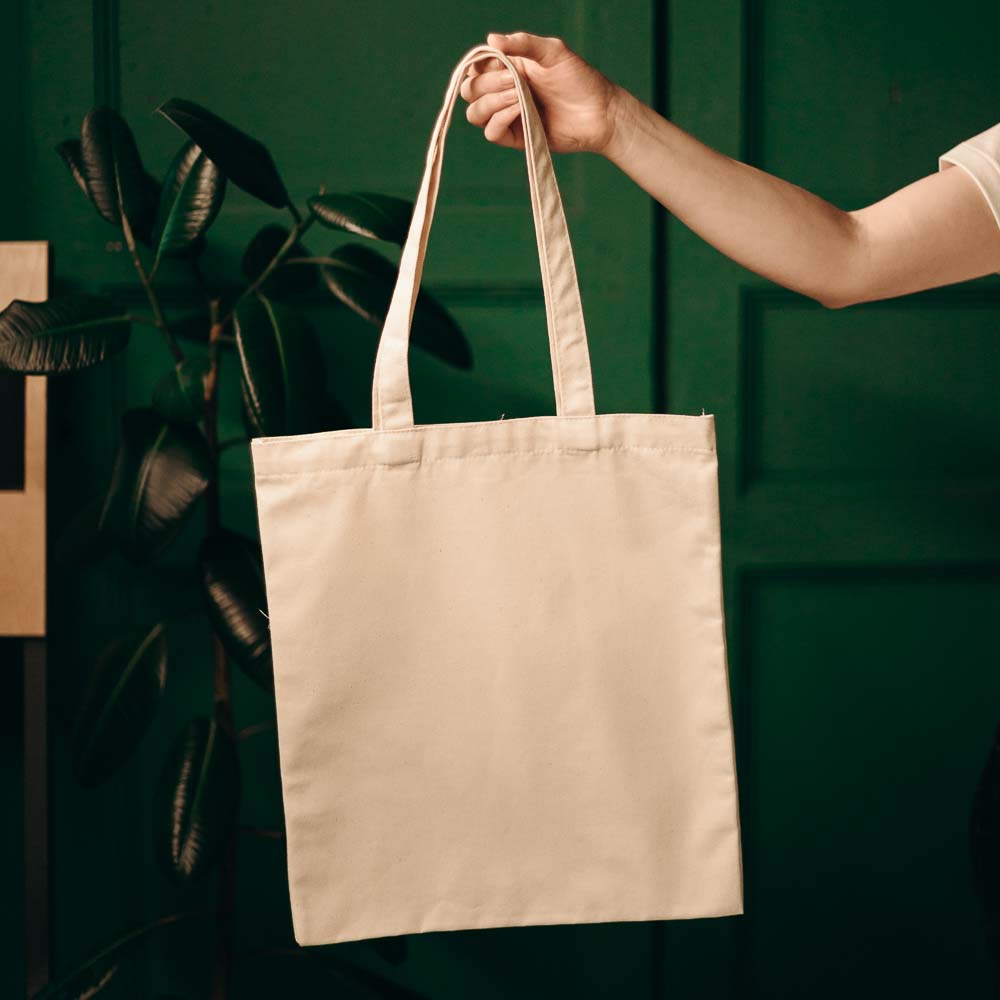
29. Acceptable ID
The legal drinking age is 18 years old in New Zealand and you may be asked to show your ID to prove your age when buying alcohol.
The only forms of ID that are accepted are your passport, a valid New Zealand driver license and the Kiwi Access Card (previously known as the 18+ Card). So, if you are heading out to buy alcohol from a store or ordering from a restaurant, you may want to have your passport with you.
If you are staying in New Zealand for a while, it may be worth getting a Kiwi Access Card instead so you can keep your passport safe.
30. Wi-Fi Can Be Mixed
Wi-Fi in New Zealand may not be as good as what you’re used to back home. Free Wi-Fi in city cafes is usually decent but cheaper accommodations can be slow and may only be for a small amount of data.
The nicer hotels generally have good Wi-Fi but don’t be surprised if it varies from place to place. Sometimes it’s worth paying a little extra for good Wi-Fi.
Some remote areas don’t have access to a network. So, if you’re heading into these areas, such as Milford Sound, be sure to download any maps before you go.
31. Consider Getting a SIM Card
If staying connected is important, you may want to consider getting a New Zealand sim card for your phone. If you plan on sharing your epic adventures on social media and relying on Google Maps to navigate, consider choosing a plan with a lot of network data. You can purchase New Zealand SIM cards at the airport.

32. Plan More Time Than What Google Says
New Zealand highways are often single-lane winding roads outside the main cities and it’s unlikely you’ll be traveling at the maximum speed limit for the entire journey. And even if you could, it may not be the speed you are comfortable doing.
It’s fair to say, it usually takes a little longer to cover the same distance compared to other countries. Plus, I always recommend leaving extra time to pull over and enjoy the scenic stops along the way.
Sometimes Google will take you on the shortest route rather than the easiest and you may end up on some gravel farm or logging road. If you’re traveling to remote areas, just double-check the directions are sticking to the main highways.
33. New Zealand is Expensive
Be prepared for sticker shock. The prices for things such as food and drink are likely to be higher than what you may be used to at home. If you’re traveling from the United States, UK or Europe you’ll at least have the exchange rate from a stronger currency on your side.
Here are some ways to save during your stay:
- Cook some of your own meals . Pak n Save, Countdown and New World are supermarkets you’ll find in the main cities and towns around New Zealand. Pak n Save being the cheapest.
- Check gas prices . Gas prices vary, gas stations at supermarkets or outside of the main cities tend to be cheaper. Just be sure to fill up before heading into remote areas such as Milford Sound. There can be long stretches of driving between gas stations.
- Take advantage of free activities : New Zealand has many free activities, such as hiking, walking tours, and visiting museums. National Parks and beaches all have free access. Take advantage of these to save money and experience local culture.

34. You Can Drink The Tap Water
New Zealand water is safe to drink and you can fill your water bottle up from the tap. I think it tastes pretty good too.
Many parks and walkways have water refill stations. So bring along your reusable water bottle. In fact, some of the rivers in Milford Sound are so pure you can fill your water bottle up straight from the source. Local tour guides will show where it’s safe to do this.
Plus, not having to buy bottled water is another great way to save money.
35. Power Points and Voltage
New Zealand uses Type I plugs for wall sockets which are the same as Australia and the Pacific Islands, and the voltage is 230/240 volts (50Hz). Some of the things you need to plug into the wall for power, such as laptops with a dual voltage power supply, you can use with a decent plug adaptor (a worthwhile investment).
If you’re bringing appliances (such as standard hair dryers) from countries where the voltage is lower, such as the USA and Canada, check that your appliance clearly states it is safe for use up to 240 volts. If not, you will need to use a voltage converter/transformer.

Wrapping Up: Travel Tips New Zealand
There you have it, our top New Zealand travel tips! Visiting New Zealand for the first time is an exciting experience. With so much to see and do, it’s a destination that will leave you with memories to last a lifetime. These top tips for traveling in New Zealand will help you prepare and enjoy your time in this beautiful country. Happy planning and safe travels!
Travel Planning Guide
🚗 Where should I book my rental car?
Renting a car is one of the best ways to get around New Zealand. Public transportation can only get you so far, even in the cities. I always rent with Discover Cars , which checks the prices of all major rental car companies, so you get the best rates.
🚐 What about a campervan?
Renting a campervan is a fantastic way to experience the more remote areas of New Zealand. I really like JUCY because they have a big range of vehicles and locations around the country, which offers more flexibility with pick-up and drop-off. I also like Motorhome Republic , which compares all the campervan options available in NZ.
🎟 Where should I book my tours?
Tours are a great way to experience New Zealand’s top attractions while learning about the area and culture through local guides. We always use Viator and Get Your Guide to find the best tours.
🛏 What’s the best way to book my accommodations?
For hotels and vacation rentals, Booking.com or Expedia.com are the best sites. You can also book through TripAdvisor. If you’re considering renting a house instead, try VRBO which often has good deals.
🛩 What’s the best site to buy flights to New Zealand?
For finding the best deals on flights to New Zealand from around the world, I recommend Kayak.com .
Like this article? Save it on Pinterest so you can find it again.
FOLLOW US on Pinterest and Facebook for more New Zealand travel inspiration and tips!

YOU MIGHT ALSO LIKE

How to Spend a Weekend in Auckland: The Perfect 2-Day Itinerary

10 Best Cruises in Milford Sound

Top 21 Foods in New Zealand You Must Try

Queenstown 3 Day Itinerary: How to Spend 3 Days in Queenstown, New Zealand
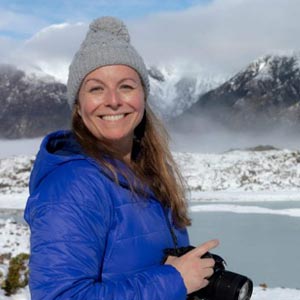
Heather is a travel enthusiast living in New Zealand with her family. She writes about living in and enjoying travel to New Zealand.
Leave a Reply Cancel reply
Your email address will not be published. Required fields are marked *
Save my name, email, and website in this browser for the next time I comment.

Travelling around New Zealand – Your Aotearoa transportation guide
New Zealand is widely recognised as being a friendly, safe country; because of this, there are many options available to travellers looking to make their way around.
Cars, campervans , tours, buses and trains are all common forms of transport within the country – and each has its own benefits and shortcomings.
Join us as we compare different ways of travelling around New Zealand, to establish which modes of transport might best suit your needs.
If you want to know more about Aotearoa, our extensive 101 New Zealand travel FAQs for first-time visitors will surely fill you in. So get ready and start packing your bags for unforgettable journeys that lie ahead of this beautiful country.
When you book through our links, you’ll often get a discount and we may earn a commission. Your support also allows us to run our Facebook communities and create helpful content at no cost to you. Thank you!

Table of contents
Travelling Around New Zealand: Transport Tips To Help You Get Around Aotearoa
How can i get around new zealand.
Travelling by car in New Zealand is very common. In fact, most New Zealanders own their own cars, using them frequently, with many starting to transition to electric, PHEV, and hybrid cars .
Travel by car is also a great option for many tourists.
Travelling by Car
- Driving in New Zealand is safe and fairly easy – we have clear road rules and an orderly manner on the road.
- You’ll be able to stop at any point on your trip to check out points of interest. This is especially handy if you’re travelling with young children. On that note, be prepared with a bunch of fun road trip games if you have little ones in tow.
Disadvantages
- Having a car will limit your ability to fly from place to place (particularly if you choose to buy a car).
- If you’re travelling in a small group (or as a solo traveller), you won’t have many people to share the cost of the car and fuel with – and petrol is a significant cost in New Zealand.
- You’ll need to have a good understanding of the stops you want to make, as without a guide, you might drive right past them.
If you’ve got time on your hands (and the budget), the flexibility and ease of a car makes it one of the best ways to get around.
Should I Buy a Car?
For long-term visitors to New Zealand, purchasing a car is likely to be a great solution to transport needs.
- Purchasing a car be more affordable than a rental in the long-term.
- You’ll be responsible for any issues should the car break down (and if you end up backpacking in New Zealand and buy an affordable ‘backpacker’ car, that’s quite possible).
- You will need to sell your car when you’re due to leave – and you may well have to do so at a loss.
Should I Rent a Car?
By comparison, car rentals are the most common transport solution for short-term travellers visiting New Zealand (that favour the flexibility that cars offer).
- You’ll have support on the phone right away should you encounter any issues.
- If you have a break down, repairs/a replacement will be organised by the car rental company.
- You will have the use of a late-model car that is likely to be safe and comfortable to drive.
- You are able to drop your rental off at one airport , before flying to your next destination and picking up your next rental car.
- If you’re travelling for an extended period, the price of a rental can add up.
- You’ll likely be charged additional fees if you want to pick your rental up from one location and drop it off in another.
What About Car Relocation?
If you’re looking to keep your costs low, are happy to travel at speed, and have flexibility on dates, a car relocation can be a fantastic way to save money whilst getting around New Zealand.
- Car relocation is free or incredibly low-cost (and often comes with a tank of fuel and ferry crossing , if required, too) – won’t that be amazing for your budget?!
- You’ll be held to a fairly tight timeframe. As a general rule, free relocations are over a short period, whereas paid (but cheap) relocations often give you a little more time.
- You may not be able to secure a car relocation deal during your travel dates, as they do not run all the time.
If you’re looking to relocate a car, we first recommend you check out Transfercar as they work with a number of NZ rental operators.
You can also apply for a rental relocation directly through these operators: Thrifty, Ace Rental Cars, Omega Rental Cars, Go Rentals and Juicy Rentals.
What Do I Need to Know About Travelling with Children in a Car in New Zealand?
There are a few things you’ll need to know…
All children under 7 years of age need to be seated in an approved child restraint whilst travelling in a motor vehicle (however, buses are exempt).
It is important to check that your car seat meets our minimum safety requirements (which fortunately includes approved seats from New Zealand/Australia, Europe and the United States).
If you’re unsure of the requirements, we suggest you continue your research , before picking up a lightweight car seat that’s perfect for your next adventure.

Travelling by Campervan
Whether you call it a motorhome, campervan or RV, hiring one of these vehicles can be a wonderful way to combine transport and accommodation.
Plus, Kiwis love camping , so you’ll fit right in!
Whether you choose to rent a campervan or buy one, many enjoy the convenience of combining transport and accommodation in one.
Either way, you’ll want to ensure you have a number of these essential motorhome accessories to make your trip enjoyable.
- You’ll have the flexibility of a car with the added bonus of travelling with a fully-stocked fridge/pantry.
- You won’t need to unpack at each and every stop.
- Save money on accommodation by freedom camping along the way.
- Parking in larger towns can be challenging.
- Motorhomes/RVs are expensive to rent (and even more expensive should you have an accident without an excess waiver on your insurance).
- Some people will not feel comfortable driving such a large vehicle (though it is actually easier than you might expect).
Keen to hire a motorhome in New Zealand?
You’ll want to read this!
Save Serious Money on your RV Hire with Motorhome Relocation
If you’ve got flexibility in your schedule and are happy to see the countryside fairly quickly, a free (or heavily discounted) motorhome relocation could be perfect for you.
Again, we recommend checking out Transfercar to see what’s available across the different RV rental companies.
Likewise, these companies offer direct relocation – Spaceships , Juicy Rentals , Apollo , Wilderness and Hippie .

Travelling New Zealand by Group Tour
If you’d enjoy joining a group of like-minded travellers, whilst experts get you from A to B, an organised small-group tour could be the perfect way to see Aotearoa.
- You’ll be led by a fun, knowledgeable guide to all of the must-see spots in New Zealand.
- You’ll also have a ready-made group of friends, keen to explore alongside you.
- Accommodation is included, and thanks to big-group buying power, you’ll likely pay less for the total tour than you would have for standalone bus tickets and accommodation.
- Increased safety, security and support for independent travellers (in particular, solo female travellers ).
- Take the stress out of organising your own itinerary.
- Set routes can sometimes mean you don’t get as much time in each individual spot as you’d like.
- The initial financial outlay can be significant.
- Departure dates might not be ideally suited to your travel plans.
Tour Companies
We recommend checking out Kiwi Experience (who offer a discount through NZTT), Haka Tours (who also offer a 10% discount) and Stray for wonderful small-group tours.

Travelling by Hop-On Hop-Off Tour
For many, hop-on hop-off bus tours are the ideal solution. They give more flexibility than a standard tour, whilst offering social and cost-saving benefits that are a struggle when travelling solo.
Could this be your preferred way of travelling in New Zealand?
- You’ll have more flexibility than you would on a set tour without the cost of hiring/buying a car by yourself.
- You’ll learn from your guide and enjoy local commentary.
- If travelling with Stray , you’ll have guaranteed accommodation reservations right throughout the year, even in peak season.
- Because people hop-on and hop-off at different times, you may not get to know one guide or group of people very well.
- You’ll also be limited in your ability to stop whenever/wherever you like whilst travelling – in this regard, nothing compares to driving your own car or campervan. They do make a great effort to include worthwhile stops though.
Travelling in New Zealand is like a road-trip experience, we’re pretty flexible. We make stops for the bathroom, food, supermarkets , interesting sights and activities along the way. Stray Adventure Travel
If you’re looking for flexibility whilst travelling the country but don’t want the expense and hassle of travelling solo, a Kiwi Experience (again, you’ll save on all bus passes through us ) or Stray hop-on hop-off bus tour is just the ticket!

Travelling by Public Bus/Coach
One of the most cost-effective ways to travel in New Zealand, public buses and coaches are a reliable way to move about the country.
- Catching normal buses will help keep costs down if you’re travelling solo/as a couple.
- Intercity coach services are more affordable than tourist-focused hop-on/hop-off buses.
- Modern coaches and comfortable and include useful luxuries, such as charging points.
- Normal intercity buses aren’t as social as hop-on/hop-off buses our tours, so your chances of meeting other travellers may not be as great.
- You won’t have flexibility in your route or the ability to make small stops at points of your choice.

Travelling by Plane
Without a doubt, plane travel is the fastest way to move between different regions in New Zealand.
- You’ll obviously move through the country very quickly, giving you more time for fun activities and exploration.
- Flights can be expensive, especially if booked at the last minute. Keep an eye on grabaseat to score yourself a deal, or try to book in advance through AirNZ or Jetstar when possible.
- When you land, you’ll have to rent a car or use a bus service – this isn’t as convenient or affordable if you’ve already got a car elsewhere.

Travelling by Train
Though New Zealand does not have the train network that many other countries enjoy, trains are a great way to travel between some parts of the country.
- Sit back and relax with no need to navigate or drive yourself. Instead, use the time to enjoy stunning scenery, plan the next part of your New Zealand travels or just to enjoy a book or Netflix movie.
- Passenger train transport in Aotearoa is limited with few services running.
- Our trains are relatively slow too – you won’t find any bullet trains here.
- Tourist-centred trains (like the incredible TranzAlpine ) are fairly expensive as they are an attraction in themselves.

Getting Licensed to Drive in New Zealand
If you decide to drive yourself, either of all of part of your visit to New Zealand, you’ll need to ensure that you’re correctly licensed.
What Licence Do I Need to Drive in New Zealand?
Whilst travelling as a tourist in New Zealand, there are three different drivers licence options.
- Use your existing licence (for English licences). Your existing drivers licence (from your home country) is suitable for use in New Zealand. If it’s not issued in English, you will need to carry a translation with you at all times . Suitable for up to 12 months from your date of entry.
- Get a IDP (International Driving Permit) to accompany your non-English licence. Your IDP should be issued before you arrive in New Zealand . This document serves as an official translation for your drivers licence (in and out of a number of languages) and must be carried alongside your home licence to be valid. Suitable for up to 12 months from your date of entry.
- Convert to a New Zealand drivers licence. The least likely option for visitors, this is really only worth considering if you plan to stay in the country for longer than a year. If that’s on the cards for you, you’ll convert your licence with a registered provider in New Zealand and be able to drive without needing a passport or IDP from abroad. Valid indefinitely .
Do I Need an International Driving Permit for NZ?
An IDP is required if your home licence is not in English.
If you have an English-language licence issued overseas, you don’t need an IDP.
Learn more about IDPs well before you depart.
Once you’ve ensured you have the right kind of licence to drive in New Zealand, you’ll want to figure out how exactly you’ll get around.

Is Driving in New Zealand Difficult?
Driving in New Zealand is not difficult; we have similar road rules and mannerisms to many other western countries, including Australia, the United States and the UK.
In New Zealand we drive on the left-hand side of the road at all times and have speed limits that range from 50km/h to 110km/h. If you are driving slowly on the open road, it is wise to pull over to let faster traffic past. When travelling on the motorway (highway), keep to the left unless passing.
Finally, we use roundabouts frequently in New Zealand so it’s worth learning about how to use them safely and efficiently – as a general rule though, you give way to your right.
Basic Road Rules in Aotearoa – Important New Zealand Travel Tips
- Drive on the left hand side of the road at all times.
- Give way to your right . This is especially true at roundabouts; look to your right – if there is a car about to move or already doing so, wait for a gap. Assuming the path to your right is clear, you’re free to go.
- If turning onto a side road, cars doing so without crossing traffic have the right of way . Should you need to cross traffic, you’ll need to wait until you have a suitable gap to do so.
- Whilst on the motorway or a multi-lane road, stay on the left, unless passing . If you do wish to pass another car, move into the right-hand lane, overtake and then return to the left.
- If you’re driving a large/slow vehicle, use the slow vehicle lanes and/or pull over on the open road to allow others to pass.
- Observe the sign-posted speed limits . As a general rule, travel is 50km/hour around residential areas and 100km/h on motorways and open roads. There is a slight tolerance but aim to travel at the posted speed.
- Be mindful of those on bikes . Give them a wide berth, especially on the open road or when driving on a road that has parked cars.
Founder of one of Aotearoa's most popular and helpful Facebook travel planning groups, Sarah shares reliable information and discounts around New Zealand. As an experienced tour guide, travel writer and airline reservations consultant, she enjoys bringing you the best of New Zealand.
Similar Posts

The best Campervan hire companies in New Zealand
Dealing with New Zealand’s mosquitoes and sandflies: A traveller’s guide

13 of New Zealand’s most incredible views

White water rafting in New Zealand: 13 spots to suit all abilities

TranzAlpine Train review: One of the most scenic railways in the world, right here in Aotearoa

What medication can I bring into New Zealand?
10 of the best things to do in New Zealand
Oct 4, 2023 • 8 min read
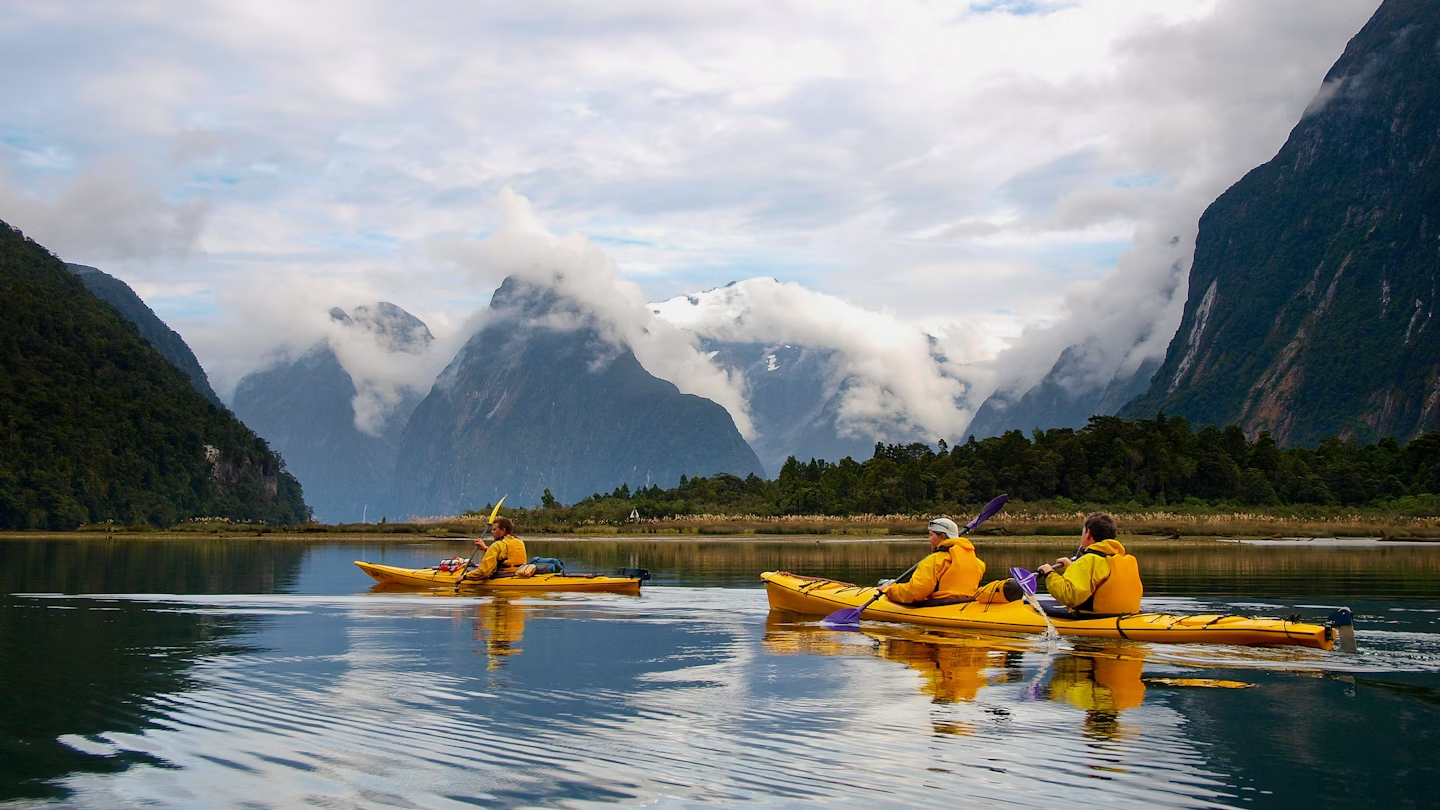
These are New Zealand's unmissable activities © Nicram Sabod / Shutterstock
Spectacular and diverse, New Zealand (also known as Aotearoa) is one of the world's most memorable destinations.
From its inspirational Indigenous Māori cultural experiences to its epic and otherworldly national parks , it can be hard to narrow down what to do. You can spend your days soaking in the urban energy of Auckland and Wellington, challenging yourself on outdoor adventures around Queenstown, cycling through Central Otago’s historic towns and big-sky landscapes or trying to spot the country’s iconic kiwi bird on Stewart Island/Rakiura.
Craft your own southern hemisphere adventure from this list of the best things to do in New Zealand.

1. Experience vibrant Māori culture
There are countless ways to engage with New Zealand’s Indigenous Māori culture while exploring the country. You can expect to hear greetings in te reo Māori (the Māori language) frequently, but for a deeper dive, the Auckland Museum and Waikato Museum both have displays of centuries-old Māori taonga (treasures). Around Rotorua , families from the local Te Arawa iwi (tribe) entertain and energize visitors with cultural performances and experiences, including the opportunity to take part in a haka (a ceremonial war dance made famous by the country’s All Blacks rugby team) or experience a hāngī (a Māori feast cooked in the ground).
Detour: From Rotorua, travel 61km (38 miles) southeast to the isolated logging town of Murupara. Stays at the family-owned Kohutapu Lodge include excursions to catch tuna (endemic longfin eels), visits to historic Māori rock art sites and hiking through the Whirinaki Te Pua-a-Tāne Conservation Park, a spiritually significant site said to be one of the world’s last prehistoric forests.
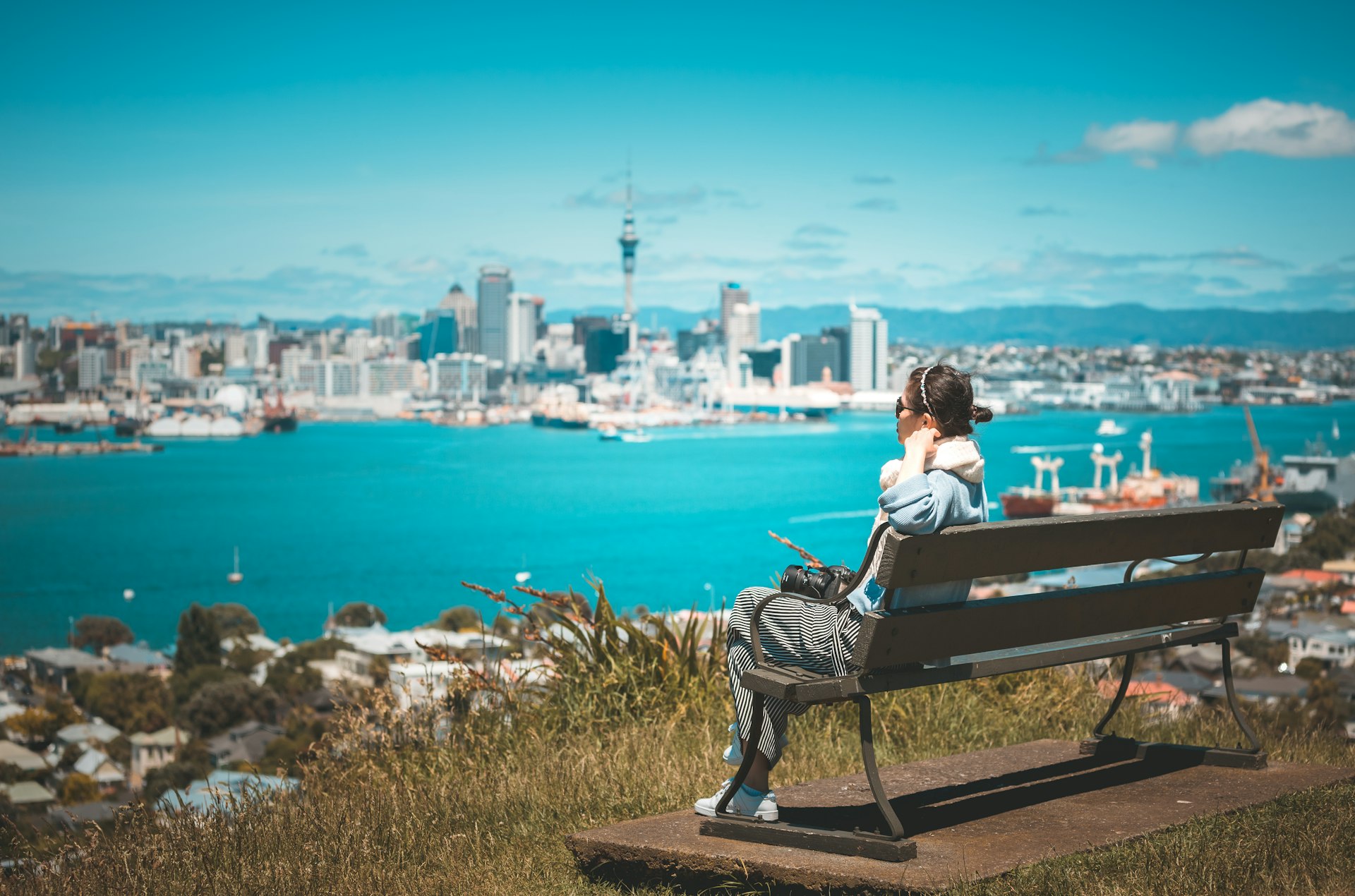
2. Be immersed in Auckland’s diversity
Framed by two harbors and built on the sprawling remnants of more than 50 long-inactive volcanoes, Auckland is New Zealand's most diverse and cosmopolitan city. Visit the weekly Otara and Avondale markets to taste Pacific and Asian cuisine from communities drawn to Tāmaki Makaurau (the Māori name for Auckland). Or time your visit to experience popular cultural events including Pasifika , Diwali and the Lantern Festival. Good beaches, nearby wine regions, and a dynamic dining scene are other reasons why Auckland is consistently rated one of the world's most liveable cities.
Planning tip: Join Auckland’s most passionate fans while taking in a match featuring the New Zealand Warriors (a rugby league team) or the Auckland Blues (a rugby union team).

3. Hike one of New Zealand’s Great Walks
Hiking (known as “tramping”) is one of New Zealand’s most popular pastimes, with well-established wilderness tracks, shelters (called “huts”) and campsites throughout the country. Highlights include the meandering forest trails of the Rakiura Track on compact Stewart Island/Rakiura and the beach-fringed Abel Tasman Coast Track in the Nelson/Tasman region. Anchoring the rugged geothermal heart of the North Island, Tongariro National Park's most popular trail is the Tongariro Alpine Crossing , a single-day wilderness experience skirting two volcanoes and taking in views of craters, iridescent lakes and the sprawling Central Plateau.
Planning tip: All of New Zealand's 10 (soon to be 11) Great Walks are very popular, and New Zealand's Department of Conservation (DOC) caps visitor numbers at a safe and sustainable level. To secure your spot, you’ll need to book in advance when the Great Walks booking system opens , usually from around May. The Great Walks season runs from late October to April, and the most popular experiences like the Milford and Routeburn Tracks often sell out in minutes. If you miss out; don’t worry. There are hundreds of other trails throughout the country to explore.
4. Negotiate a two-wheeled adventure in Central Otago
New Zealand's first – and arguably best – multi-day cycling experience is the Otago Central Rail Trail . An undulating ride through sunbaked southern landscapes and the heritage streetscapes of former gold-mining towns, it takes four to six days to complete. Along the way, you can feast on locally grown summer stonefruit, visit contemporary vineyards known for world-class pinot noir, and toast the end of each day with a well-earned beer at historic pubs. E-bikes are a convenient option to maximize your enjoyment of this classic South Island experience, with operators throughout the region offering rentals and guided tours.
Detour: Linking the towns of Cromwell and Clyde, the 55km (34-mile) Lake Dunstan Cycle Trail traverses the spectacular Cromwell Gorge via an 85m-long (279ft) suspension bridge and a spectacular cantilevered wooden biking track.

5. Seek out kiwis on Stewart Island/Rakiura
At the southern tip of the South Island, Stewart Island/Rakiura is New Zealand's third-largest island, home to a rugged community of around 400 hardy souls, where 85% of the land is protected by Rakiura National Park . Birdlife around Stewart Island/Raikura and the adjacent islet of Ulva Island includes rare hoiho (yellow-eyed penguins), raucous kākā (a type of parrot) and mellifluous bellbirds. However, the undoubted avian highlight is viewing tokoeka (Southern brown kiwi) in the wild. Join a twilight expedition with local operators including Beaks & Feathers and Ruggedy Range Wilderness Experiences to see Aotearoa's beloved national bird snuffling about on beaches and in the forest. Visit from March to September to also potentially glimpse the aurora australis (southern lights), the inspiration for Stewart Island's Māori name: Rakiura, which means “glowing skies.”
Planning tip: Ferries take one hour to cross the Foveaux Strait from Bluff on the mainland to Stewart Island/Rakiura. The crossing can sometimes be rough, so an alternative is a 20-minute flight from Invercargill.
6. Commune with marine mammals around Kaikōura
Attracted by the nutrient-rich waters of the Kaikōura Canyon – a submarine valley just 800m (2624ft) off the east coast of New Zealand’s South Island – the coastal town of Kaikōura is visited by various whale species throughout the year. Join a boat trip with Whale Watch Kaikōura , owned and operated by the local Ngāti Kuri iwi (Māori tribe), to see visiting humpback, orca, southern right and pilot whales. Resident marine mammals include sperm whales, dolphins and kekeno (New Zealand fur seals). The pelagic birdwatching here is also some of the best on the planet.
Planning tip: Kaikōura translates from te reo Māori as "eat crayfish". The spiny crustacean is a popular item on pub menus and roadside food caravans around the region. Try one at Nin’s Bin or Kaikōura Seafood BBQ .

7. Have a capital time in Wellington
Compact and walkable, New Zealand’s harbor capital of Wellington is the ideal urban destination to balance and complement adventures in Aotearoa’s great outdoors. Explore the city’s pioneering craft beer heritage at local breweries including Garage Project, Heyday and Parrotdog, before learning about the movie-making magic of The Hobbit and Lord of the Rings franchises at Wētā Workshop . The nation’s capital also boasts a vibrant arts and live music scene, with free events hosted throughout the year.
Planning tip: Visit (and book accommodation well ahead) for the Beervana craft beer festival in August. Also popular is Wellington on a Plate (WOAP), an annual celebration of the city’s dynamic culinary scene.
8. Explore architectural history in Hawke’s Bay
Rocked by an earthquake in 1931, the Hawke’s Bay cities of Napier and Hastings were rebuilt in the popular architectural styles of the day, and now the region boasts some of the world’s best-preserved art deco and Spanish Mission architectural precincts. From Napier’s Norfolk pine-trimmed Marine Parade, join a walking tour of the city’s cavalcade of art deco buildings, some also decorated with the cross-cultural influence of traditional Māori design motifs.
Detour: New Zealand winemaking began in Hawke’s Bay in the 1850s, and the region’s well-established vineyards and excellent winery restaurants are best explored on two wheels. See On Yer Bike online for details of bike hire and recommended wine trails.
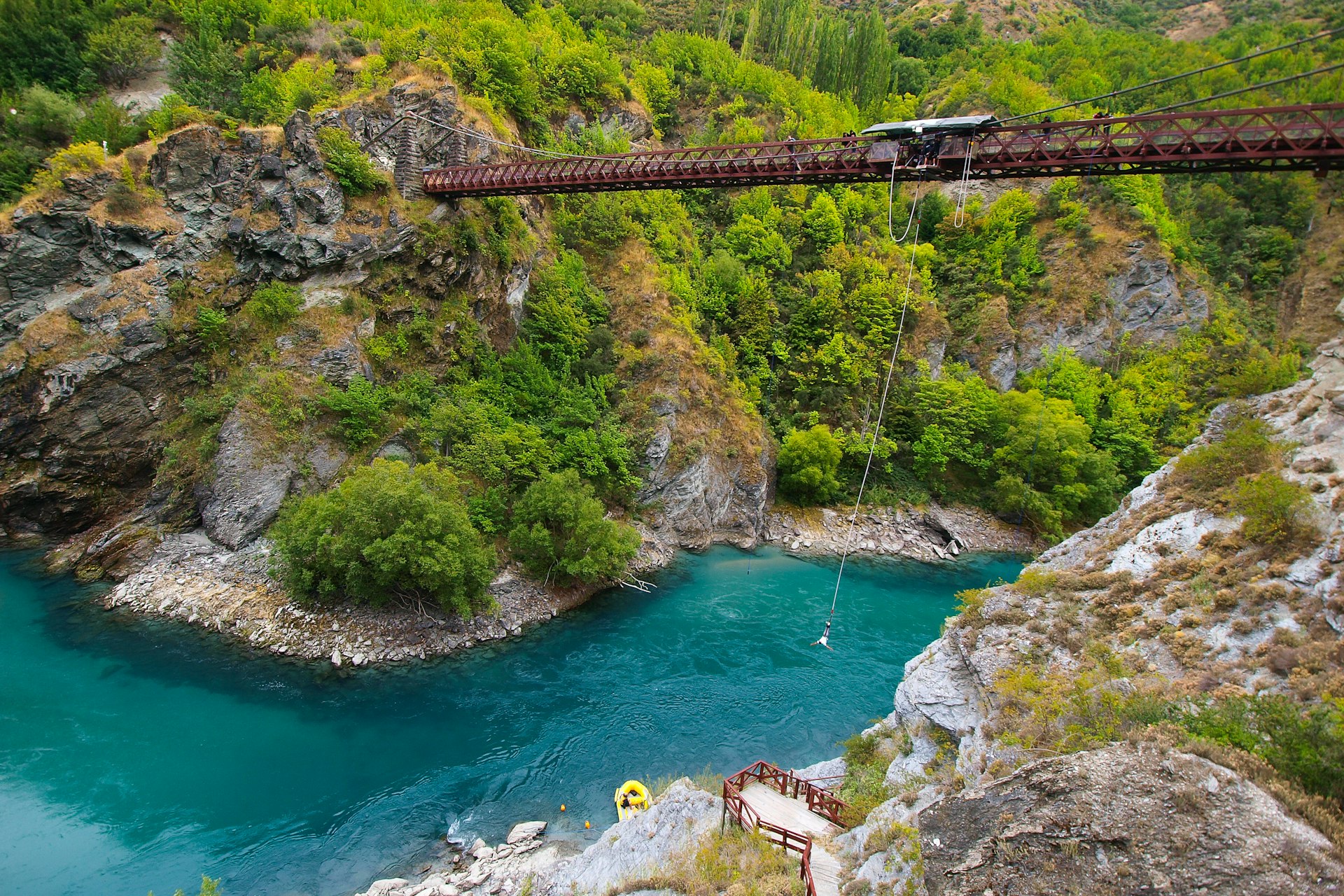
9. Get active around Queenstown
Nowhere else in New Zealand reinforces the country’s reputation for adrenaline-fuelled adventure activities like Queenstown . Amid beautiful lake and sub-alpine scenery, definitely sign up for a bungy jump . (It’s almost mandatory – the breathtaking leap of faith was invented in New Zealand, after all.) You can also consider other thrill rides like Oxbow Adventures ’ exciting combo of jet sprint boats (which can reach up to 100km/h, or 62mph, in just 2.5 seconds) and extreme 4WD offroading. After all the action, adjourn to Altitude Brewing ’s lakeside location for great beers and tasty visits from local food trucks.
Detour: Reached via a scenic road over the Crown Range, Wānaka is Queenstown’s less manic Southern Lakes sibling. Catch a boat on Lake Wānaka to explore the island bird sanctuary of Mou Waho .
10. Kayak in pristine Fiordland
Cruising through Milford Sound /Piopiotahi on a day trip is popular, but a better strategy for experiencing the scale, spectacle and stillness of Fiordland ’s most famous sheltered anchorage is to explore it by kayak. Hook up with Roscoe’s Milford Kayaks for the ultimate on-the-water views of the fiord’s cascading quicksilver waterfalls and massive forest-covered cliffs. Sunriser classic tours loop for 10km (6 miles) around Milford Sound and depart well before the inevitable arrival of daytrippers visiting from Te Anau or Queenstown.
Detour: Fiordland’s Doubtful Sound/Patea (meaning "place of silence" in te reo Māori ) is even quieter and less visited than Milford Sound/Piopiotahi. Join a guided kayak tour with Te Anau-based Doubtful Sound Kayak or stay overnight on the MV Fiordland Jewel with Fiordland Discovery .
This article was first published Apr 22, 2021 and updated Oct 4, 2023.
Explore related stories
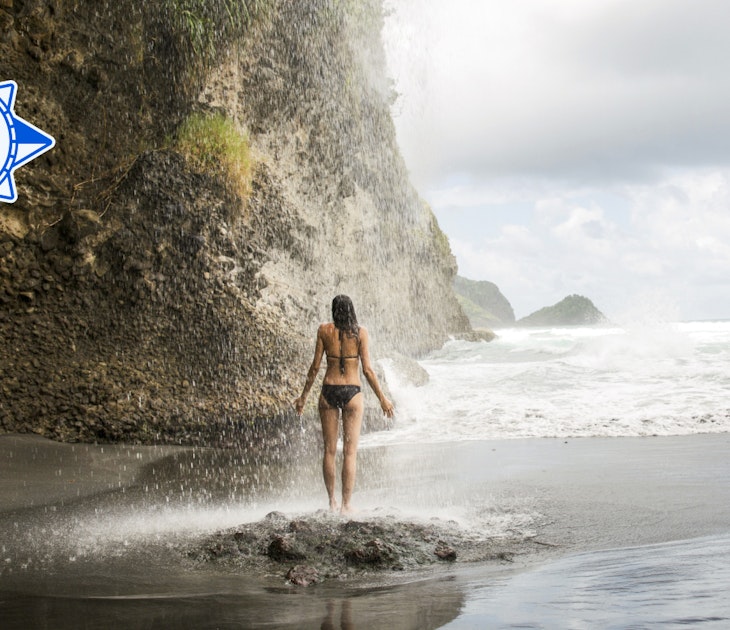
Wildlife & Nature
Feb 27, 2024 • 6 min read
April is the ideal time of year for mild-weather hikes, cherry blossom festivals, fresh produce and more.
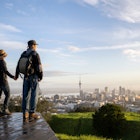
Oct 8, 2023 • 8 min read

Jul 14, 2023 • 4 min read
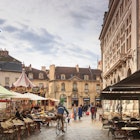
Jul 3, 2023 • 8 min read
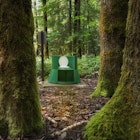
Apr 6, 2020 • 6 min read
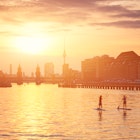
Oct 4, 2019 • 6 min read
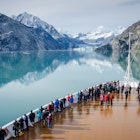
Jan 2, 2019 • 7 min read
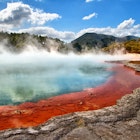
Oct 26, 2018 • 4 min read

Dec 21, 2016 • 5 min read

Apr 7, 2016 • 5 min read

How to Get Around New Zealand on a Budget
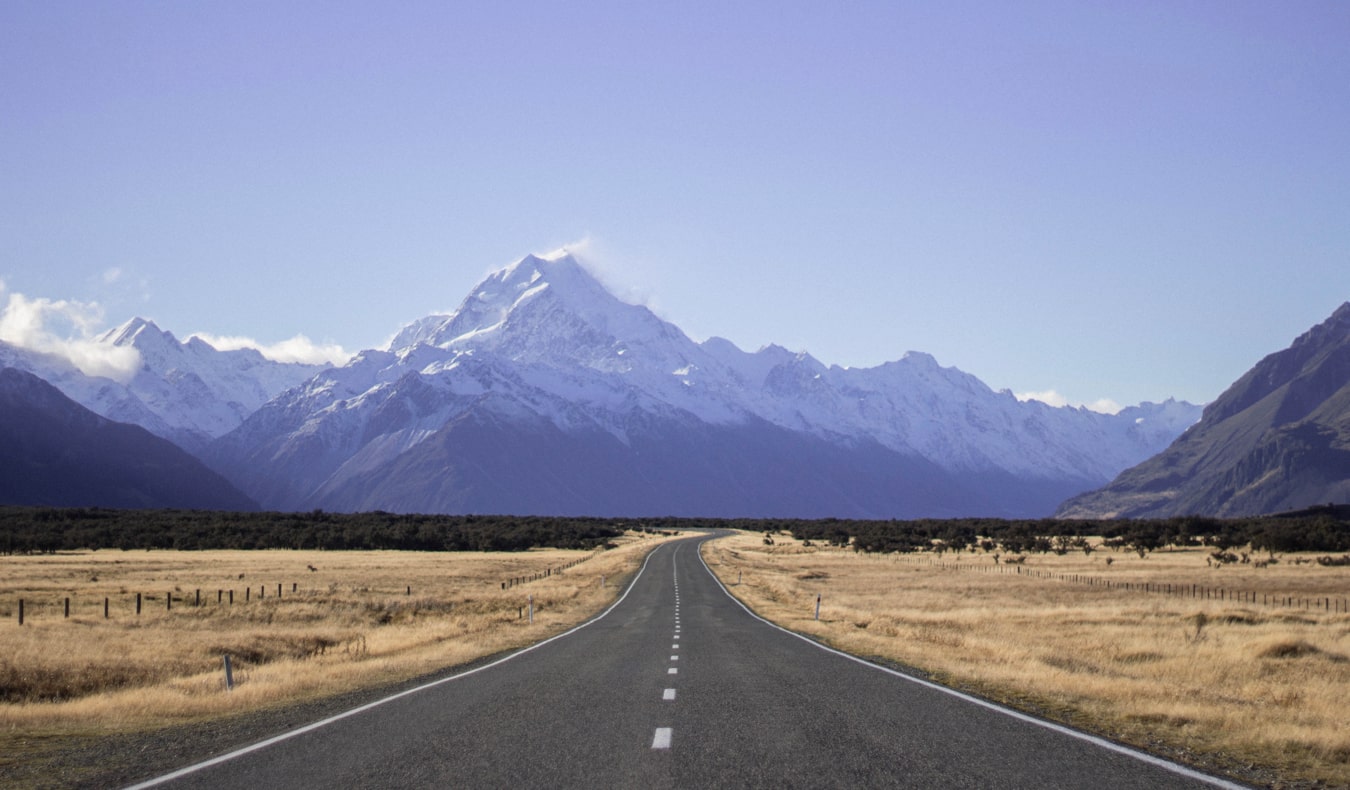
New Zealand is an easy country to navigate. Buses go everywhere, cars constantly pick up hitchhikers, campervans are easy to rent, and backpacker bus tours zigzag around the country.
Plus, there are scenic trains and plenty of domestic flights for those needing to save time.
In short, there’s no shortage of transportation options.
On my last trip to New Zealand, I used almost every one of these options. Today, I want to share the pros and cons of each (as well as some estimated prices) so you know how to get around New Zealand in the most cost-effective and efficient way possible!
Table of Contents
Backpacker Tours
Campervans and car rentals, hitchhiking/ridesharing.
One of the most popular ways young travelers navigate New Zealand is by backpacker bus. These buses offer a hop-on/hop-off service that allows travelers both the flexibility to go at their own pace and the convenience of having activities and accommodations organized for them. New Zealand has two major hop-on/hop-off buses: The Kiwi Experience and Stray.
The Kiwi Experience – The Kiwi Experience is the biggest and most popular backpacker bus in New Zealand. It attracts mainly young gap-year travelers. I like how they go out of their way to make sure everyone socializes and gets to know each other: the drivers play a lot of games and icebreakers, and there are group dinners most nights.
The downside is that: (a) the buses seat around 55 people, and when they’re full, they get a little bit cliquey (and during the busy season, the bus is pretty much always full); and (b) the passengers are really focused on getting drunk (the bus’s affectionate nickname is “The Green Fuck Bus”), hence why so many young people take it. I’d say if you’re 25 or younger (or just looking for a party), this bus is for you.
Tours range from 2-28 days and cost between 99-1,759 NZD per person for hop-on/hop-off tours while small group tours range from 2-18 days and cost between 1,649-3,949 NZD per person.
Stray Travel – Stray has smaller buses, providing a more intimate setting and making it easier to meet people. While there are many gap-year travelers on the bus, Stray also gets older, independent travelers. The bus drivers don’t play as many games or have as many icebreakers, making it a bit awkward when you first step on the bus alone and aren’t an extrovert.
If you aren’t really looking to party a lot or want to spend time with more mature travelers, Stray is for you.
Tours range from 8-24 days and cost between 2,765-5,945 NZD per person.
For small-group tours that cater to more than just the backpacker crowd, check out Haka Tours . They offer some epic adventure tours all around the country and are a good choice for travelers looking to get their adrenaline pumping. Adventure and Snow Tours range from 3-23 days long and cost between 699-4,999 NZD. Their premium 20-day tour costs 7,499 NZD.
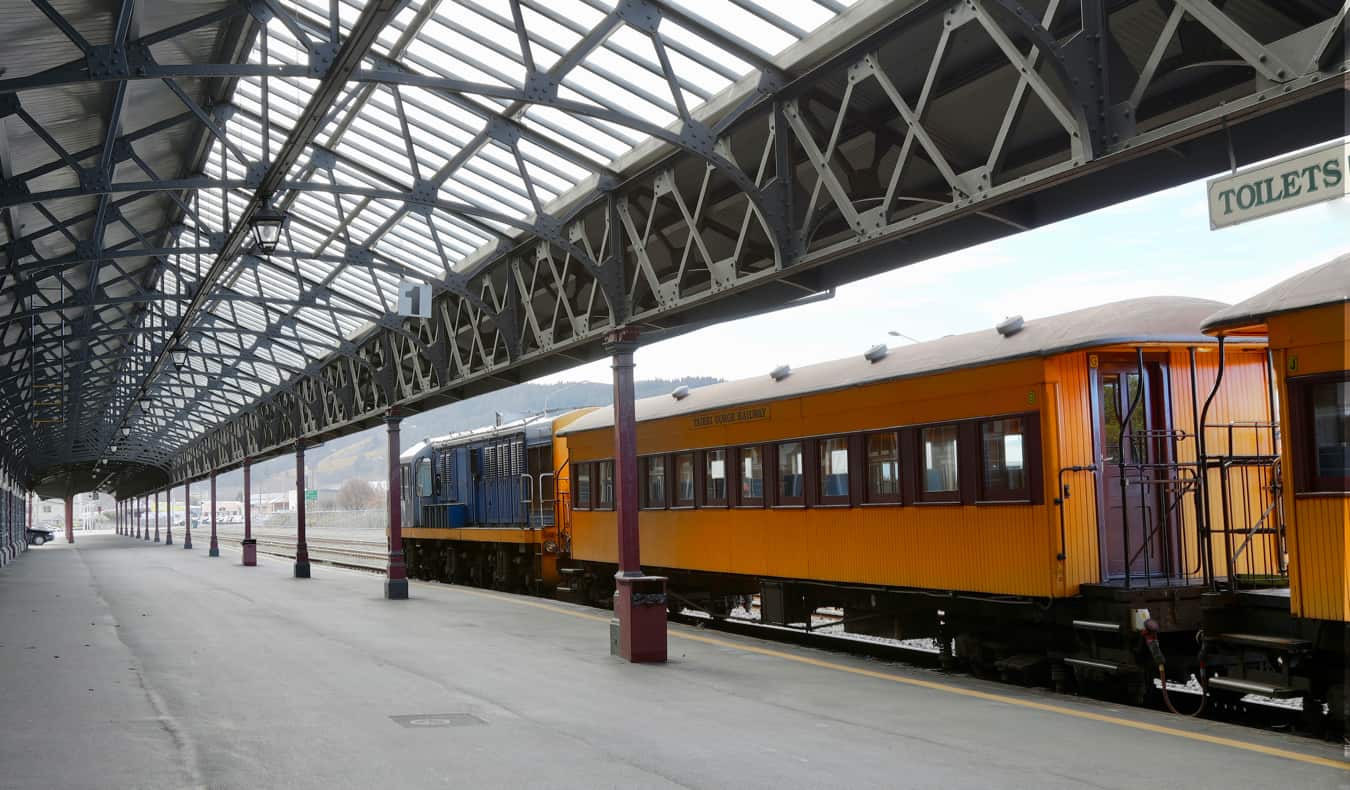
Here are some example prices (in NZD). Just keep in mind that prices vary each season:
Prices vary based on when you book and whether you’ll be traveling in high or low season. Expect prices to be upwards of 50% more expensive if booked last minute (if there are even spots available, as these fill up fast).
I took the TranzAlpine across the South Island. It had been a dream of mine to do since my first visit in 2010 and I loved every minute of it. It lived up to all the hype. You pass rivers and mountains, cross gorges, and roll through vibrant green farmland. It was a really peaceful, informative, and scenic way to get across the South Island, and made me wish there were more trains around the country (come on, NZ, you can do it!).
This isn’t the most efficient or cheapest way to get around (heck, the Northern Explorer from Auckland to Wellington is 11 hours!) but it’s worth every penny. It’s an incredibly scenic way to see the country.
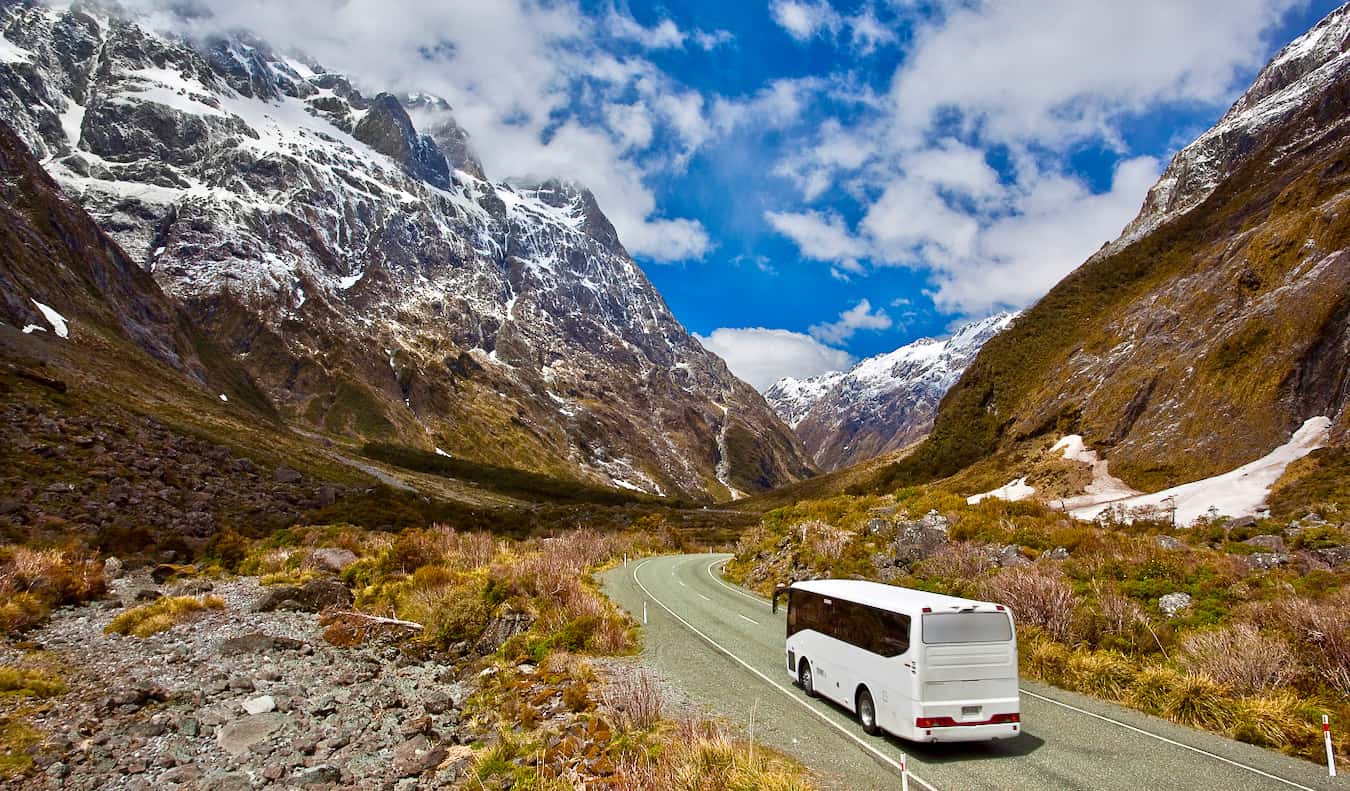
InterCity, New Zealand’s largest public bus network, is your main option. Skip Bus, a low-cost coach bus similar to Megabus, is available on the North Island and has over a dozen stops, making it another budget-friendly choice if you’re shopping for tickets. Keep in mind they have specials on “Go tickets” so you can get discounts between certain destinations and routes.
These are some example InterCity ticket costs for sample routes to help you budget (prices in NZD):
Prices exclude booking fees.
InterCity has two travel passes, both of which valid for up to 12 months: FlexiPass, an hours-based bus pass (10-80 hours) designed for backpackers and independent travelers; and the TravelPass, a fixed-route pass that’s only good for spots on that specific route.
FlexiPasses range from 10 hours (139 NZD) to 80 hours (641 NZD). You can top up your hours if you run out. The TravelPass has 14 different options and costs between 125-1,045 NZD.
With the InterCity TravelPass, you can stop anywhere along the route. For example, if your pass includes travel between Picton and Christchurch, you could do Picton to Blenheim, Blenheim to Kaikoura, and Kaikoura to Christchurch all on one trip.
I bought a 15-hour FlexiPass. Adding up my journeys on the South Island individually, the price of my tickets would have been 172 NZD. I paid 136 NZD so the pass did save me money. However, there’s a caveat: you can only use the FlexiPass on InterCity buses, and on the South Island they contract out a lot of routes, so I couldn’t use my pass on most of the routes to Milford Sound, Mt. Cook, or Bluff (to get to Stewart Island).
So what’s a traveler to do?
If you’re booking far in advance and getting the cheap discount fares, don’t buy a pass. I’d also skip the big fixed-route pass, as they don’t offer value when compared to other giant passes or tour operators.
I’d buy a FlexiPass since it is hours-based and valid for up to twelve months. Combine that with other cheap tickets bought far in advance, ridesharing, or anything else. Mix and match what you do for optimal savings. Use the pass for expensive routes and cheaper options for other, shorter routes!
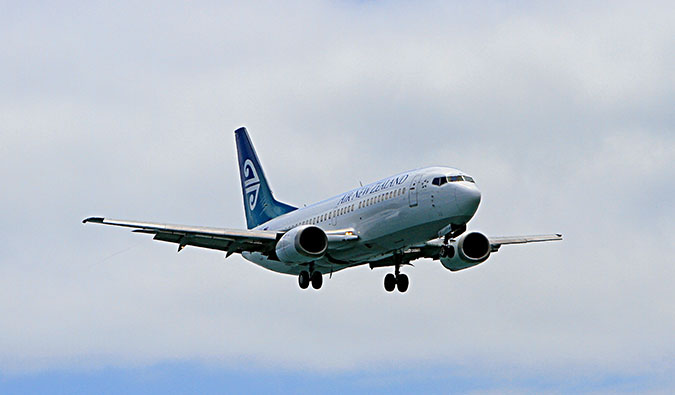
Here are prices for some popular one-way routes when booked in advance (prices in NZD):
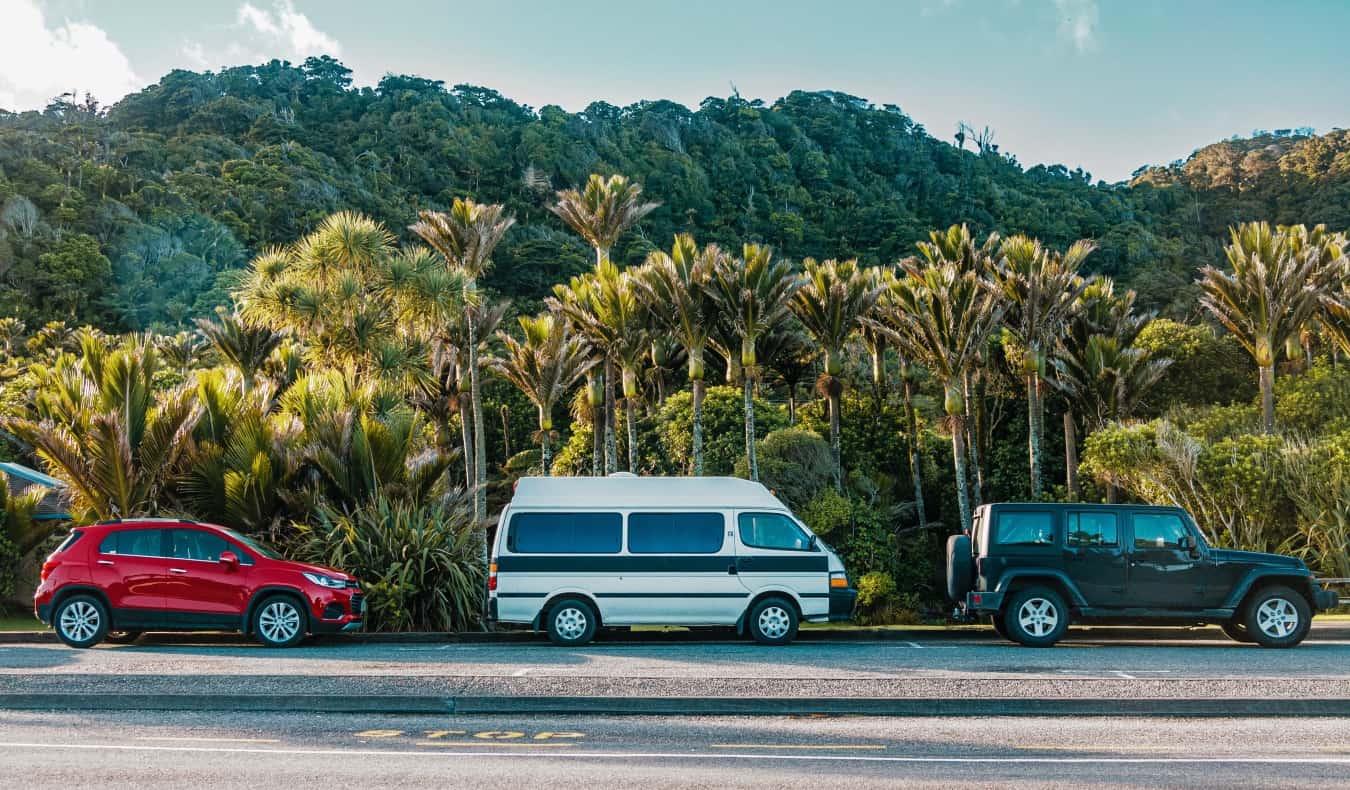
- Travellers Autobarn
- Wicked Campers
Jucy is the most dominant in the country; I saw more of its cars and vans than any other company.
Prices vary a lot . Your daily rate will change depending on where you pick the vehicle up, if you are dropping it off at a different place, how long you are renting it for, how far in advance you book, and when you book (going during the high season? Prices seem to double!). You need a degree in accounting to figure out how these companies price their cars!
Here are sample daily rates for when you pick up and drop off at the same location (prices in NZD):
Here are sample daily rates for when you pick up and drop off at a different location. Keep in mind some places charge you a flat drop-off fee or a one-way fee (150-250 NZD) in addition to the daily price:
If you drive, getting a campervan is one of the most economical ways to get around. You’ll be able to use your van/car as accommodation, pick up travelers to split the cost of gas, and maybe find travel partners to split the cost of the vehicle itself.
If you are spending 70 NZD per day for a Jucy campervan that can fit three people, that’s a savings of up to 50% compared to a hostel and daily bus ride, which will set you back 30-50 NZD a day.
If you use a campervan, be sure to download the awesome Campermate app, which helps you find nearby campsites, gas stations, and dump stations.

Additionally, you can just ask around any hostel for a ride — everyone is doing the same circuit and will be happy to have another person to split gas costs with. Hostels usually have boards where you can find rideshare offers as well. I hitchhiked from Wanaka to Queenstown to Fiordland on a whim and didn’t have any trouble (I saw tons of other backpackers doing the same thing as well).
You can find rides on websites like Craigslist , CoSeats , and Carpool World . Check out HitchWiki for more tips.
There are a lot of ways to get around New Zealand . If you’re OK driving, rent a car or campervan. Don’t want to drive? Bus it or get rides with other travelers — someone is always looking to split the cost of gas!
No matter what, you’re not going to have trouble getting from point A to B, even if you wake up and need transport that very day! New Zealand is an easy country to travel and, with some planning, it doesn’t have to break the bank !
Book Your Trip to New Zealand: Logistical Tips and Tricks
Book Your Flight Use Skyscanner to find a cheap flight. They are my favorite search engine because they search websites and airlines around the globe so you always know no stone is left unturned!
Book Your Accommodation You can book your hostel with Hostelworld as they have the biggest inventory and best deals. If you want to stay somewhere other than a hostel, use Booking.com as they consistently return the cheapest rates for guesthouses and cheap hotels. My favorite places to stay are:
- Nomads (Queenstown)
- Urbanz (Christchurch)
- Rainbow Lodge (Taupo)
If you’re looking for more places to stay, here is a complete list of my favorite hostels in New Zealand .
Don’t Forget Travel Insurance Travel insurance will protect you against illness, injury, theft, and cancellations. It’s comprehensive protection in case anything goes wrong. I never go on a trip without it as I’ve had to use it many times in the past. My favorite companies that offer the best service and value are:
- Safety Wing (for everyone below 70)
- Insure My Trip (for those over 70)
- Medjet (for additional repatriation coverage)
Looking for the Best Companies to Save Money With? Check out my resource page for the best companies to use when you travel. I list all the ones I use to save money when I’m on the road. They will save you money when you travel too.
Want More Information on New Zealand? Be sure to visit our robust destination guide on New Zealand for even more planning tips!
Hi, I’m Nomadic Matt, the New York Times best-selling author of How to Travel the World on $50 a Day and Ten Years a Nomad, as well as the founder of this website! And I’m here to help you save money on your next trip.
Got a comment on this article? Join the conversation on Facebook , Instagram , or Twitter and share your thoughts!
Disclosure: Please note that some of the links above may be affiliate links, and at no additional cost to you, I earn a commission if you make a purchase. I recommend only products and companies I use and the income goes to keeping the site community supported and ad free.
Related Posts
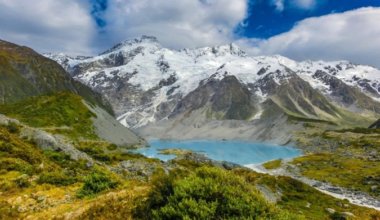
GET YOUR FREE TRAVEL STARTER KIT
Enter your email and get planning cheatsheets including a step by step checklist, packing list, tips cheat sheet, and more so you can plan like a pro!


The BEST New Zealand Road Trip Itinerary in 2024
- Last Updated: April 10, 2024
Read on for an epic New Zealand road trip itinerary for a bucket list journey of a lifetime!
New Zealand is spectacular. At times it seems as though there is picture-postcard scenery at every turn.
For many travellers, a New Zealand road trip is pretty close to the top of their travel bucket list.
Whether you’re hiring a campervan or car, exploring New Zealand with your own set of wheels is the best way to experience this rather stunning area of our planet.
The North Island and the South Island both offer incredible scenery and attractions for a New Zealand road trip.
Whether you plan to explore one or both islands, we’re going to dive into the top things to see and do in New Zealand for an epic road trip.
Table of Contents
Where to Start Your New Zealand Road Trip
Driving in new zealand , hiring or buying a vehicle, responsible travel in new zealand, how long is this new zealand road trip , bay of islands and the northland, coromandel peninsula , mount maunganui and rotorua , lake taupo and the tongariro national park , waitomo and the forgotten world highway , mount taranaki to wellington , ferry crossing from wellington to picton, picton to the abel tasman national park , abel tasman national park to kaikoura, kaikoura to the west coast via the arthurs pass national park , hokitika to haast , haast to wanaka, wanaka to queenstown, queenstown to milford sound or doubtful sound, the sounds to the catlins national park , catlins national park to the otago peninsula , otago peninsula to mount cook national park, mount cook to akaroa, akaroa to christchurch , planning your new zealand road trip.
Before you can get started on your New Zealand road trip we want to walk you through a few decisions you’ll need to make.
We’ll discuss transport and safety on the roads, as well as responsible travel. We want to provide you with a little information that will make your road trip safer and more enjoyable.
Then we’ll talk about the highlights of both the North Island and the South Island of New Zealand so you can plan your road trip itinerary!
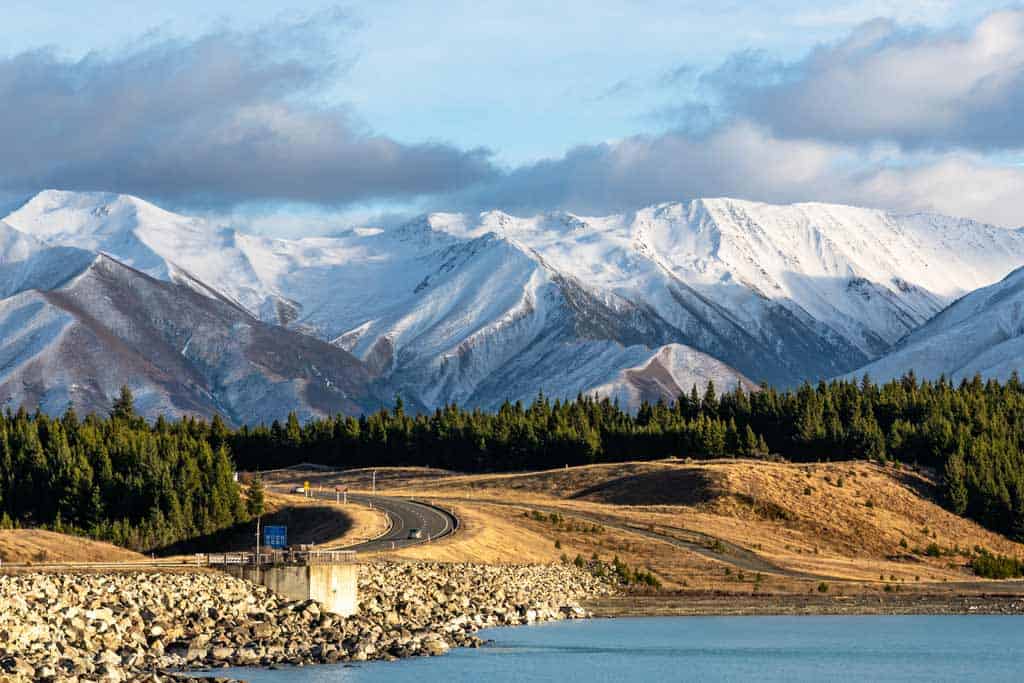
Most people will fly into Auckland on the North Island and make their way south, or fly into Christchurch on the South Island and make their way north or further south for their New Zealand itinerary.
For this New Zealand road trip itinerary, we’re going to start in Auckland and finish up in Christchurch .
However, any New Zealand road trip itineraries can also be done in reverse. The Christchurch to Auckland route can sometimes result in cheaper rental fees due to it being less popular than Auckland to Christchurch.
Before embarking on a New Zealand road trip it’s worth doing some research to get to know the road system a little better.
First, in New Zealand, you drive on the left-hand side of the road. This is not a great surprise as it was formerly part of the British Empire.
Second, you should expect the roads to be narrow and very windy. Driving in New Zealand is not like driving on the open highways of the USA or Australia.
Expect journeys to take much longer than they would in your home country.
Roads are in excellent condition and people in New Zealand are generally very courteous drivers.
However, during peak travel seasons don’t be surprised if you find yourself behind a huge 6 berth camper van at some point.
Road conditions are a super important thing to consider when planning a road trip anywhere, but especially on a New Zealand itinerary!
This really depends on how long your New Zealand itinerary will be. If you’re buying a vehicle you will need to add time to the beginning and end of your road trip.
Generally, if your New Zealand itinerary is 6 weeks or less it’s not really going to be cost or time effective to buy a vehicle.
If you have longer than that, however, buying may be the best option.
So get the calculator out and start the number crunching.
The best way to get around is to rent a car and explore on your own! We recommend Rental Cars , which has the largest range of vehicles for the best value on the market.
“Freedom camping” is limited to certain locations and self-contained vehicles.
If you’re self-contained, this means that you can go for three days or more without dumping waste or water, have a toilet, fresh and wastewater storage and a rubbish bin with a lid.
There are clear signs where you can and cannot freedom camp and what the vehicle requirements are.
Sadly there are a small number of people that continue to spoil it for everyone by freedom camping where they shouldn’t.
Or they freedom camp in vehicles which are not self-contained or they leave their rubbish for someone else to clear up.
Please don’t be one of these people.
New Zealand road trip itineraries can last as long or short as you want. We want to share some awesome road-tripping ideas from across the country that can be pieced together as you see fit.
We also have a New Zealand itinerary post that takes you through 1, 2 and 3-week itineraries. You may find this useful in planning how much time to spend in which destinations throughout. Check it out !
Important Note! Before you book any international trip, we honestly recommend getting travel insurance. You never know when things will go wrong, and medical bills can add up quickly if you get sick or injure yourself overseas.
Our personal recommendation based on our own experience is World Nomads .
New Zealand Road Trip Itinerary – North Island
You’ll begin this New Zealand road trip itinerary on the North Island in Auckland. From here we’ll take you the length of both islands.
Click here for a Google Map of the North Island road trip itinerary
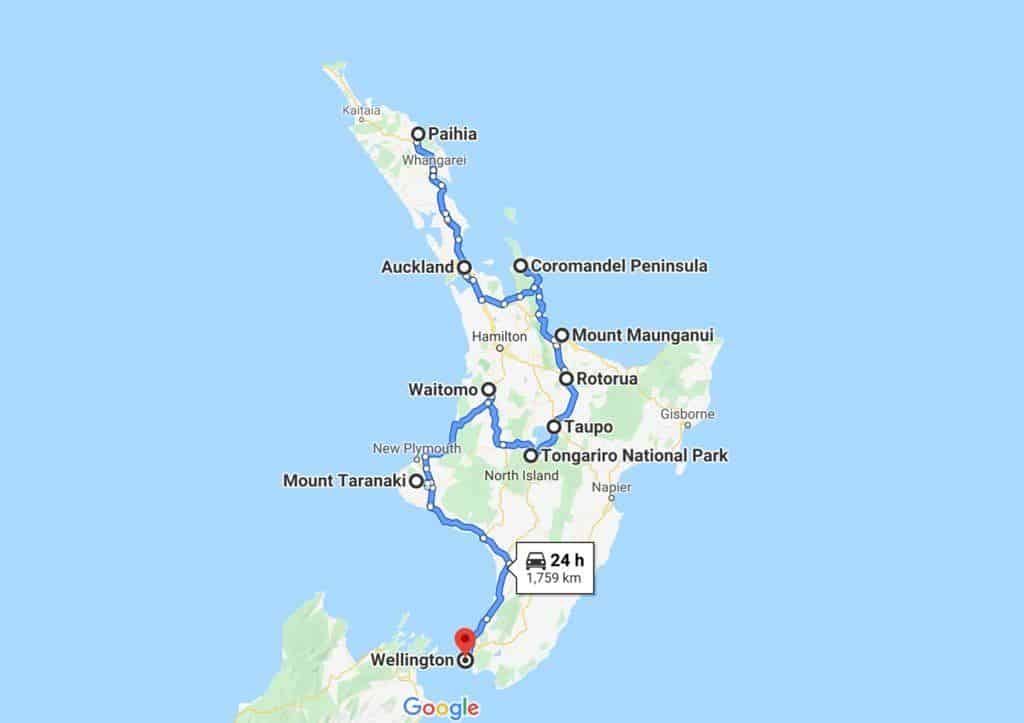
Spend your first couple of days getting over the jet lag and exploring New Zealand’s largest city. Check out the Sky Tower as well as the Auckland Museum and Art Gallery.
Take a day to get out of the city and explore the city’s beaches and hiking routes before picking up the keys to your vehicle and heading out onto the open road.
READ MORE: How to travel Auckland like a local !
From Auckland head north to the Bay of Islands. The towns of Paihia and Russell are big draws here.
However, en route make sure you visit the spectacular Tutukaka Coast .
This stunning stretch of coastline is rarely visited and with numerous deserted beaches and awesome views, it offers something very different from Paihia and Russell.
From the Bay of Islands, you can continue heading north towards Cape Reinga and Ninety Mile Beach.
This off-the-beaten-track area of New Zealand is particularly breathtaking. However, it is noticeably economically depressed in parts.
The vast majority of people lack the time to make it this far as it’s another day’s drive from the Bay of Islands.
If you have the time it’s well worth it, but if your time is limited then you may wish to spend it elsewhere.
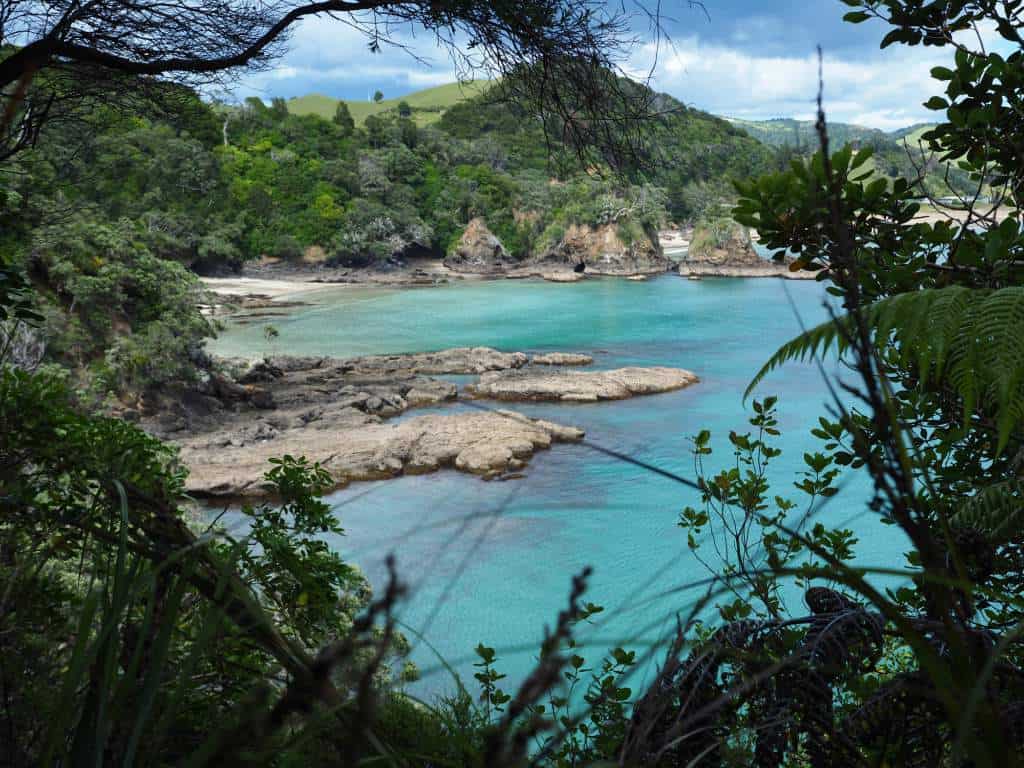
From the Bay of Islands, double back on yourself and loop around Auckland before arriving at the base of the Coromandel Peninsula.
Many people will skip this and head on to Taupo or Rotorua.
However, doing this will mean you will miss out on one of New Zealand’s most incredible yet secret destinations.
One of the highlights of this part of New Zealand is quiet coastal roads that at points hug the ocean’s edge. As you begin to circle around the end of the peninsula you head up into the hills offering some lovely views.
There is some stunning coastal scenery dotted along the peninsula. Cathedral Cove and the hot water beach to the south of it are particularly lovely spots on the eastern side of the peninsula.
As you leave the Coromandel Peninsula head towards to small coastal town of Mount Maunganui to check out its gorgeous beach and the stunning views from the top of Mount Maunganui itself.
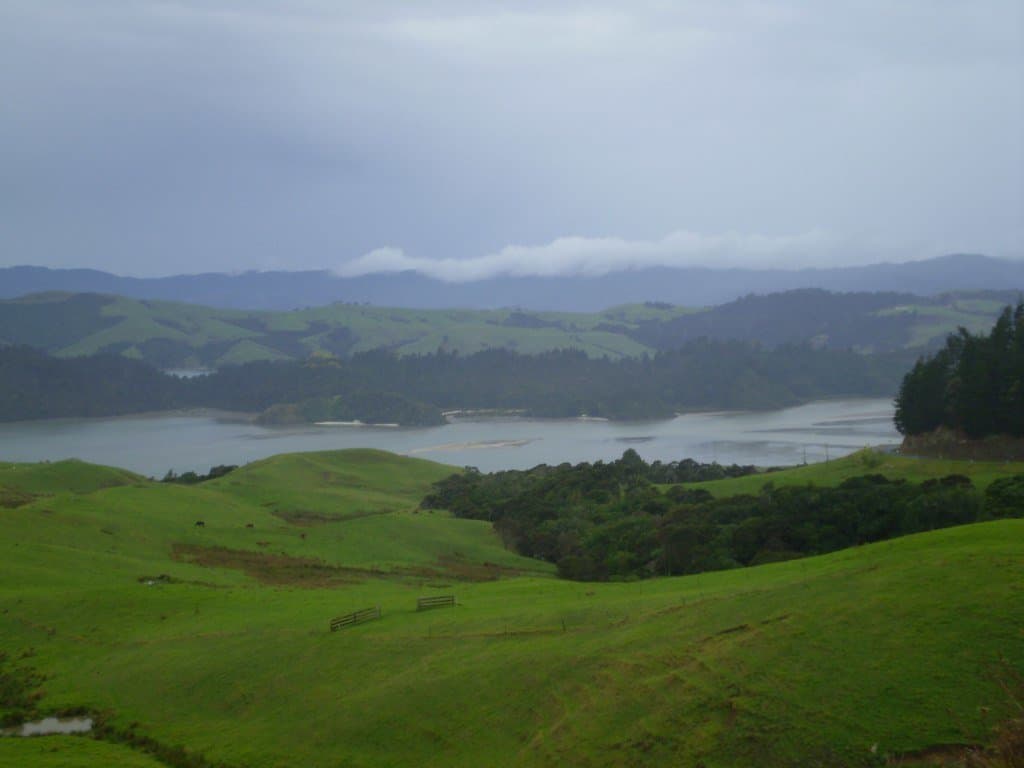
After some time in the town of Mount Maunganui head over to New Zealand’s geothermal capital Rotorua.
On the way check out Te Rerekawau and Mclaren Falls , two excellent spots for a break from driving.
You also have to visit Wai O Tapu Thermal Wonderland on your trip to New Zealand. As part of the Okataina Volcanic Centre, Wai O Tapu has the coolest geothermal views and landscapes.
From Rotorua hop on the Thermal Explorer Highway and head down towards Lake Taupo and the central region of New Zealand’s North Island
READ MORE: Be sure to consider these things to do in Rotorua !
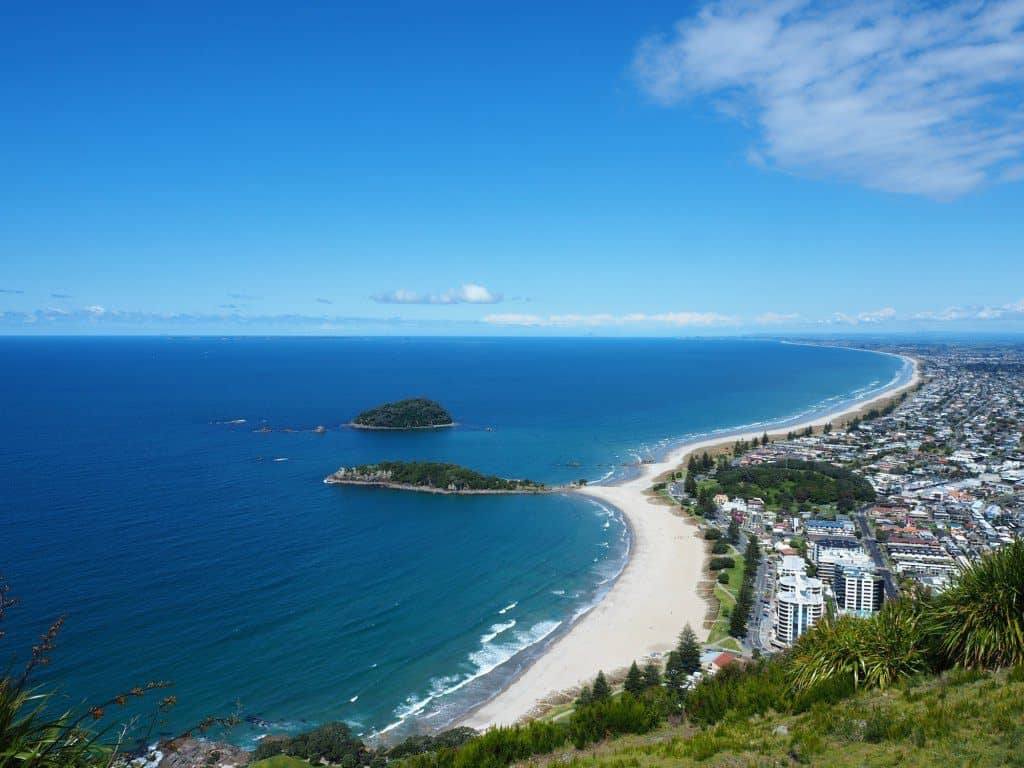
After following the Thermal Explorer Highway from Rotorua you will arrive at Lake Taupo, the North Island’s adventure capital.
Every New Zealand road trip must include a stop in Taupo. Its central location allows you to branch out to other areas of the North Island without having to double back on yourself.
After getting your fill of adrenaline activities in Taupo head towards the stunning Tongariro National Park along the south edge of the lake.
Expect stunning views, especially if you’re travelling around sunset.
The Tongariro National Park is stunning and is home to numerous excellent hikes.
Make sure you base yourself around Whakapapa where there are several accommodation options including an excellent holiday park for those travelling in a campervan.
Whakapapa is the starting point for many hikes and is very close to Mangatepopo car park , the starting point for the Tongariro Crossing , regarded as one of the best one-day walks in the world
Check out our New Zealand itinerary and our article on the top 25 things to do in New Zealand for some additional suggestions on things to do in both Taupo and the Tongariro National Park.
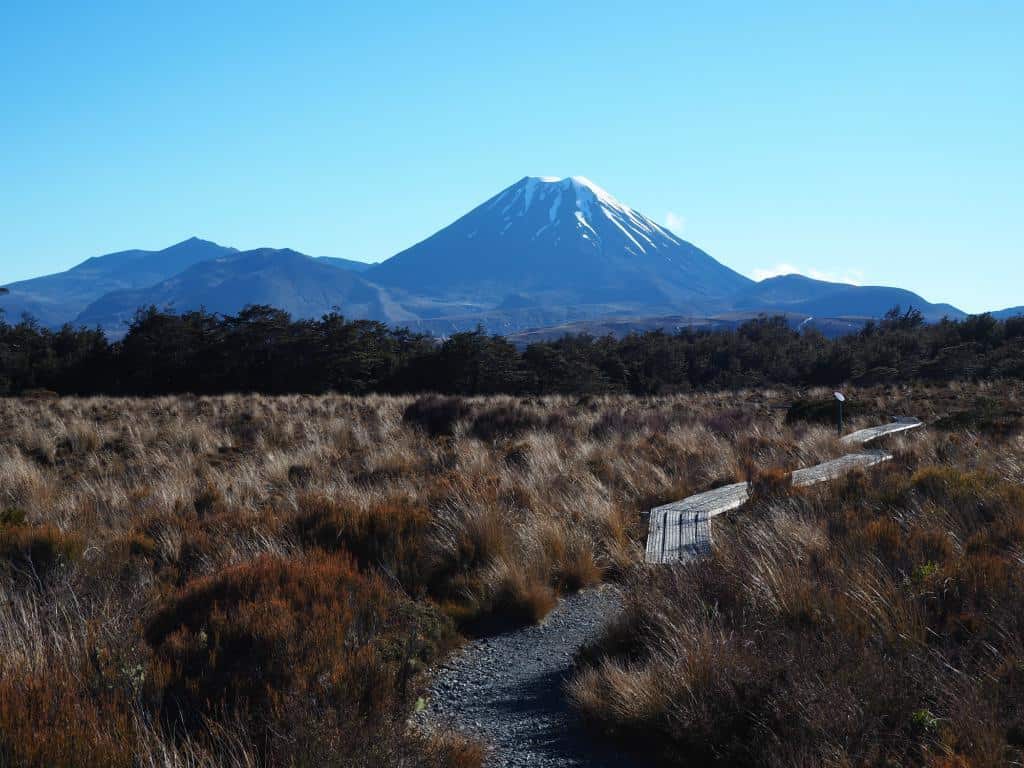
For this section of the New Zealand itinerary, there is a bit of doubling back on yourself. However, I promise it’s worth it.
From the Tongariro National Park head north towards the tiny town of Waitomo just a stone’s throw from the town of Te Kuiti , which prides itself as being the sheep shearing capital of the world.
Spend your time in Waitomo deep underground exploring the area’s caves , with the Lost World being the pick of the bunch.
From Waitomo double back on yourself and head to the town Taumarunui and hop on the spectacular and rarely visited Forgotten World Highway .
Running through some gorgeous New Zealand countryside the highway ends in the town of Stratford , very close to Mount Taranaki.
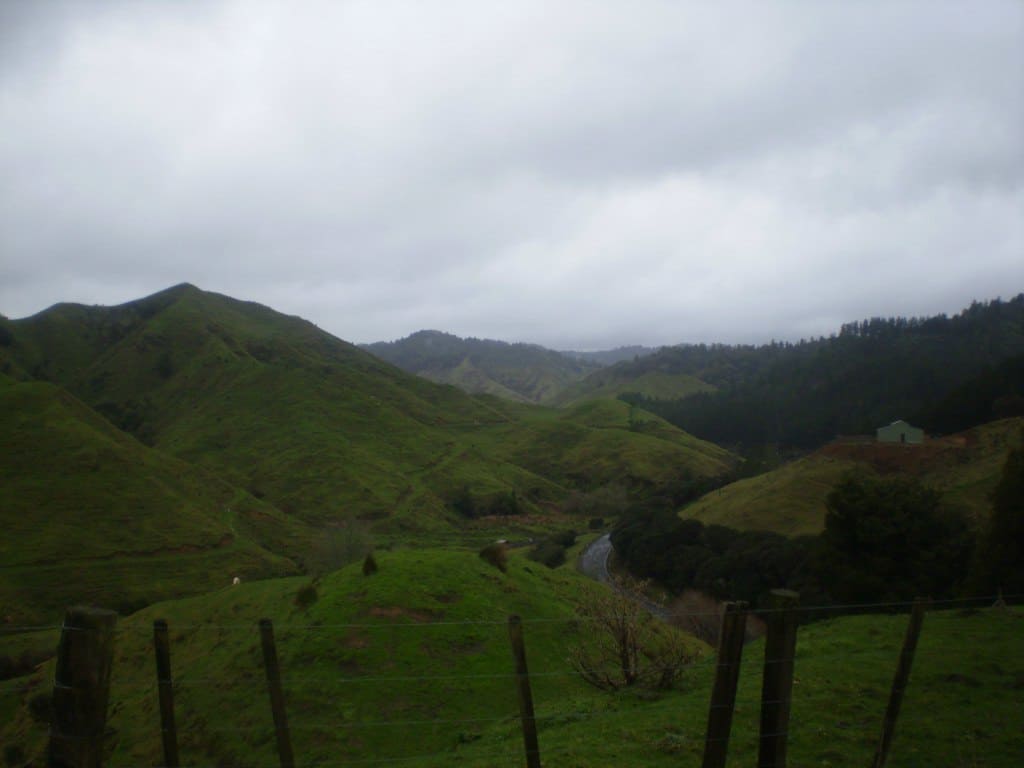
With its almost perfect cone, Mount Taranaki reminds many of the more well-known Mount Fuji. The area is home to some spectacular hikes.
From Mount Taranaki head towards the east coast and follow it all the way down New Zealand’s wet and windy capital, Wellington .
There are numerous tiny beach towns to stop at on the way, with windswept Hitamangi being a decent place to spend the night.
If you’ve skipped the sections from Tongariro to Taranaki, then an alternative route is the rather lovely road that follows the Mangawhero and Whanganui Rivers all the way to the coast offering some spectacular scenery en route.
Spend your time in Wellington at the Te Papa Museum to learn about New Zealand’s history.
Head up to Mount Victoria for some lovely views over the city. And spend at least one evening eating and drinking on Cuba Street .
READ MORE: Check out these other great things to do in Wellington !
New Zealand South Island Road Trip
New Zealand South Island road trips are more common and, honestly, more adventurous than those on the North Island.
But clearly, if you’re visiting New Zealand you should plan to see both the North and South Islands. If you’re short on time, however, and you can only visit one island, the South Island has more dramatic scenery and adventure activities.
Click here to check out a Google Map of the South Island road trip itinerary .
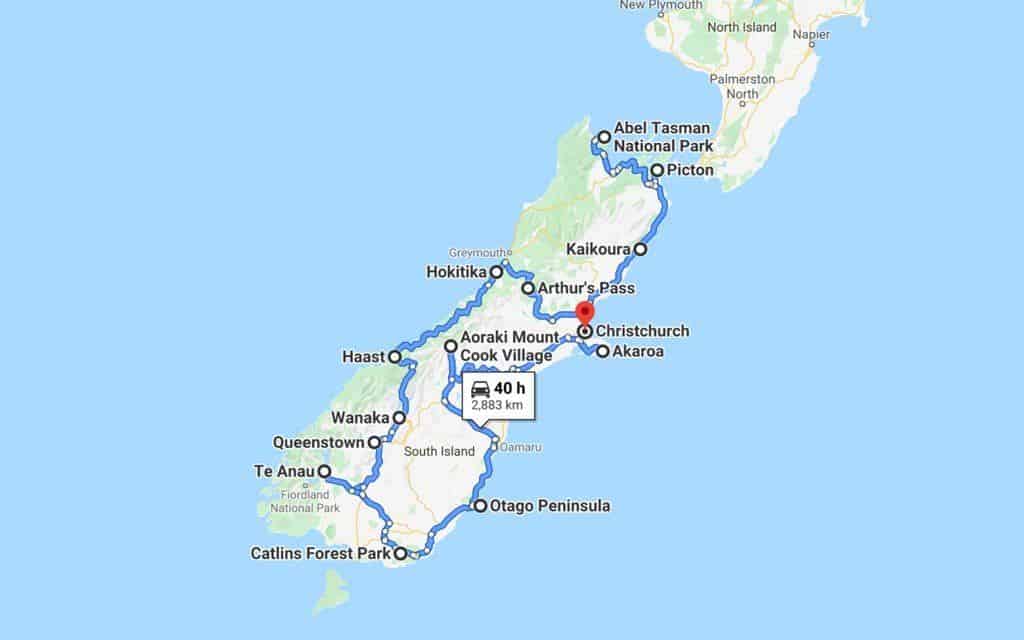
Park up on the ferry and get ready to enjoy some spectacular views as you come toward Picton through the Marlborough Sounds on your crossing to the South Island of New Zealand.
This is, of course, weather-dependent. I’ve done this crossing twice, once in the winter and once in the summer.
The former was a crossing of wind and rain and not much else. Check out this map of the South Island to provide some frame of reference for your trip and add to your itinerary beyond our recommendations below.
This section of our New Zealand South Island road trip is littered with some awesome stop-off points.
There are plenty of hikes and places to explore on the edge of the Marlborough Sounds as you follow the coast around reaching the small city of Nelson.
There’s plenty to keep you occupied here for a few days.
Beyond Nelson, it’s a straight shot to Kaiteriteri , a town on the very edge of the Abel Tasman National Park.
There is plenty of great hiking through the park. But you should also consider kayaking in Abel Tasman National Park .
READ MORE: Be sure to add these things to do in Nelson while you’re there.
This area of New Zealand always leads to difficult decisions. Head straight to the West Coast via Murchison and the Buller Gorge, cut across the South Island via Hammer Springs, or loop back around via the Marlborough Wine Region. Decisions decisions.
Since we’re planning to head to Kaikoura, we’re going to look at the latter two options (don’t worry we will get to the west coast I promise).
If you’re a fan of wine and coastal scenery then head to Kaikoura via the Marlborough Wine Region stopping in at various vineyards along the way.
The alternative is to head for Hammer Springs via the Buller Gorge. Spend a night in Hammer Springs soaking in hot pools or just enjoying the scenery, then hot foot it down to Kaikoura.
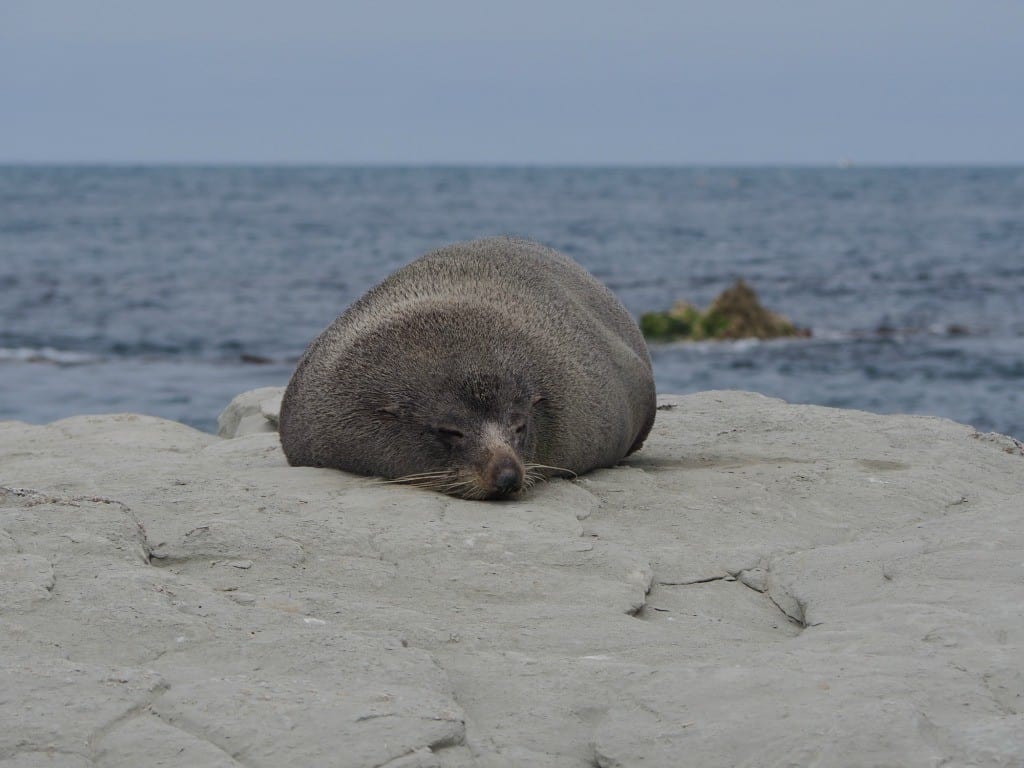
Kaikoura is one of the wildlife capitals of New Zealand. The vast majority of this can be found in the waters surrounding the peninsula which is home to a staggering array of wildlife.
Whether you want to watch whales and albatross, swim with dolphins, or kayak with seals it’s up to you.
From Kaikoura head south and back to the West Coast via the stunning Arthurs Pass National Park .
Although this route does involve some extra kilometres on the road, I promise you it’s absolutely worth it.
This gorgeous National Park is rarely visited in comparison to others in New Zealand. There are numerous hikes available as well as plenty of places to simply pull up and enjoy the scenery.
The Jackson Retreat Alpine Holiday Park is a great option for those who want to spend a night in the area.
As well as spectacular views over the national park itself, the park also has its own glow worm trail and hike to a lovely waterfall.
Coming via Arthurs Pass will spit you back onto the west coast just north of Hokitika , a town famous for its gorge and beaches.
If you want to can double back north along the west coast road toward Punakaiki and Westport before doubling back on yourself and heading back down towards Hokitika.
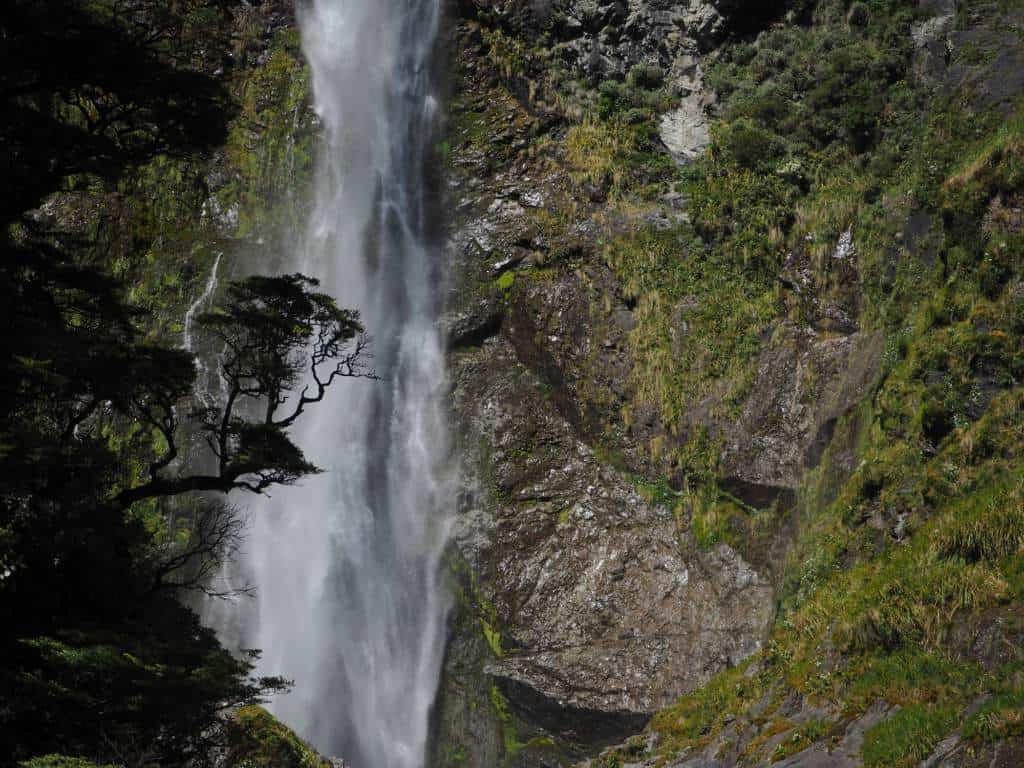
From Hokitika, it’s a straight shot south down the wild west coast to the small town of Haast . On your way, you will pass through glacier country.
Around both the Franz Josef and Fox glaciers numerous short hikes offer some pretty amazing views.
The views on the entire journey down are pretty spectacular, no doubt you’ll be stopping plenty of times to take photos.
From Haast, you have 2 options. Follow the Haast Pass through to the beautiful Wanaka.
Or head due south to Jackson Bay , the end of the line on the west coast.
The latter of these offers empty roads and stunning desolate beaches. With small mountains jutting out of the land a couple of hundred metres from the ocean’s edge, the view when taking a dip is stunning.
If you head down to Jackson Bay then double for Haast and then take cross the Haast Pass through to Wanaka.
The journey through the Haast Pass is full of stunning scenery, short hikes, and some gorgeous waterfalls with the blue pools being particularly beautiful.
Make sure you have a good pair of walking boots as Wanaka is full of awesome hiking trails offering some breathtaking views.
Many people also choose to go hiking in Mount Aspiring National Park on the way to Wanaka.
READ MORE: Check out more activities in Wanaka .
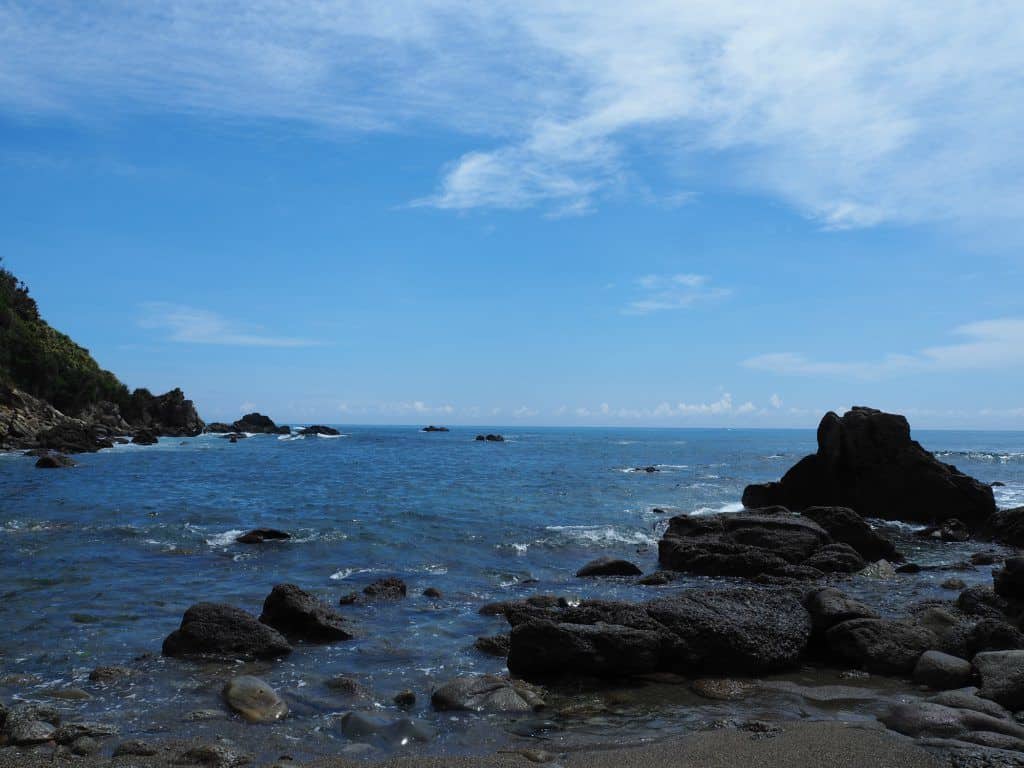
Make sure your camera is charged because this drive is a beauty.
Taking you past the stunning Crown Range and The Remarkables as you enter Queenstown this journey is truly special.
I’d also recommend heading up to the tiny town of Arrowtown which is in between Wanaka and Queenstown.
From Queenstown take a day trip up to the stunning little town of Glenorchy . This drive is also an absolute stunner.
READ MORE: Be sure to add these great Queenstown activities to your itinerary!
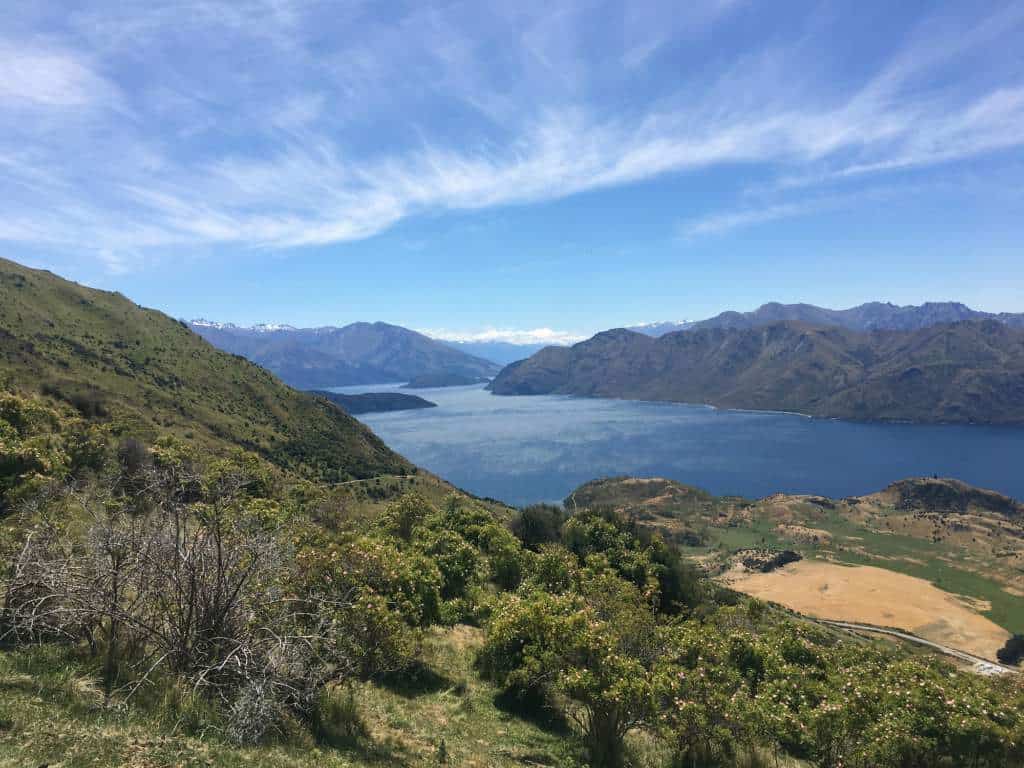
No doubt about it, the drive from Queenstown to Te Anau is an absolute stunner.
From here the road splits; north to Milford Sound and South to Doubtful Sound.
From Te Anau to Milford Sound is probably more spectacular than the route down to the edges of Lake Manapouri from where Doubtful Sound cruises depart.
Milford Sound is one of the most popular destinations in the country and is a must on a road trip of New Zealand’s South Island. Many people visit Milford Sound as a day trip from Queenstown.
But if you’re driving your own car on a road trip, you have the luxury of visiting Milford Sound on your own time and spending some time there. Then you can continue on after seeing the famous Milford Sound.
However, of the sounds, it is Doubtful Sound that I feel is the more spectacular of the two.
At 3 times the length and 10 times the area of its more well-known cousin, it is simply awe-inspiring.
This gorgeous but rarely visited national park is bypassed by the main SH1 highway, enjoying a calm and carefree life far away from the majority of travellers that flock to New Zealand’s shores.
Winding country roads, breathtaking coastal scenery, and oodles of hiking trails are just the start of this part of your road trip.
Head down Curio Bay and Porpoise Bay to experience some of the park’s most famous residents – the curious Hectors Dolphins that are sometimes keen to come to socialise with swimmers.
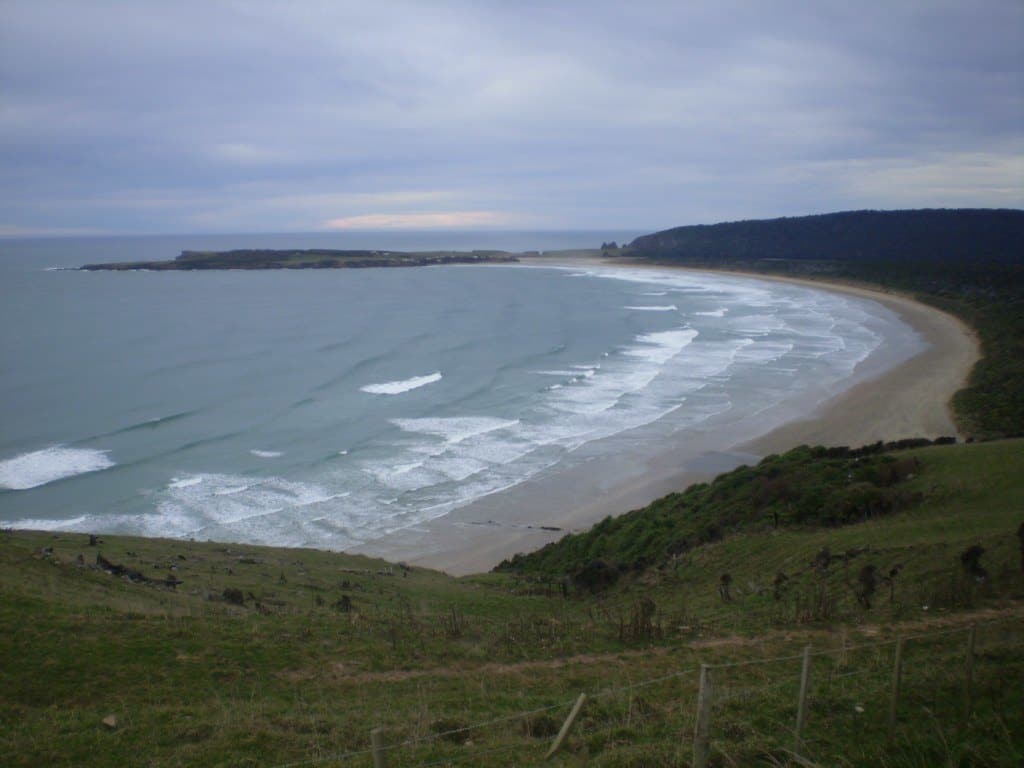
From the Catlins head to the gorgeous Otago Peninsula . This is another wildlife haven with albatross viewing and seal kayaking on offer.
At night head over to the Royal Albatross Centre to watch the Little Blue Penguins returning to their nests after a day hunting out in the open ocean.
The eastern portions of the peninsula are home to some gorgeous beaches and equally stunning hiking trails which are well worth checking out.
READ MORE: Plan to do some great hiking on the Otago Peninsula .
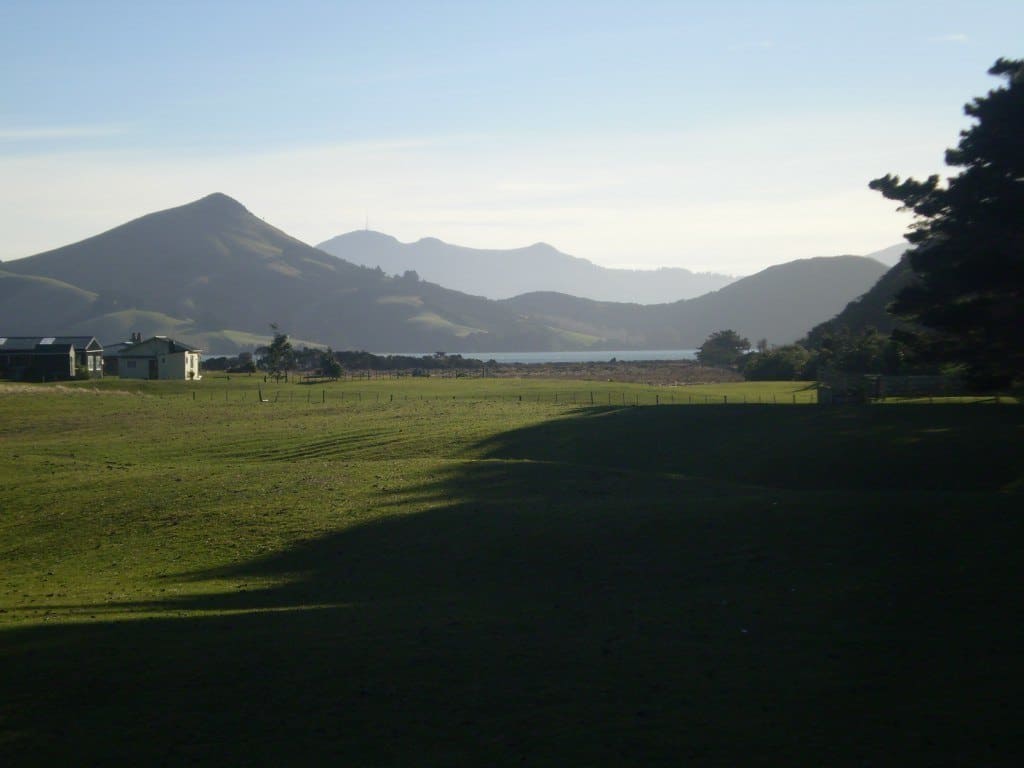
This gorgeous drive follows the coast up through the town of Omaru through Twizel and onto one of New Zealand’s most stunning sights – Mount Cook .
As you follow the coast up from the Otago Peninsula make sure you stop in at Omaru to check out the town’s funky steampunk vibe.
If you stay the night there is an additional Little Blue Penguin colony that you can observe in the evening.
From Omaru journey inland towards the small town of Twizel . This is a gateway to Mount Cook National Park, with many using it as a stopping point to maximise the enjoyment of the drive to New Zealand’s highest peak.
This is because the drive along Lake Pukaki , towards Mount Cook is simply breathtaking, and maybe one of the most stunning drives in the country.
Therefore it makes sense to do it first thing in the morning when you have the best light and the fewest people.
The road up to Mount Cook is littered with stunning viewpoints. However, Peter’s lookout is probably the pick of the bunch.
If you’re in a campervan make sure you head for the Whitehorse campsite . This awesome DOC site is the starting point for the Hooker Valley Trail and the Kea Point Track .
Also, make sure you check out the hikes around the Tasman Glacier as well.
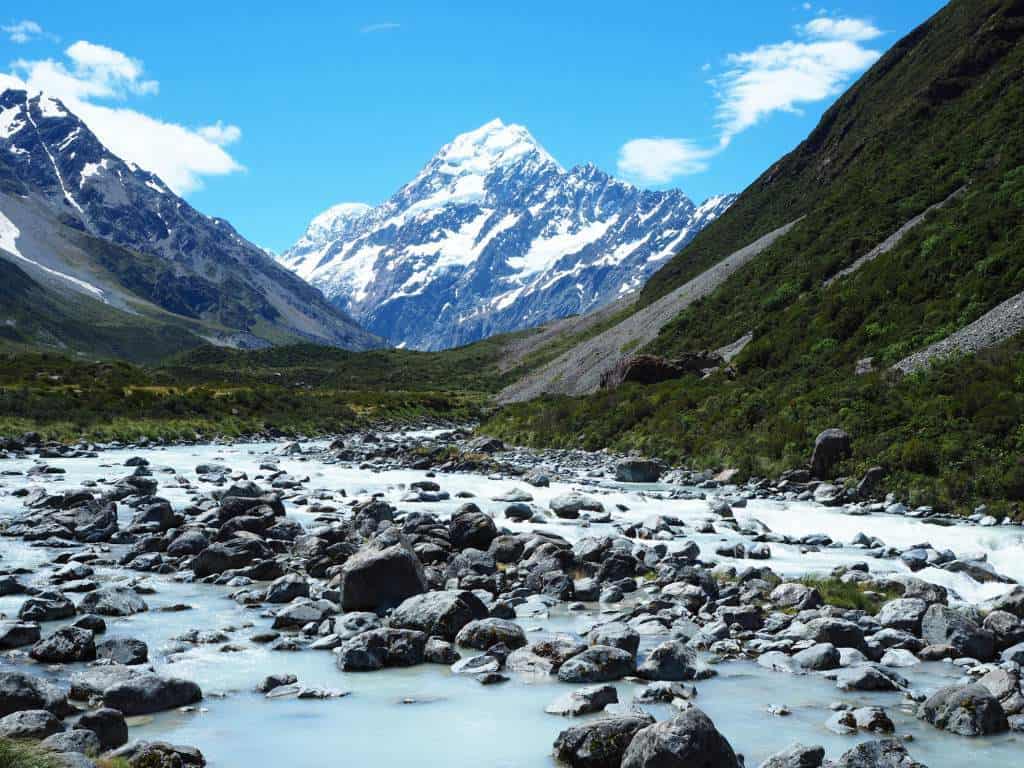
This long but stunning drive takes you along the banks of Lake Pukaki and Lake Tekapo. Lake Tekapo is one of New Zealand’s most gorgeous lakes.
Next you’ll head through the heart of Canterbury, and onto the Banks Peninsula , which is one of the most picturesque places in New Zealand.
Along the south edge of Lake Pukaki stop in at the Alpine Salmon Shop to chow down on some excellent sashimi.
Make sure you check out the Church of the Good Shepherd on the banks of Lake Tekapo.
There are some rather lovely hikes in the area, plus some awesome stargazing to be had from the Mount John Observatory .
There are a fair few quaint towns that you may want to stop in en route. The small town of Fairlie is famous for its bakery which serves some truly spectacular pies and close proximity to the Mount Dobson ski field.
The small town of Lake Tekapo is also a lovely place to stop. There are lots of hikes and a Dark Sky Reserve where you can stargaze.
If you’re here in the winter then Mount Hutt is another worthy skiing spot. However, you will definitely need snow chains on your tires.
Bypass Christchurch and make a beeline for the small town of Akaroa , the main town on the stunning Banks Peninsula.
Spend a few days exploring the many hiking trails that crisscross the peninsula.
Head over to Okains Bay to explore and relax on this stunning and often deserted beach.
If you fancy getting up close to some of the area’s wildlife there are some excellent dolphin swimming and watching tours .
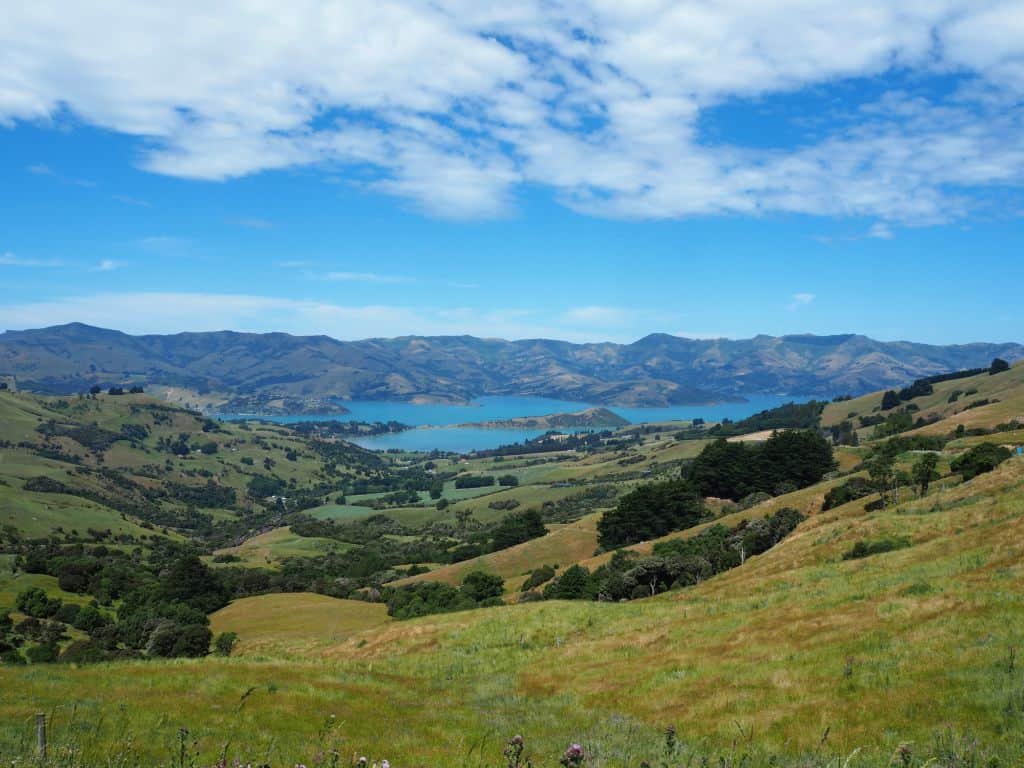
Christchurch is the final stop on this NZ road trip. A short drive from Akaroa, it certainly makes a pleasant change
Christchurch is well known for its botanical gardens and cathedral. The latter is still being held up with a mixture of structural support and scaffolding after the 2011 earthquake.
It’s still fenced off, acting as a timely reminder of New Zealand’s precarious position at the hands of Mother Nature.
READ MORE: Check out some of the best things to do in Christchurch !
DISCLAIMER: Some of the links in this article are affiliate links, which means if you book accommodation, tours or buy a product, we will receive a small commission at no extra cost to you. These commissions help us keep creating more free travel content to help people plan their holidays and adventures. We only recommend the best accommodations, tours and products that ourselves or our fantastic editorial team have personally experienced, and regularly review these. Thanks for your support, kind friend!
Richard Barnes
Hi, We’re Alesha and Jarryd!

We’ve been traveling the world together since 2008, searching for the planet’s best destinations and adventures.
Love Travel?
Sign up for our free weekly newsletter for the best travel tips, ideas and deals!
We respect your privacy. Unsubscribe at any time.
READ MORE...
Whanganui Journey in New Zealand – The Ultimate Guide [2024]
The Ultimate Guide to New Zealand’s South Island in Winter
5 best adventure activities in taranaki, new zealand, related posts, 21 best queenstown walks – ultimate hiking guide [2024], what it’s like on an overnight milford sound cruise with real journeys, 2 thoughts on “the best new zealand road trip itinerary in 2024”.
Do you have any info on hotels , B&B’s to stay at in New Zealand, north and South Island?
Hi Marion, that is awesome you are travelling to NZ. Best to hop online and check out the reviews for places and see which one suits your budget and location. All the best and have a great trip.
Leave a comment Cancel reply
Save my name, email, and website in this browser for the next time I comment.
- Getting around New Zealand: Transportation Tips
Book your individual trip , stress-free with local travel experts
Select Month
- roughguides.com
- Australasia
- New Zealand
- getting-around
- Travel guide
- Itineraries
- Local Experts
- Travel Advice
- Accommodation
Plan your tailor-made trip with a local expert
Book securely with money-back guarantee
Travel stress-free with local assistance and 24/7 support
Robert Digney
The trip was fantastic. Unparalleled Journeys was on point the whole way. The AXUS app was very useful for itinerary updates and communications with your t...
New Zealand is a relatively small country and getting around is easy, with some form of public transport going to many destinations, though sometimes limited to one service per day. There are still some places that are hard to access, yet all of these can be reached with will, flexibility and a little ingenuity.
Campervan rental
By motorcycle, backpacker buses, travel ideas for new zealand, created by local experts.

17 days / from 5400 USD
From North to South - Auckland to Christchurch Self Drive
Explore both the North and the South Island in this compact itinerary. Your own rental car allows you the freedom to go at your own pace and scenic rail journeys break up the driving times. Explore glaciers and cities, thermal springs and panoramic hiking trails.
_listing_1594826609732.jpeg)
14 days / from 3600 USD
Discover the South Island: a self drive trip from Christchurch and back
The larger of the two major island in New Zealand, South Island is best to be explored at your own pace in a rental car. From massive mountains to beaches, panoramic waterfalls to challenging hiking trails, this itinerary shows you the best of South Island.

9 days / from 2900 USD
North Island: A self drive trip from Auckland
Discover the beauty of North Island on a roundtrip from Auckland in your own vehicle. Visit thermal springs, enjoy delicious wine tastings, and explore remote beaches and hiking trails. North Island has plenty to offer travelers and a rental car makes for the perfect discovery.
Internal flights are reasonably priced if booked well in advance, but you’ll appreciate the scenery better by travelling at ground level. The cheapest and easiest, though slowest, way to get around is by bus (coaches or shuttle buses). The rail service , by contrast, is limited and expensive.
Rental cars and campervans, particularly the little ones (see Buying a used vehicle), can be remarkably good value for two or more people, but if you are staying in the country for more than a couple of months, it’s more economical to buy a vehicle. New Zealand’s green countryside encourages cyclists , but even the keenest vary their transport options.
Competition on the ferries connecting the North and South islands means passenger fares are good value, though transporting vehicles is pricey. Planes and boats give limited access to offshore islands and the parts of the mainland that remain stubbornly impenetrable by road, though more specialist tours make getting into the wilds easier.
The frequency of long-distance bus, train and plane services is listed, where relevant, in each chapter in “Arrival and Departure”, while local buses and trains, again where relevant, appear in “Getting Around”.
Many visitors fly into Auckland at the beginning of their trip and out from Christchurch at the end, so don’t touch domestic flights , but those with a tight timetable wanting to hit a few key sights in a short time might be tempted by reasonable-value internal fares.
The biggest domestic operator is Air New Zealand ( w airnewzealand.com ), serving all the main centres and numerous minor ones (25 destinations in all). The main competition is from Jetstar ( w jetstar.com ), which serves Auckland, Wellington, Christchurch, Dunedin, Rotorua and Queenstown. Air New Zealand runs single-class planes with fares that come in three levels, offering lower fares for decreased flexibility: there are fewer low-cost fares at popular times. Jetstar has a similar system. For example, a one-way standard flight between Auckland and Christchurch is about $399, a Flexi Plus around $289, a Smart Saver as little as $139 and a seat only (no hold baggage) $89. Other flights you might take are scenic jaunts from Auckland to Great Barrier Island, the hop over Cook Strait, or the short trip from Invercargill to Stewart Island.
Air New Zealand t0 800 737 000, w airnewzealand.co.nz .
Great Barrier Airlines & Air Coromandel t0 800 900 600, w greatbarrierairlines.co.nz . Flights between Auckland, Coromandel and Great Barrier Island.
Fly My Sky t0 800 222 123, w flymysky.co.nz . Flights between Auckland and Great Barrier Island.
Jetstar t0 800 800 995, w jetstar.com/nz .
Soundsair t0 800 505 005, w soundsair.com . Small planes across Cook Strait.
Stewart Island Flights t0 3 218 9129, w stewartislandflights.com . Scheduled services between Invercargill and Stewart Island.
You can get most places on long-distance buses (“coaches”) and smaller shuttle buses , which essentially offer the same service but are more likely to drop you off and pick up at hotels, hostels and the like. Services are generally reliable and reasonably comfortable, and competition keeps prices competitive. The larger buses are usually air-conditioned, and some have toilets, though all services stop every couple of hours, at wayside tearooms and points of interest along the way. Most of your fellow passengers are likely to be visitors to New Zealand so drivers often give a commentary, the quality of which varies.
InterCity and Newmans
The biggest operator, InterCity , runs high-quality full-size buses all over the country. They operate closely with Newmans , who pitch themselves as slightly more luxurious and target sightseeing excursions. In practice, the two companies share a timetable and InterCity passes can often be used on Newmans buses: when we refer to InterCity we are generally referring to services run collectively by InterCity and Newmans.
As an example, a standard one-way fare on the North Island, Auckland to Rotorua, is $50, while on the South Island, Christchurch to Queenstown, it’s $85.
Prices often plummet during off-peak periods and a range of discounted fares is available, with an advance-purchase Saver fare yielding a 25-percent discount and a Super Saver 50 percent. Extreme Saver and Web Saver fares are also available: book early for the best prices. YHA, VIP and BBH cardholders get fifteen-percent discounts off Standard rates but you’ll find cheaper deals by chasing down the various Saver fares.
InterCity also offers numerous fixed-route passes such as the Auckland, Bay of Islands Pass, including Cape Reinga ($209; backpacker $179); Auckland, Rotorua, Napier via Taupo, Wellington and back (Maui’s Catch: $215; backpacker $195); Nelson to Queenstown via the west coast ($159; backpacker $145); and various all-New Zealand experiences (from Kia Ora: $645; backpacker $579), with ever increasing fares.
Other buses
A host of bus and shuttle bus companies compete directly with InterCity/Newmans on the main routes and fill in the gaps around the country, often linking with the major operators, to take you off the beaten track. Generally they cost less (sometimes appreciably) and can be more obliging when it comes to drop-offs and pick-ups, though seldom as comfortable over distance. We’ve listed a number of the operators below, but there are many more mentioned in the appropriate sections of this guide.
Official (i-SITE) visitor centres carry timetables of bus and shuttle companies operating in their area, so you can compare frequencies and prices. Fare structures are generally straightforward, with fixed prices and no complicated discounts. Auckland to Rotorua, on the North Island, costs about $34, while on the South Island, Christchurch to Queenstown will be roughly $45.

Bus companies
Atomic Shuttles t0 3 349 0697, w atomictravel.co.nz . Major long-distance bus operator in the South Island.
InterCity & Newmans Auckland call centre t0 9 583 5780, w intercitycoach.co.nz & w newmanscoach.co.nz . Long-distance buses nationwide.
NakedBus t0 900 62533 (premium rate), w nakedbus.com. Cheap, frill-free trips on both islands.
Northliner Express t0 9 583 5780, w northliner.co.nz . Bus travel around Northland, owned by InterCity.
Southern Link t0 508 458 835, w southernlinkcoaches.co.nz. Routes all over the South Island.
Not much is left of New Zealand’s passenger train service besides commuter services in Wellington and Auckland and a few inter-city trains. The long-distance services that exist are scenic runs, primarily used by tourists; trains are so slow that they have ceased to be practical transport for New Zealanders. Minimal investment in infrastructure and rolling stock is beginning to have an effect on standards, but railway travel remains a pleasant experience.
Trains have reclining seats, buffet cars with reasonable food, beer, panoramic windows, and occasionally a glass-backed observation carriage. Tickets guarantee a seat: passengers check in on the platform before boarding and bags are carried in a luggage van.
Long-distance trains are all run by Tranz Scenic ( t0 4 495 0775 & t0 800 872 467, w tranzscenic.co.nz ), which operates three passenger routes. The longest is the Overlander between Auckland and Wellington , past the volcanic peaks of the Tongariro National Park. Interesting stops along the way include Te Awamutu, Te Kuiti (where the train is met by a shuttle bus to Waitomo Caves) and National Park (with access to Mount Ruapehu and the Tongariro Alpine Crossing). The service leaves both Auckland and Wellington daily around 7.35am and reaches its destination around 7.20pm.
In the South Island, the TranzCoastal runs between Christchurch and Picton , a pretty run sometimes hugging the coast. It leaves Christchurch at 7am for the run up through Kaikoura (9.54am) and Blenheim (11.33pm) to Picton (12.13pm). It then returns from Picton (1pm) through Blenheim (1.33pm) and Kaikoura (3.28pm) to Christchurch (6.21pm).
The finest rail journey in New Zealand is the TranzAlpine between Christchurch and Greymouth on the West Coast – it is covered in detail on For more information, see Orana Wildlife Park.
Fares are higher than the comparable bus tickets, but with discounts and the use of a travel pass, travelling is still reasonably good value. Most people get the standard or Flexi fare , which gives a discount in return for advance booking, limited availability and only a fifty-percent refund if cancelled after the departure time. As an example, a standard, one-way ticket from Auckland to Wellington is about $129, from Christchurch to Greymouth around $185. Seniors (60-plus) can get a thirty-percent discount on standard fares, though most folk do better by going for a Scenic Rail Pass. Blind and some disabled travellers are entitled to a forty-percent discount on the standard fare.
Apart from a couple of short-run steam trains, the only other passenger trains are along the Taieri Gorge Railway between Dunedin and Middlemarch, again run almost entirely for the benefit of tourists and an extremely beautiful scenic route.
For maximum flexibility, it’s hard to beat driving around New Zealand: you’ll be able to get to places beyond the reach of public transport and to set your own timetable. With the freedom to camp or stay in cheaper places away from town centres this can be a very economical option for two or more people.
In order to drive in New Zealand you need a valid licence from your home country or an International Driver’s Licence valid for up to a year in New Zealand and you must always carry the licence when driving.
In New Zealand you drive on the left and will find road rules similar to those in the UK, Australia and the US. All occupants must wear seatbelts and drivers must park in the same direction as that in which they are travelling.
The speed limit for the open road is 100kmph, reduced to 70kmph or 50kmph in built-up areas. Speeding fines start at $30 and rapidly increase as the degree of transgression increases. Some drivers flash their headlights at oncoming cars to warn of lurking police patrols, but there are also hidden cameras on the roads. Drink driving has traditionally been a problem in New Zealand: as part of a campaign to cut the death toll, random breath tests exist and offenders are dealt with severely.
Road conditions are generally good and traffic is relatively light except around Auckland and Wellington in the rush hour. Most roads are sealed (paved), although a few have a metalled surface, composed of an aggregate of loose chippings. Clearly marked on most maps, these are slower to drive along, prone to washouts and landslides after heavy rain, and demand considerably more care and attention from the driver. Some rental companies prohibit the use of their cars on the worst metalled roads – typically those at Skippers Canyon and around the northern tip of Coromandel Peninsula. Always check conditions locally before setting off on these routes.
Other hazards include one-lane bridges: a sign before the bridge will indicate who has right of way, and on longer examples there’ll be a passing place halfway across.
Unleaded and super unleaded petrol and diesel are available in New Zealand, and in larger towns petrol stations are open 24hr. In smaller towns, they may close after 8pm, so be sure to fill up for long evening or night journeys.
If you’re driving your own vehicle, check if the New Zealand Automobile Association ( w aa.co.nz ) has reciprocal rights with motoring organizations from your country to see if you qualify for their cover; otherwise, you can join as an overseas visitor. Apart from a free 24hr emergency breakdown service ( t0 800 500 222) – excluding vehicles bogged on beaches – membership entitles you to free maps, accommodation guides and legal assistance, discounts on some rental cars and accommodation, plus access to insurance and pre-purchase vehicle inspection services.
Visitors driving in New Zealand typically pick up a car in Auckland, tour the North Island to Wellington where they leave the first vehicle, cross Cook Strait, pick up a second car in Picton, then drive around the South Island dropping off the car in Christchurch. The whole thing can be done in reverse, and may work out cheaper, or you can stick with the same car across Cook Strait, which with domestic companies doesn’t entail a big price hike.
You’ll see rental deals for under $37 a day, though only for older, small cars rented for over a month in winter (June–Aug). Demand is high over the main summer season and prices rise accordingly.
Most of the major international companies are represented and offer good deals for virtually new cars. Domestic firms offer cheaper rates partly by minimizing overheads and offering older (but perfectly serviceable) vehicles. You may find even cheaper deals with cut-rate local companies, which are fine for short stints, though for general touring domestic nationwide companies are the best bet. Their infrastructure helps when it comes to crossing between the North and South islands (see The Dowse Art Museum) and they typically offer free breakdown assistance.
In peak season it usually pays to have a car booked in advance . At quieter times you can often pick up something cheaper once you arrive; and in winter (except in ski areas) you can almost name your price. Provided your rental period is four days or more the deal will be for unlimited kilometres . The rates quoted below are for summer season assuming a two-week rental period, but don’t be afraid to haggle at any time.
As a general rule, Ace, Apex, Omega and Pegasus offer reasonably new cars at moderate prices, while the rest of the companies listed below try desperately to undercut each other and offer low prices .
Based on a two-week rental in summer, for two people, a small car (1.3–1.8 litre) might cost $45–70 a day from the majors and $37–60 from domestic national firms. A medium-sized car (2–3 litre) might cost $65–90 from the majors and $35–80 from domestic national companies. Unless you’re here in winter and want to get up to the ski-fields without tyre chains you don’t really need a 4WD , which generally cost $70–130 a day; you’ll be better off renting one for short trips in specific areas.
If you are renting for several weeks, there is often no drop-off fee for leaving the vehicle somewhere other than where you picked it up. For shorter rental periods you may be charged $170–300, though if you’re travelling south to north, you may be able to sweet-talk your way out of drop-off charges. At different times in the season Wellington, Picton, Christchurch and Queenstown have a glut of cars that are needed elsewhere, and companies will offer relocation deals . Look at hostel notice boards or call the firms listed below. Some companies want quick delivery, while others will allow you to spend a few more days en route for a reduced rental rate.
You must have a full, clean driver’s licence and be over 21; drivers under 25 often pay more for insurance. In most cases insurance is included in the quoted cost but you are liable for any windscreen damage and the first $1000 of any damage. With some of the cheaper companies this excess can be as much as $3000 if the accident is your fault. This can usually be reduced to $250 or zero by paying an additional $10–20 a day Collision Damage Waiver. Usually before giving you a car rental companies take a credit-card imprint or a cash bond from you for $1500. If you have an accident, the bond is used to pay for any damage: in some cases you can pay anything up to the value of the bond; in others you pay the entire bond no matter how slight the damage. Read the small print, look around the car for any visible defects , so you won’t end up being charged for someone else’s mistakes, and check whether there are any restrictions on driving along certain roads.
Domestic car-rental agencies
A2B Rentals t0 800 545 000, w a2brentals.co.nz .
Ace Rental Cars t0 800 502 277, w acerentalcars.co.nz .
Apex t0 800 939 597, w apexrentals.co.nz .
Bargain Rental Cars t0 800 001 122, w bargainrentalcars.co.nz .
Jucy t0 800 399 736, w jucy.co.nz .
Omega t0 800 112 2333, w omegarentalcars.com .
Pegasus t0 800 803 580, w rentalcars.co.nz .
Throughout the summer, roads are clogged with campervans , almost all driven by foreign visitors who rent them for a few weeks and drive around the country staying in campsites and freedom camping. A small campervan is generally suitable for two adults and a couple of kids and comes with a fold-down bed and compact kitchen. Larger models sleep four or more and often have a shower and toilet.
Medium campervan rentals (based on a 3-week rental) average about $200–330 a day during the high season (Dec–Feb), dropping a little for a couple of months either side and plummeting to around $160 in winter with the two biggest rental firms, Maui and Britz (effectively the same company). A few smaller firms (listed below) offer cheaper rates, saving 20–30 percent.
Small vans are often cramped and aimed at backpackers prepared to sacrifice comfort to save money. These typically cost $80–95 a day during summer, $75–85 in the shoulder season and $60–70 in the depths of winter. The current trend is for wildly painted vans, often with arcane, quirky or downright offensive comments graffitied on them: witness Escape Rentals and Wicked Campers. Other good bets are the distinctive orange Spaceships that have been imaginatively converted to suit two adults. For an affordable and slightly offbeat experience go for a restored, classic VW campervan (possibly with a pop-top), from Auckland-based Kiwi Kombis, who charge $140–210 a day, depending on dates and van.
For all campervans there’s usually a minimum rental period of 5–7 days, but you get unlimited kilometres, a kitchen kit and perhaps airport transfer. Insurance is often included but you may be liable for the first $2000–7500 and you should seriously consider paying extra fees to get this liability reduced. Most companies have a supply of tents, camping kits, outdoor chairs and tables that can be rented for a few dollars.
No special licence is required to drive a campervan, but some caution is needed, especially in high winds and when climbing hills and going around tight corners.
Campervan rentals: medium to large
Adventure t0 800 123 555, w nzmotorhomes.co.nz .
Backpacker Campervans t 800 422 267, w backpackercampervans.com .
Britz t0 800 887 701, w britz.com .
Eurocampers t0 800 489 226, w eurocamper.co.nz .
Freedom Campers t0 800 325 939, w freedomcampers.co.nz.
Kea Campers t0 800 520 052, w keacampers.com .
Maui t0 800 651 080, w maui.co.nz .
Small vans and conversions
Backpackers Transport t0 800 226 769, w backpackernz.co.nz .
Escape t0 800 216 171, w escaperentals.co.nz.
Kiwi Kombis t0 9 533 9335, w kiwikombis.com .
Spaceships t0 800 772 237, w spaceshipsrentals.co.nz .
Wicked Campers t0 800 246 870, w wickedcampers.co.nz .
Buying a used vehicle
Buying a used vehicle can be cost-effective if you are staying in the country for more than a couple of months. Reselling can recoup enough of the price to make it cheaper than using public transport or renting. If you buy cheap there’s also a greater risk of breakdowns and expensive repairs. The majority of people buy cars in Auckland and then try to sell them in Christchurch, so there’s something to be said for buying in Christchurch where you’ll often have more choice and a better bargaining position.
Some of the best deals are found on backpacker hostel notice boards where older cars and vans are typically offered for $500–5000. Realistically you can expect to pay upwards of $3000 for something half-decent. It may not look pretty and with a private sale there’s no guarantee the vehicle will make yet another trip around the country, but you might get an added bonus like camping gear thrown in with the car (or offered at a snip).
For a little more peace of mind, buy from a dealership . There are plenty all over the country, especially in Auckland, Christchurch and Wellington. Prices begin at around $5000 and some yards offer a buy-back service , usually paying about fifty percent of the purchase price. If you’re confident of your ability to spot a lemon, you can try to pick up a cheap car at an auction ; they’re held weekly in Auckland and Christchurch and are advertised in the local press. Be aware that you’ll usually be liable for the buyer’s premium of ten percent over your bid.
Before you commit yourself, consult the vehicle ownership section of the NZ Transport Agency website ( w nzta.govt.nz ), which has good advice on buying and the pitfalls. The Buying a used car factsheet is particularly helpful.
Unless you really know your big end from your steering column you’ll want to arrange a mobile vehicle inspection , either from the AA ( t0 800 500 333, w aa.co.nz ; members $147; non-members $169) or the Car Inspection Services ( t0 800 500 800 in Auckland and Wellington, w carinspections.co.nz ). The inspection may give you enough ammunition to negotiate a price reduction. Finally, before you close a private sale, call AA LemonCheck ( t0 800 536 662, w aalemoncheck.co.nz) – its staff will fill you in on registration history, possible odometer tampering and any debts on the vehicle ($20 members; $30 non-members).
Before they’re allowed on the road, all vehicles must have a Warrant of Fitness (WOF), which is a test of its mechanical worthiness and safety. WOFs are carried out and issued by specified garages and testing stations and last for a year if the vehicle is less than six years old, or six months if older. Check the expiry date, as the test must have been carried out no more than one month before sale. The vehicle should also have current vehicle registration , which must be renewed before it expires (6 months, starting at $299.90; 12 months $431.06 for petrol-driven, private vehicles – 1300–2600cc): post offices and AA offices are the most convenient for this, though you can also do it online at w nzta.govt.nz .
You transfer ownership with a form (filled in by buyer and seller) at a post office: the licence plates stay with the vehicle. Next you’ll need insurance : Comprehensive (which covers your vehicle and any other damaged vehicles), or Third Party, Fire & Theft (which covers your own vehicle against fire and theft, but only pays out on damage to other vehicles in case of an accident). Shop around as prices vary widely, but expect to pay a minimum of $350 for six months’ Third Party, Fire & Theft cover.
Visitors from most countries can ride in New Zealand with their normal licence, though it (or your international licence) must specify motorbikes. Helmets are compulsory, and you’ll need to be prepared to ride on gravel roads from time to time.
Few people bring their own bike but bike rental is available from the companies running guided bike tours. It isn’t cheap, and for a 650cc machine in summer you can expect to pay $190–280 a day. Bike Adventure New Zealand ( t0 800 498 600, w bikeadventure.co.nz ) offers 600cc enduro machines for $95 per day for short periods, dropping to $55 per day for ten weeks. Alternatively, try the same channels as for “Buying a used vehicle” opposite.
Motorbike tours
The obvious alternative is an organized tour, self-guided or guided, usually incorporating top-of-the-range accommodation, restaurants and bikes.
Adventure New Zealand Motorcycle Tours & Rentals w gotournz.com . Nelson-based company providing upmarket, small-group guided or self-guided tours around the South Island, with itineraries tweaked to suit and a luxury coach in your wake. Rates start at $9000 for a standard 10-day trip on a relatively modest bike.
New Zealand Motorcycle Rentals & Tours w nzbike.com . Another specialist top-end company, offering guided all-inclusive tours staying in quality accommodation, semi-guided tours and bike rental. A fully guided 21-day tour round both islands will set you back about $8300, staying in hotels and riding a modest bike.
Te Waipounamu Motorcycle Hire & Tours w motorcycle-hire.co.nz . These folk do upscale tours round the bottom of the South Island and bike rentals including Beamers at $230/day in the high season.
If you have time, cycling is an excellent way of getting around. Distances aren’t enormous, the weather is generally benign, traffic is light, and the countryside is gorgeous. Most everywhere you go you’ll find hostels and campsites well set up for campers, but also equipped with rooms and cabins for when the weather really sucks.
But there are downsides. New Zealand’s road network is skeletal, so in many places you’ll find yourself riding on main roads or unsealed minor roads. You’ll also experience a fair bit of rain and have to climb quite a lot of hills.
Cycling the South Island is an easier proposition than the North Island . The South Island’s alpine backbone presents virtually the only geographical barrier, while the eastern two-thirds of the island comprise a flat plain. In the North Island you can barely go 10km without encountering significant hills – and you have to contend with a great deal more traffic, including intimidating logging trucks.
New Zealand law requires all cyclists to wear a helmet . Some fitness is important, but distances don’t have to be great and you can take things at your own pace. If you’d rather go with a guided group , For more information, see Multi-day tours.
For more information get the Pedallers’ Paradise guides ( w paradise-press.co.nz ) or Bruce Ringer’s New Zealand by Bike .
Since the vast majority of riding will be on sealed roads with only relatively short sections of gravel, it is perfectly reasonable (and more efficient) to get around New Zealand on a touring bike. But fashion dictates most people use a mountain bike fitted with fat but relatively smooth tyres.
On long trips it’s cheaper to bring your own bike , set up to your liking before you leave home. Most international airlines simply count bikes as a piece of luggage and don’t incur any extra cost as long as you don’t exceed your baggage limit. However, they do require you to use a bike bag or box, or at the very least remove pedals and handlebars and wrap the chain. Some airlines will sell you a cardboard bike box at the airport. Soft bags are probably the most convenient (they’re easy to carry on the bike once you arrive), but if you are flying out from the same city you arrive in you can often store hardshell containers (free or for a small fee) at the backpacker hostel where you spend your first and last nights: call around.
Renting bikes for more than the odd day can be an expensive option, costing anything from $30–55 a day, depending on whether you want a bike with little more than pedals and brakes, a tourer or state-of-the-art mountain bike. Specialist cycle shops do more economical monthly rentals for around $200–250 for a tourer and $300 or more for a full-suspension superbike.
For long-distance cycle touring, it’s generally cheaper to buy a bike . It will cost at least $1500 to get fully kitted out with new equipment, but it’s worth checking hostel notice boards for secondhand bikes (under $500 is a reasonable deal), often accompanied by extras such as wet-weather gear, lights, a helmet and a pump. Some cycle shops offer buy-back deals , guaranteeing to refund about fifty percent of the purchase price at the end of your trip – contact Adventure Cycles, 9 Premier Ave, Western Springs, in Auckland ( t 09 940 2453, w adventure-auckland.co.nz/adventurecycles ). If you’re bringing your own bike, the same folk will let you store the bike box you transported your machine in, help organize an emergency package of spare parts and extra clothing to be forwarded at your request, and give your bike a once-over before you set off, all for around $50.
Transporting bikes
Lethargy, boredom, breakdowns or simply a need to shift your bike between islands mean you’ll use public transport at some point. You can usually get your bike onto a bus (generally $15–20) or train ($15–20/journey), though space is often limited so book well in advance. Crossing Cook Strait, the Interislander and Blue Bridge ferries charge $15–20.
Bikes usually travel free on buses, trains and ferries if packed in a bike bag and treated as ordinary luggage. Air New Zealand will fly your bike free, if it is within your baggage allowance; Jetstar will charge you at its normal excess baggage rate, though that doesn’t cut into your free allowance.
The ferries you’re most likely to use are vehicle-carrying services plying Cook Strait between Wellington on the North Island and Picton on the South Island. Details are given on For more information, see The Dowse Art Museum.
Passenger ferries link Bluff, in the south of the South Island, to Stewart Island, and both vehicle and passenger ferries connect Auckland with the Hauraki Gulf islands, principally Waiheke, Rangitoto and Great Barrier. Information about these short trips is included in the accounts of Invercargill and Auckland. Most visitors spend more boat time on cruises – whale watching, dolphin swimming, sightseeing – or water taxis .
One of the cheapest ways to cover a lot of ground is on a backpacker bus , which combines some of the flexibility of independent travel with the convenience of a tour. You typically purchase a ticket for a fixed route (usually valid for 12 months), and then take it at your own pace. You can either stick with the one bus for the entire journey with nights spent at various towns along the route, or stop off longer in places and hop on a later bus. During peak times some buses may be full, so you’ll need to plan onward travel several days in advance. Most companies operate year-round, though services are reduced in winter.
The emphasis is on experiencing the country rather than travelling from one town to the next, so you’ll be stopping off to bungy jump, hike or somesuch. Being part of a group of forty rowdy backpackers arriving at some idyllic spot isn’t everyone’s idea of a good time and, by using assorted public transport, it is often just as cheap to make your own way around New Zealand. But if you want almost everything organized for you, and a ready-made bunch of like-minded fellow travellers, this sort of travel might appeal.
It can be 5–10 percent cheaper to book before you arrive, as some deals are not available once you step off the plane: check the websites or with your travel agent. You might also save a few dollars by being a YHA, VIP, BBH or ISIC cardholder. Tickets don’t generally cover accommodation, activities (although these are often discounted), side trips, food or travel between the North and South islands.
Operators are listed below. For those interested in multi-day tours and adventure activities check out “Outdoor activities” (see Multi-day tours), where more intimate and specialized excursions are listed.
Flying Kiwi Wilderness Expeditions ( w flyingkiwi.com ). Operator specializing in tours that get off the beaten track and eschew city hostels in favour of camping. Converted buses are equipped with bikes, canoes, windsurfers, kitchen, awning, fridge, beds, tents and hot shower, and everyone mucks in with domestic chores. Trips operate all year and once on board you stick with the same group. Options range from the Northern Express from Wellington to Auckland via Taupo (2 days; $268) to a full NZ tour (27 days; $3740 including food and camping fees).
Haka Tours ( hakatours.com ). Small-group (max 16) guided adventure and snow tours aimed at the slightly more discerning backpacker. Packages range from the seven-day South Island Tour ($1299) to the 24-day "Epic NZ" ($3599).
Kiwi Experience ( w kiwiexperience.com ). With a deserved reputation for attracting high-spirited party animals, Kiwi Experience offers a huge array of passes, from a trip to Cape Reinga starting in Auckland (min 3 days; $199) to the Full Monty (minimum 32 days; $2125).
Stray ( w straytravel.com ). Stray have attempted to take the mantle of ultimate party bus away from Kiwi Experience. Trips include a Round South Island (RON) circuit (minimum 16 days; $940) and a North Island circuit (minimum 9 days; $535).
The Rough Guides to New Zealand and related travel guides
In-depth, easy-to-use travel guides filled with expert advice.
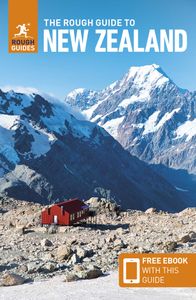
Travel advice for New Zealand
From travel safety to visa requirements, discover the best tips for traveling to New Zealand
- Eating and drinking in New Zealand
- Outdoor activities
- Culture and Etiquette in New Zealand
- How to get to New Zealand
- Shopping tips for New Zealand
- Spectator sports
- Travel Tips New Zealand for planning and on the go
- Travelling with children in New Zealand
- Best time to visit New Zealand
Find even more inspiration here

- Travel Tips
written by Rough Guides Editors
updated 05.05.2021
Ready to travel and discover New Zealand?
Get support from our local experts for stress-free planning & worry-free travels.
- Where to stay
- Travel advice

- Privacy Policy
- Galapagos Islands
- Philippines
- New Zealand
- Solo Travel
- Backpacking
New Zealand , Road Trips , Solo Travel
How to get around new zealand without a car.

It goes without saying that one of the most popular ways to explore New Zealand is by car or campervan. But not everyone can do this.
Whether it’s because of budget, confidence or driving ability, there are several reasons why people choose to visit New Zealand without hiring a car.
Thankfully, there are several other easy ways to explore New Zealand. So if you can’t hire a car or campervan, don’t let this put you off from visiting this wondrous country.
Despite spending two months exploring New Zealand in a campervan , I also spent four months there without one. While I’d occasionally hire transport, I primarily used busses.
In this post, I’ve shared my knowledge about how to get around New Zealand without a car.
Table of Contents
Travel by bus (InterCity)
Travelling around New Zealand by bus is one of the best ways to see the country without a car. Despite many towns in New Zealand being remote and nestled in the mountains, New Zealand has a great bus network.
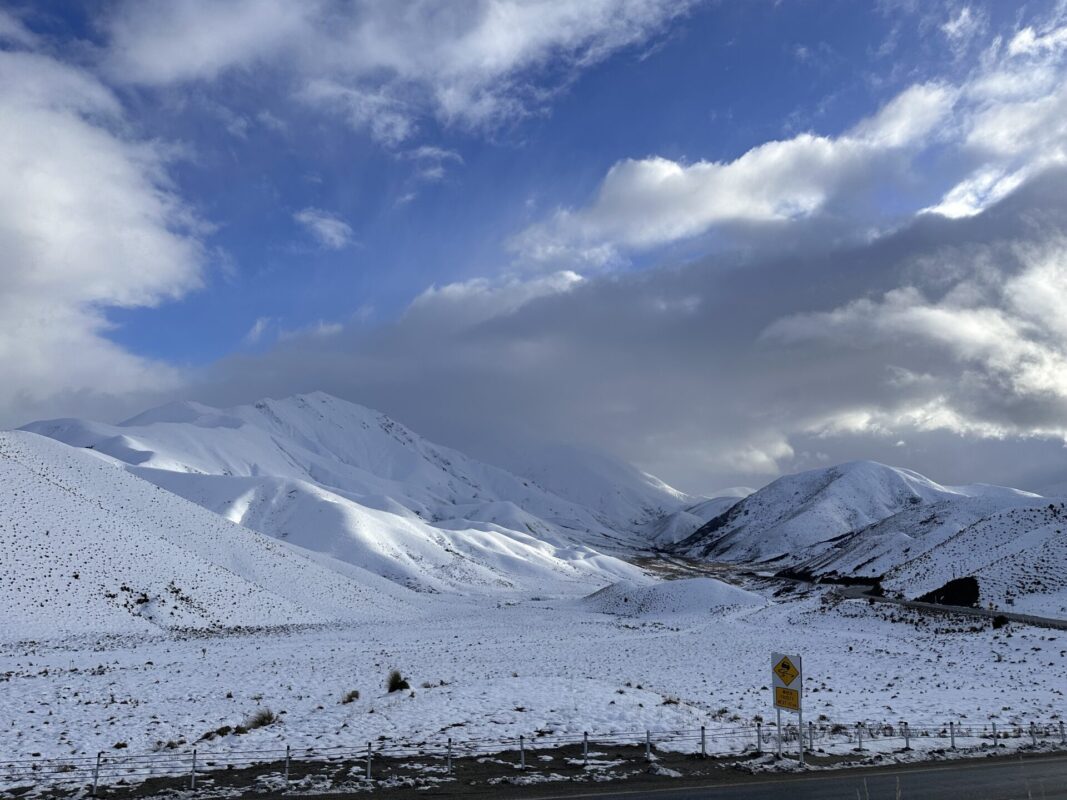
One of the major bus operators in New Zealand is InterCity . Honestly, if you’re looking for the cheapest and most convenient option without a car, it’s going to be InterCity.
InterCity busses connect many towns and cities in both the North and South Island . They operate all year round, but you might find some routes are seasonal.
InterCity Options
Pay as you go When travelling around New Zealand with InterCity, you have different options. The first option is to buy pay as you go tickets. This means you book your bus tickets as and when you want to. However, if you’re planning to use InterCity several times, this will not be cost-effective.
One of the great things about InterCity is they offer passes. This means you can buy a pass and use the bus as a hop on, hop off service. There are two options for InterCity passes.
Travel Pass The travel pass is a set itinerary covering some of the most popular areas in New Zealand. They often include extra perks such as included activities.
Here are some of their popular Travel Pass options:
- Alps Explorer : Christchurch to Queenstown with Mount Cook. This includes a day trip to Milford Sound ($229 NZD)
- West Coast Passport : Picton to Queestown including Nelson and Franz Josef ($125 NZD)
- Ultimate New Zealand: North Island & South Island including ferry crossing and Milford Sound ($529 NZD)
All the passes are available to buy on the InterCity website .
The Travel Pass is a cost-effective way of seeing New Zealand in a short amount of time. There’s no limit on how long you can spend in each destination giving you plenty of time to explore.
The disadvantage of choosing InterCity’s Travel Pass is there is no flexibility for your route. You’ll only be able to visit the set destinations.
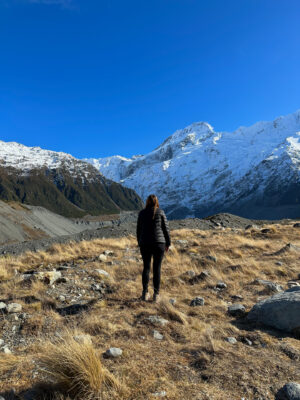
Hooker Valley
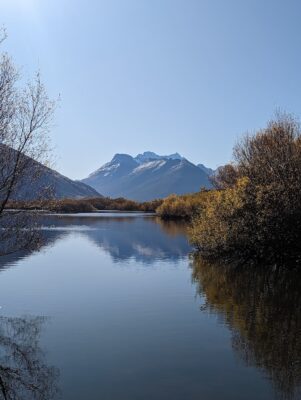
Flexi Pass In my opinion, the InterCity Flexi Pass is the best way to get around New Zealand without a car.
Like the Travel Pass, the Flexi is also a hop on, hop off pass, but it’s set up by hours instead. You simply purchase a set number of hours and can travel on their network for that amount of time. Once you’re running low, you can top up your hours.
If you’re planning to travel several times with InterCity and want the flexibility to see plenty of destinations, this is likely your best option.
InterCity Summary
Pros of InterCity
- Great bus network
- Can be inexpensive depending on which pass you travel on
- Can be flexible and make changes to your itinerary
- Gives you the chance to spend time in each place
Cons of InterCity
- There is a set timetable
- Not all bus routes run everyday or all year
- Doesn’t go everywhere
- You may still need a car/taxi to get to your activities
It’s advised to book in advance as the busses do fill up, especially in the summer.
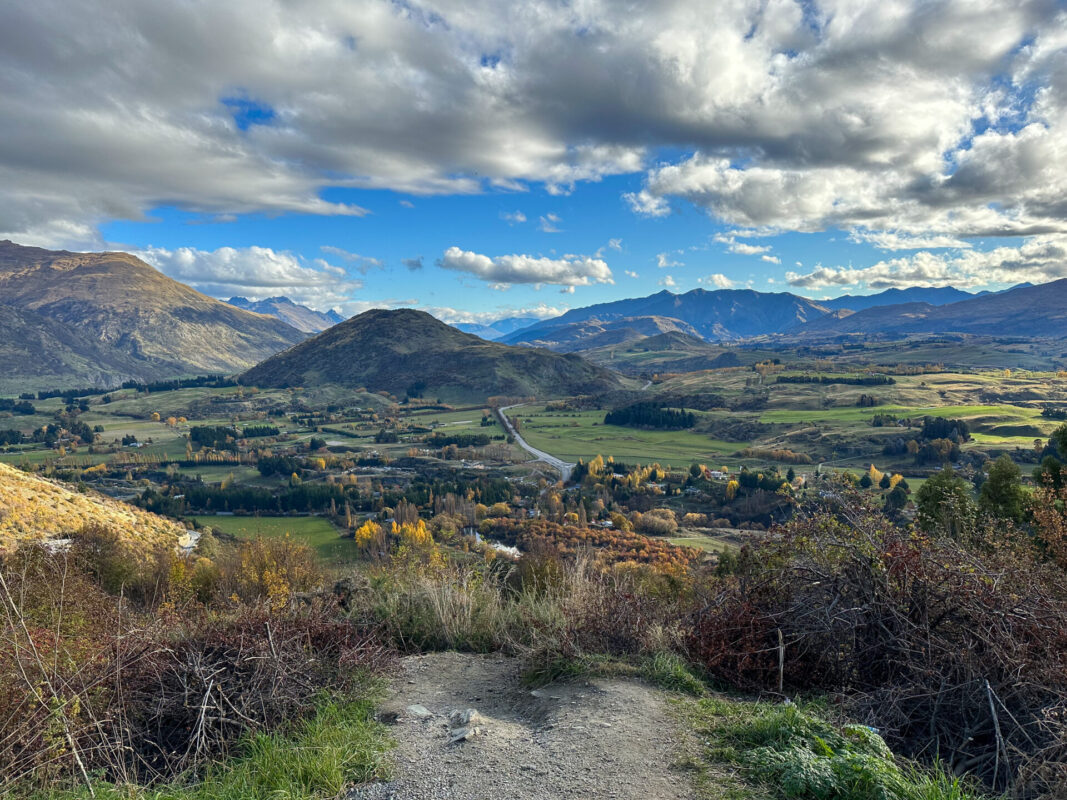
The Kiwi Experience Bus
If you’re a backpacker looking for a service like InterCity, but want to easily meet other travellers, then the Kiwi Experience could be an option for you.
The Kiwi Experience describes itself as like a guided tour but with the flexibility to do what you want. In summary, it’s a hop on hop off bus service with some added extras.
Many of the drivers act as a tour guide and will tell you about the area. They can sell you discounted activities and there is also discounted accommodation available as part of your package.
The Kiwi Experience is a great option for those who are nervous about travelling alone. You’ll be with like-minded travellers and experienced drivers, but still have the flexibility to do what you want. It’s a great option for getting around New Zealand with no car or campervan.
How it works
The Kiwi Experience offers hop on and hop off bus passes. There are a variety of passes to choose from which offer pre-set routes around New Zealand.
Once you’ve decided which route you want to do, you purchase your pass and book your busses. The tours range from 1 day all the way through to a minimum of 25 days.
If you want to see the highlights of both the North and South Island, I’d consider the Hokey Pokey tour ($1750 NZD). This tour takes you around the main spots in the North Island before doing a loop of the South Island. You’ll need at least 3 weeks to do this.
Their most in-depth bus route is called the Whole Kit and Caboodle . You’ll need at least 25 days to do this and it costs $1899.
For those with less time, consider the Tiki tour as this is only 16 days (1540 NZD).
All the tour options can be found on the Kiwi Experience website .
The Kiwi Experience also offer pre-organised group tours. I’ve spoken more about these below.
I personally find the Kiwi Experience a bit expensive for what it is. If you want to do a budget trip, you’re better choosing InterCity and staying at social hostels to meet people. If you want to be sure you’re going to meet people and have lots included, choose a fully guided tour.
Pros of Kiwi Experience
- Easy to meet people
- The drivers can help you plan everything
- It’s flexible so you can spend as much time in places as you want
- Can easily book accommodation through the website
Cons of Kiwi Experience
- It’s very expensive for what it really is
- It can be a bit of a party vibe
- You’ll still often find yourself needing to use taxis to get to specific places
Read a full in-depth review of the Kiwi Experience .
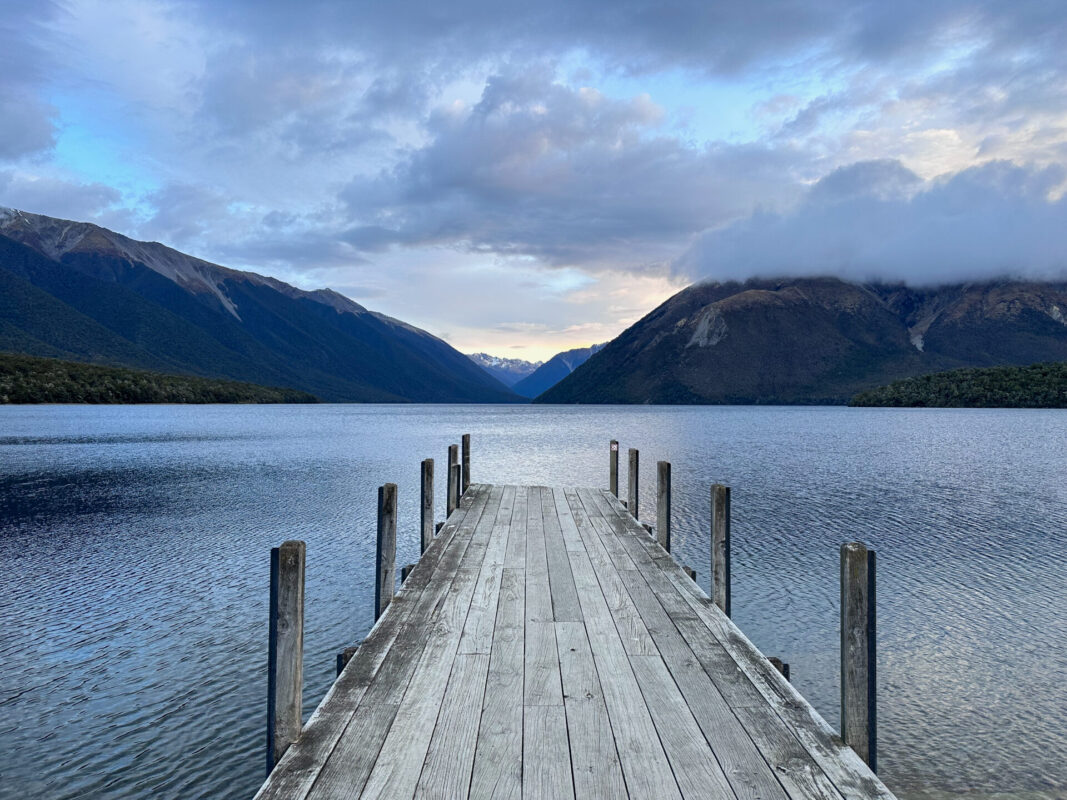
Travel by train
Unfortunately, it is very difficult to get around New Zealand by train. The country doesn’t really have a train network away from the cities.
One option to take the train in New Zealand is to choose one of the scenic rail journeys.
One of the most popular scenic train routes is the TranzAlpine which takes you through the stunning mountains from Greymouth to Christchurch. The train ride is approximately four hours. It’s one of the most beautiful train journeys in the world.
Another popular scenic train route is the Northern Explorer from Auckland to Wellington. The train passes through popular places in the North Island including Hamilton and Tongariro National Park.
The Coastal Pacific train is another stunning route which takes passengers from Picton to Christchurch via the east coast.
While using trains to get around New Zealand will be a challenge, they could be added to a bus itinerary. For example, consider taking the TranzAlpine train from Christchurch to Greymouth. From there, use InterCity to explore New Zealand’s West Coast.
Join a group tour
If you don’t have a car in New Zealand and are nervous about travelling alone, consider joining a group tour.

Group tours in New Zealand

Group tours are the perfect option if you want everything planned for you with little hassle. They can be expensive, but I think it’s a great way to get around New Zealand, see the highlights and meet like-minded people. If you’re nervous about travelling solo in New Zealand , a small group tour could be the answer.
There are many operators offering group tours in New Zealand. Some of my favourites include:
Intro Travel Intro offers 9 or 17-day tours around the country. You can opt to do the North or South Island, or both. The tour takes you to the major highlights of New Zealand, including Rotorua, Hobbiton, Waitomo, Mount Cook, Queenstown and Milford Sound.
If you’re coming to New Zealand on the working holiday visa, Intro offers an extra service to help you get set up for your stay. This includes sorting your IRD number and helping you find a job.
The demographic for Intro Travel in New Zealand is 18-40s.
Disclaimer: I worked as a Group Leader for Intro during my time in New Zealand. I receive no commission or benefits for promoting this tour on this website.
G Adventures G Adventures are one of my favourite group travel companies. They offer group tours all around the world. I’ve travelled with them several times and always have a great experience.
G’s demographic tends to be a little more varied, but they offer tours for 18-40s if you prefer a younger crowd.
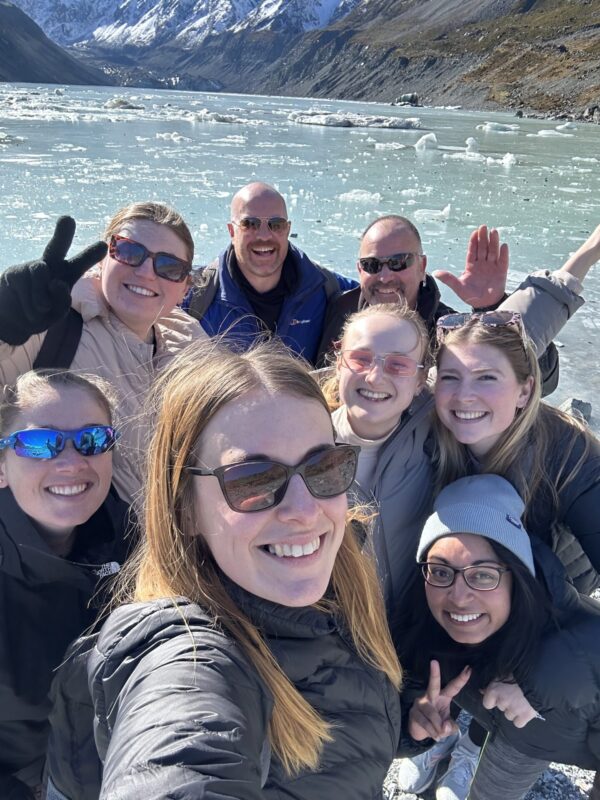
Intrepid Travel Intrepid is another popular group tour agency who offers tours around New Zealand. These tours tend to have a slightly older demographic. They’re another fantastic option for seeing New Zealand without a car.
The Kiwi Experience As well as their hop on and off busses, the Kiwi Experience also offer organised tours.
Choosing to join a group tour is a great way to see New Zealand without a car. Everything is organised for you and if something goes wrong, you don’t have to worry. It’s worth noting that there’s little flexibility with group tours. There is a set itinerary which you must stick to unless you leave the tour.
By boat or plane
New Zealand is made up of an estimated 600 islands, so it’s no surprise there are several boats taking people between destinations.
The most popular boat journey in New Zealand is the ferry between the North and South Islands . Whether you have a car or are travelling by bus, the ferry is the best option to get between the North and South Island. It’s a lovely boat ride with beautiful scenery, and there’s even the chance of seeing whales at certain times of the year.
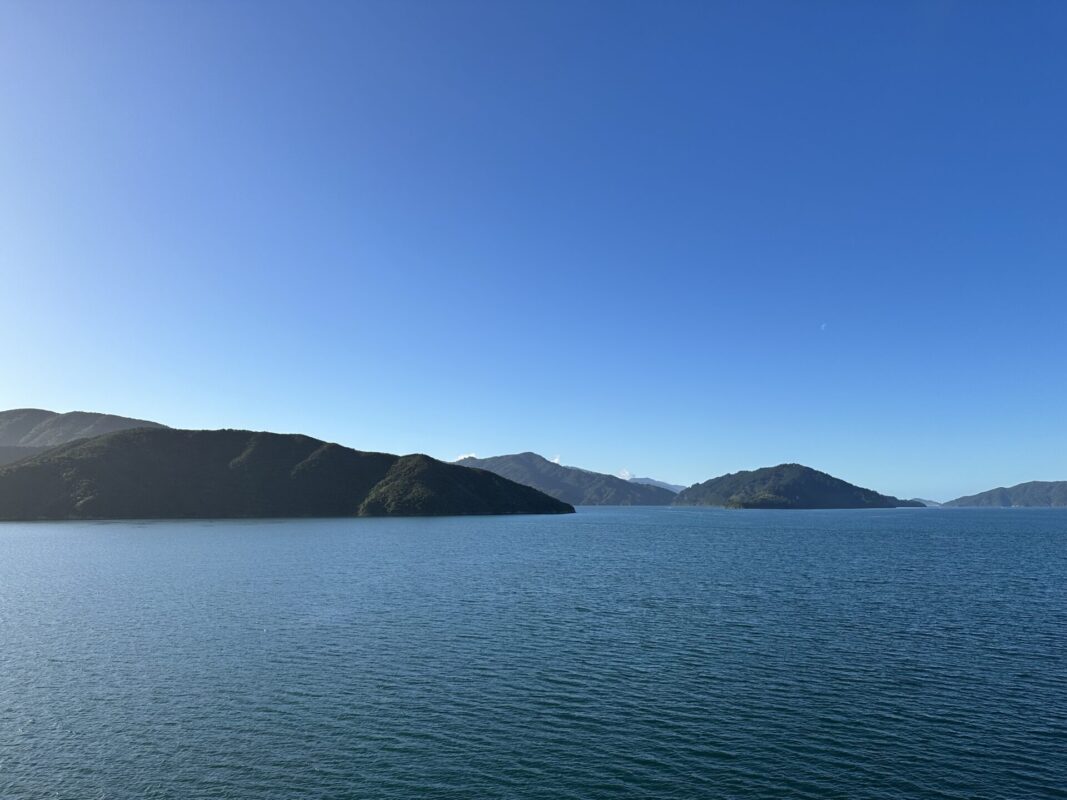
Despite New Zealand’s small size, many of the major towns and cities in New Zealand also have regional airports. While you certainly won’t be able to get around New Zealand by plane altogether, you’ll be able to fly between some of the more popular destinations.
For example, destinations such as Rotorua, Dunedin and Nelson all have airports.
Itinerary for getting around New Zealand without a car
To get around New Zealand without a car, consider using a range of different transport options. Here’s something I would consider:
Stop one : fly into Auckland and spend two days exploring New Zealand’s largest city.
Stop two: join an organised tour to Rotorua via Hobbiton and Waitomo Glowworm caves.
Stop three: from Rotorua, get the InterCity bus to Wellington (some of these busses go via Tongariro National Park if you want to stop here.
Stop four: from New Zealand’s capital, take the ferry across to Picton.
Stop five : using your InterCity bus pass, make your way down to Queenstown stopping at the major West Coast highlights. This includes Franz Josef and the beautiful town of Wanaka.
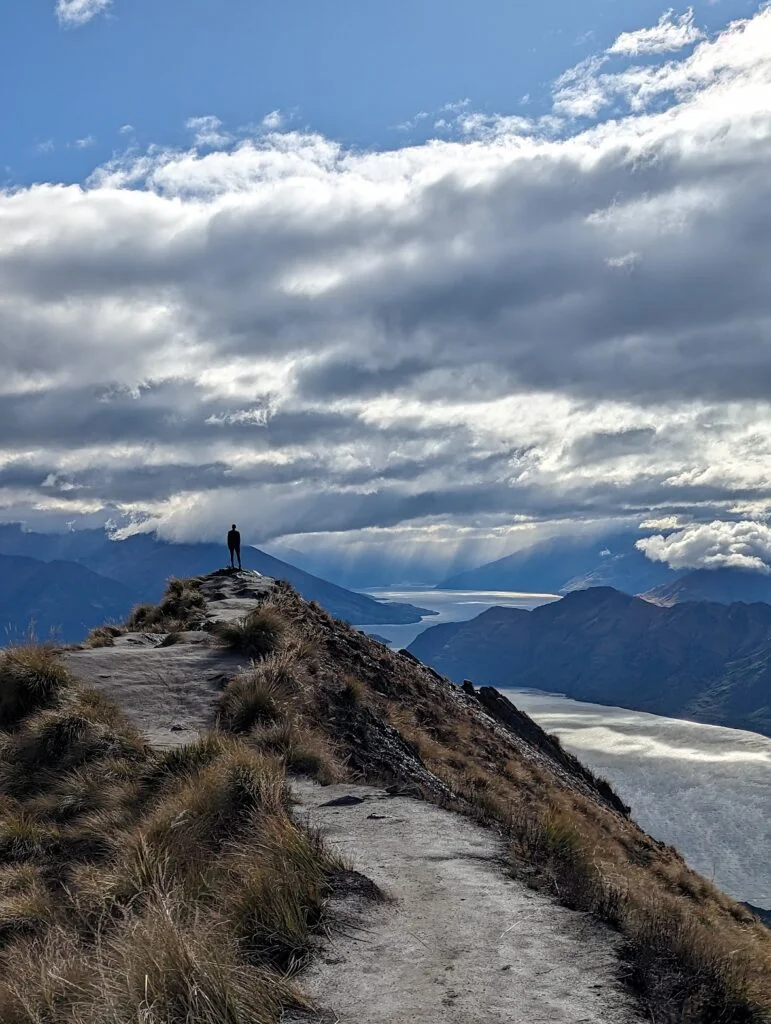
Stop six : spend some time in Queenstown, the ‘Adventure Capital of New Zealand’. Make the most of your InterCity bus pass and take a day trip to the wondrous Milford Sound. If you want to get off the beaten path, consider visiting Doubtful Sound .
Queenstown is home to the relaxing Onsen Hot Pools . The perfect place to relax after all this exploring.
Stop seven : join an organised tour from Queenstown to Christchurch via a stop in Mount Cook National Park , home to one of the best walks in New Zealand – The Hooker Valley Track. If you have time, stay for a few days in Tekapo.
Stop eight : finish your trip to New Zealand in Christchurch, the South Island’s biggest city.
To summarise, there are several different methods to get around New Zealand without a car. So don’t be put off if you’re not planning to drive. New Zealand is without a doubt one of my favourite countries I’ve ever been to and promises the trip of a lifetime.
Like this post? Share on social media.
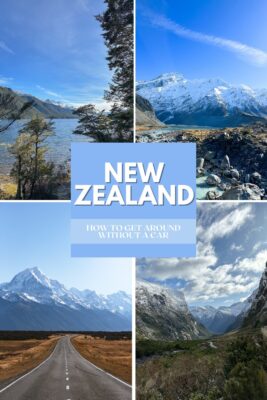
Related Posts
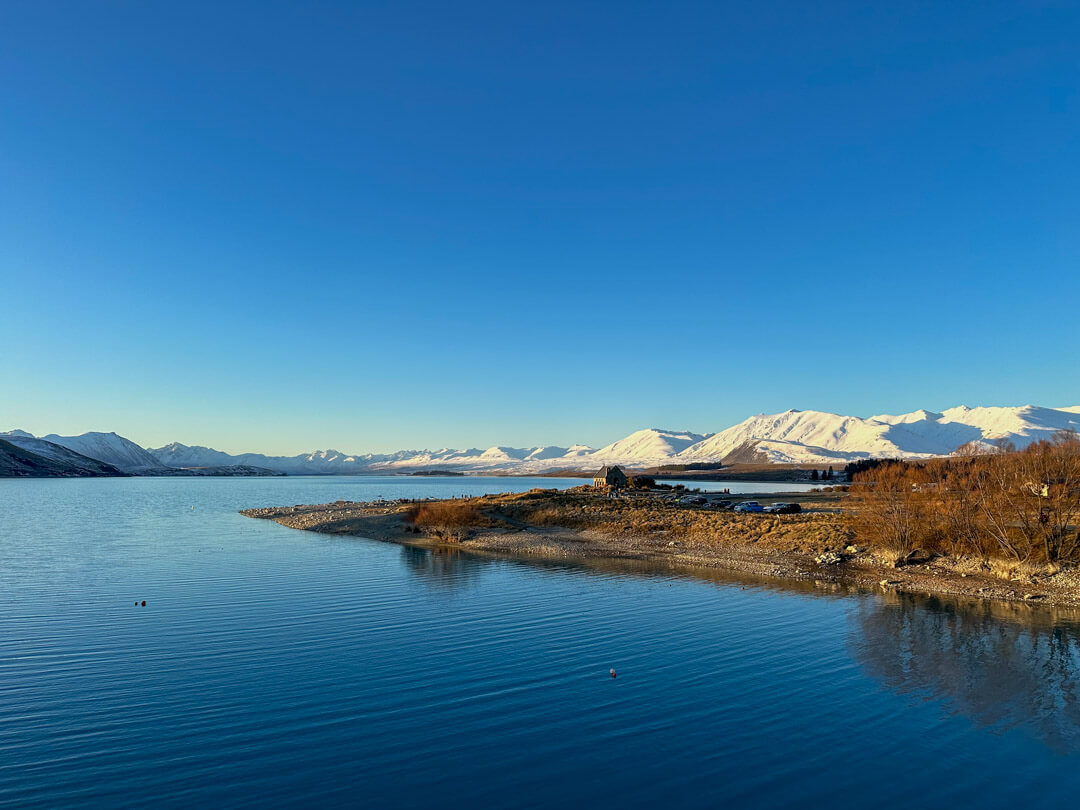
Lake Tekapo Camping Guide: The Best Campsites (2024)

Complete 7 Day Iceland Itinerary: THREE Different Road Trip Ideas
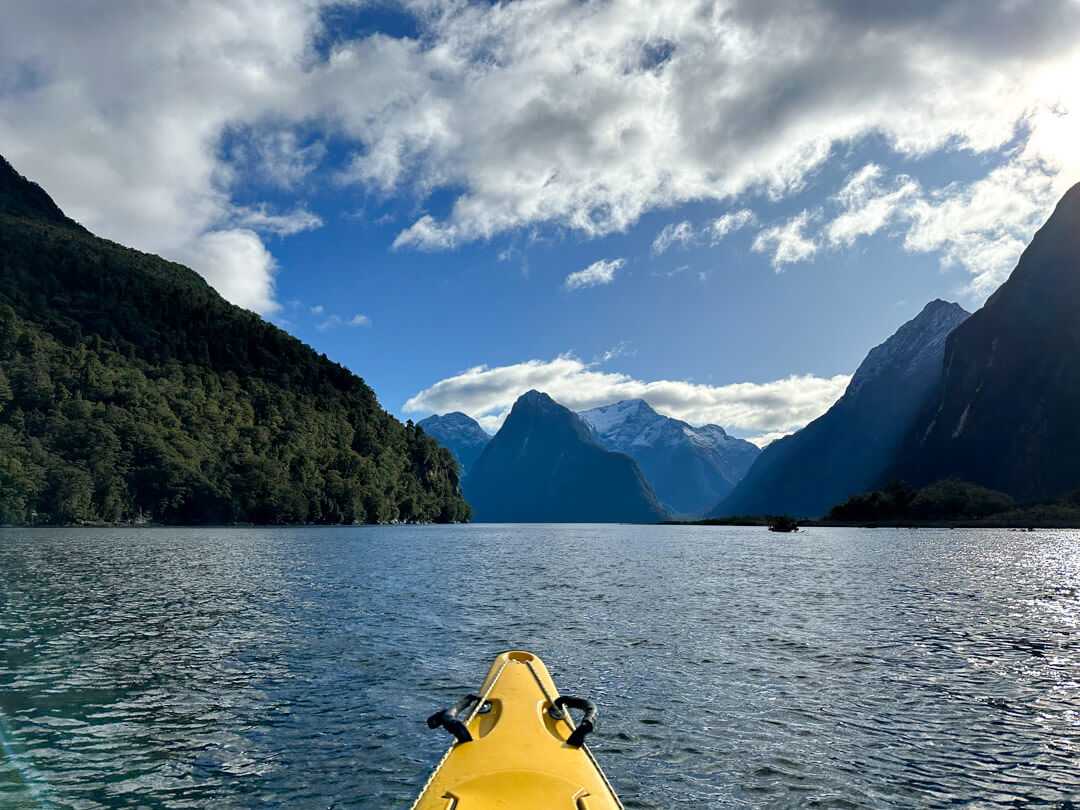
5 Reasons to Kayak in Milford Sound
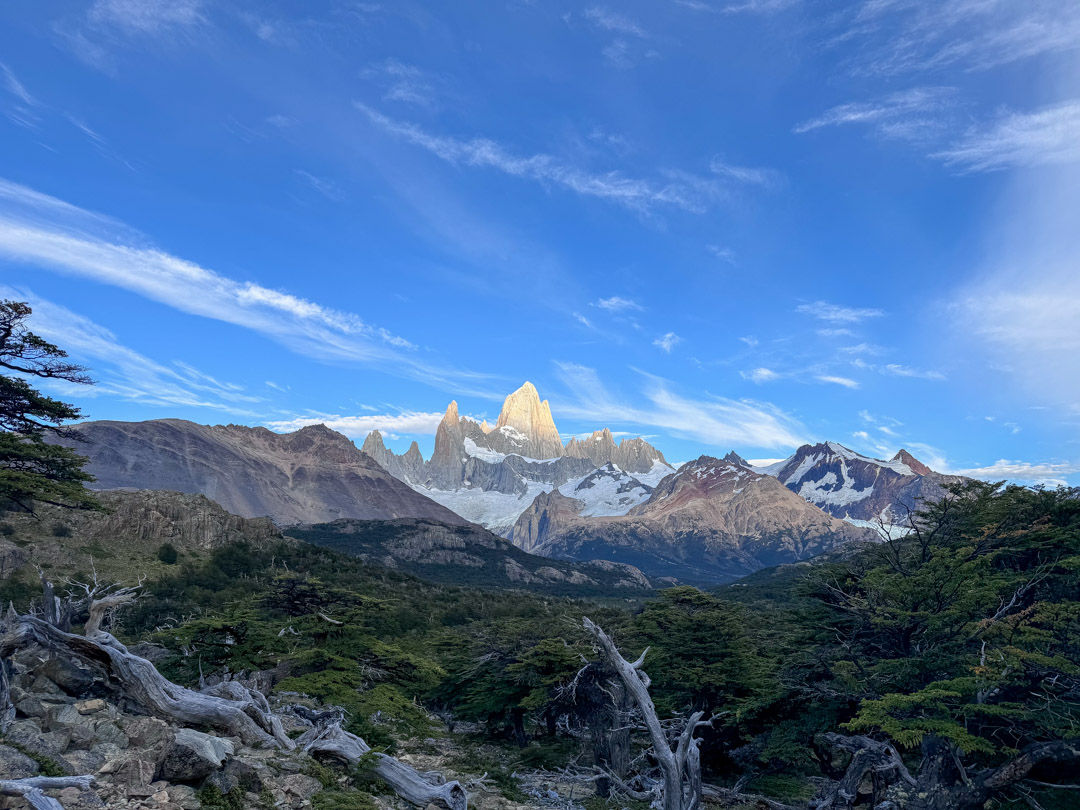
Backpacking Argentina: Complete Guide & Helpful Tips (2024)
SORT CONTENT BY LOCATION
CLICK TO DRILL DOWN BY COUNTRY/PROVINCE
Your browser is ancient! Upgrade to a different browser or install Google Chrome Frame to experience this site.
Inspiration
- Bikepacking 101
- Join/Support

- View Latest/All
- Bikepacking Videos
Your Stories
- Rider's Lens
- Field Trips
Popular Tags
- #bikerafting
- #Tour-Divide
- #family-bikepacking
- #winter-bikepacking
- #1Q5V (1 Question 5 Voices)
Gear/Reviews
- Bikepacking Bags
- Camping Gear
- Accessories
- #Editors-Dozen (Our Favorite Gear)
- #Gear-of-the-Year
- #MYOBG (DIY)
- #Decade-in-Review (Best of All Time)
The Gear Index
Latest indexes.
- Mini Panniers
- Saddlebags & Top Openers
- Cargo Cages & Anything Bags
- Gravel Bars
- Drop Bar 29ers
Bikepacking Bikes
- Rigid & Plus Bikes
- Drop-bar & Gravel
- Full Suspension
Rigs & Roundups
- Rider & Rig
- Race/Event Rig Roundups
- Worthy Builds
- Handbuilt Bikes
- #29+ (29-plus)
- #vintage-mountain-bikes
- #cargo-bikes
- Readers' Rigs (Dispatch)
- New Bikes (Dispatch)
Plan Your Trip
- Bikepacking Guides
- Bikepacking Food
- Gear & Pack Lists
- Bike Photography
Essential Reading
- Leave No Trace (for Bikepackers)
- Guide To Bikepacking Bags
- Bikepacking Gear That Lasts
- #Bikepacking-Awards
- Power Of An Overnighter
- Advice For New Bikepackers
- Our Favorite Bikepacking Routes
-
Where to Begin
We have over 300 original and curated bikepacking routes in our global network spanning nearly 50 countries.

Start at our worldwide routes map to dig into our detailed guides with GPS maps and inspiring photography.
By Location
- The United States
- Latin America
- Middle East
By Length (days)
- Overnighters & S24O
- Weekend Routes (2-4)
- Week-long Routes (5-10)
- Odyssey Routes (11-30)
- "Freakouts" (31+)
Local Overnighters
The Local Overnighters Project is a unified effort to document and map one-night bikepacking routes all over the world—by locals, in their own backyards.
The Bikepacking Journal is our biannual printed publication. Each issue features a collection of inspiring writing and beautiful photography. Find details on the three most recent issues below, join the Bikepacking Collective to get it in the mail (anywhere in the world), or click here to find a collection of selected stories in digital format.

The special edition 10th issue of The Bikepacking Journal is one you won’t want to miss! It features 25% more pages with extra stories, bonus art and maps, and much more...

Issue 09 takes readers on trips through time—one to the early days of bicycles—and offers several reminders to be grateful for supportive friends and family, and strangers we meet along the way...

For Issue 08, we invited several contributors to return and pick up where earlier trips and ideas left off and also feature a handful of first-timers whose perspectives we’ve long been eager to share...

Going Your Own Way: Two Months Across New Zealand
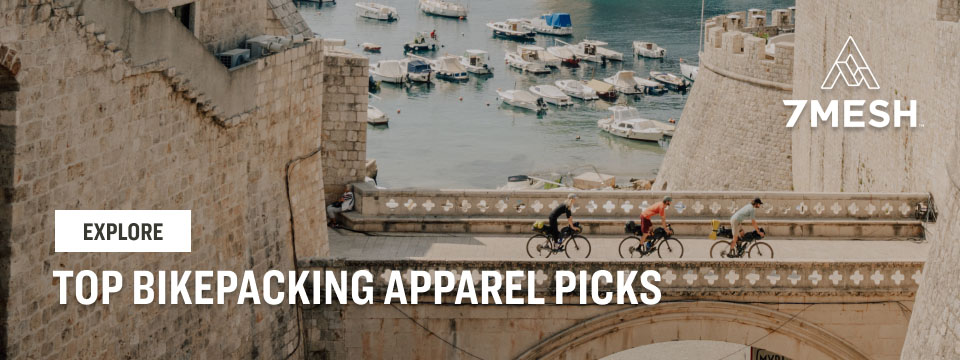
By Matt Bark
Guest Contributor
Following a two-month bikepacking trip around New Zealand, Matt Bark reflects on the value of following established routes versus the potential risks and rewards that come with charting your own path. Find his story of finding the right balance, making new connections, and embracing spontaneity here…
PUBLISHED May 29, 2024
Looking out from the veranda of Carsten and Carmen’s home in Waikuku Beach, we basked under the morning sunshine, feasting on a breakfast of scrambled eggs, cheese, home-baked bread, and local honey. As we sat, they discussed the joys of moving to New Zealand and its effect on their children growing up. Carmen brewed a second pot of coffee as Carsten scratched their dog behind the ear.
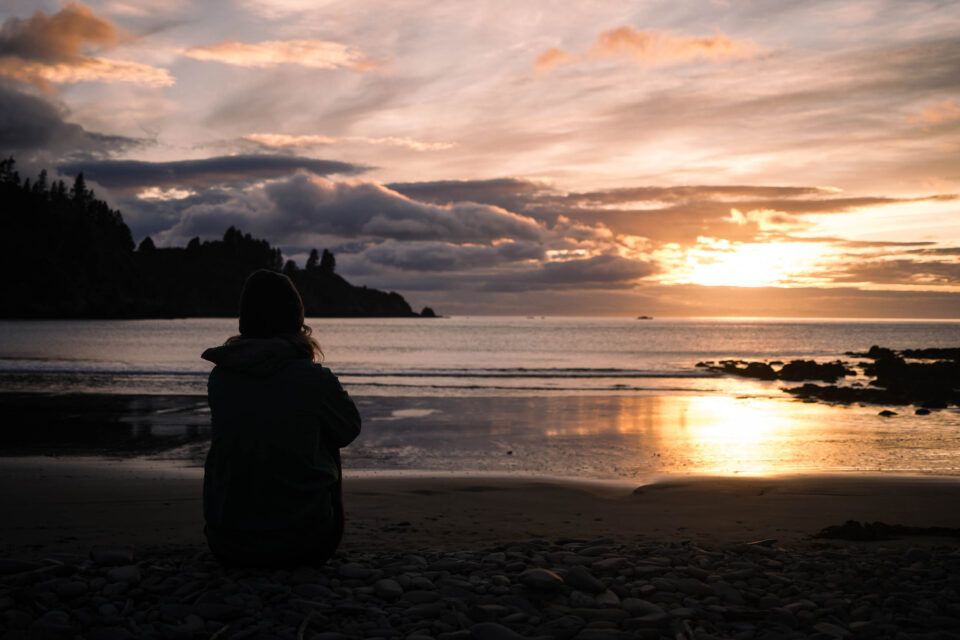
After four weeks of living in a tent, riding most days, breakfasting on peanut butter wraps, and sitting on dusty floors, this return to comfortable homeliness was pure bliss. None of this would have been possible had we not followed the pre-planned route of the Tour Aotearoa. Equally, none of this would have been possible had we followed the pre-planned route in its entirety, Carsten and Carmen’s home being a 200-kilometre ride from the nearest point on the trail.
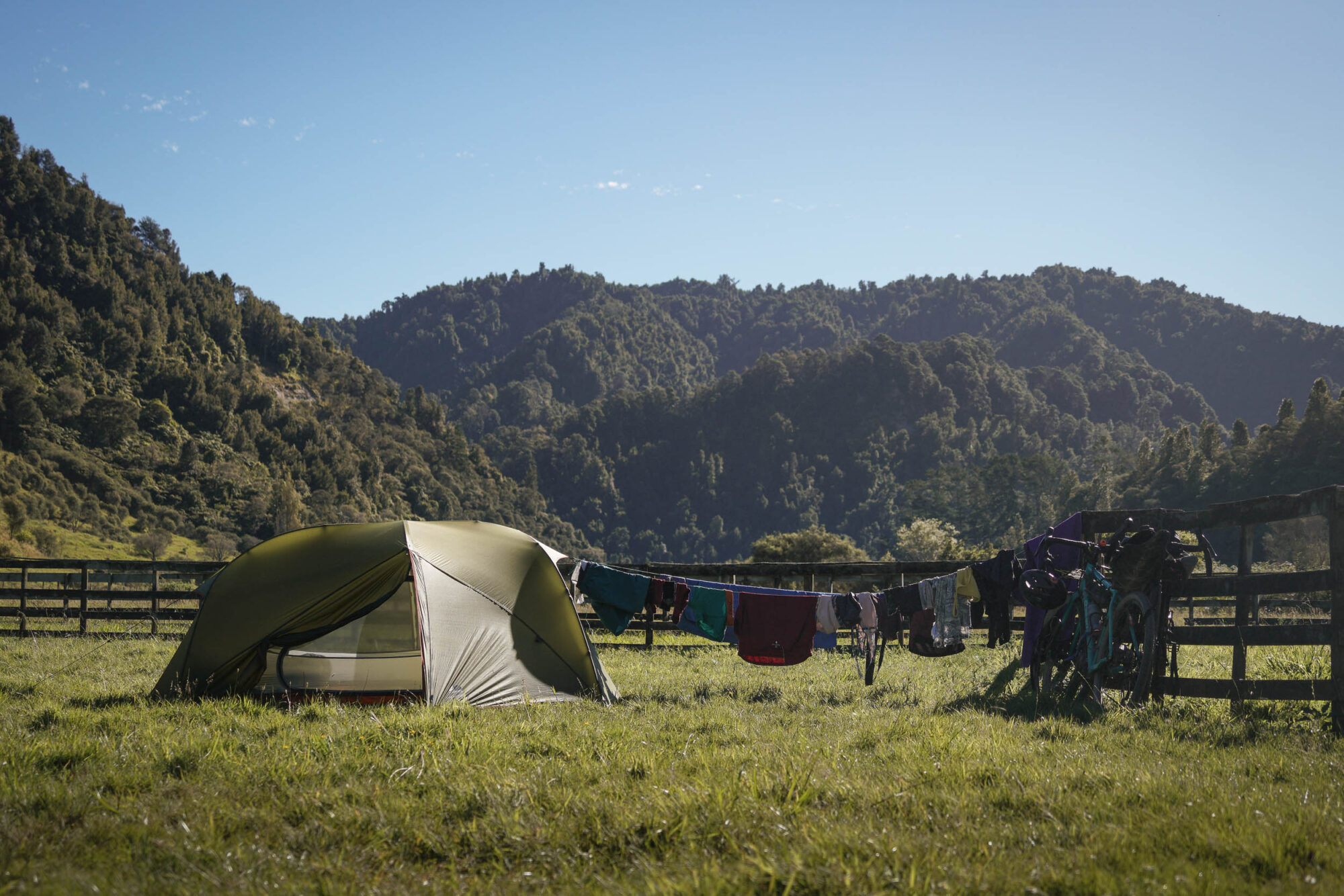
We had met Carsten about three weeks earlier, during our second day on the Timber Trail through the Pureora Forest Park, about day nine of our 54 total days spent riding through New Zealand. He buzzed by, calling “Hallo!” in his ever-cheerful but undeniably German accent as I stood holding the bikes and Georgie refilled our water bottles from a stream. In many scenarios, that would be it, a quick greeting or maybe a discussion of the route ahead between those heading in opposite directions. But we were following a well-known long-distance trail, which meant we were following the same route as Carsten. Our plans had fortuitously coincided, and each night, we camped in the same towns, becoming familiar faces to one another over the next nine days to Wellington.
For this trip, we started along the Tour Aotearoa route, originally devised by the Kennett Brothers as an annual brevet that challenges riders to complete the 3,000-kilometre route in 30 days or faster. The riding is hugely varied. Starting on the sands of Ninety Mile Beach at Cape Reinga atop the North Island, it follows flat rail trails, exciting mountain bike tracks, and middle-of-nowhere gravel roads. It passes through some of the biggest cities of Auckland, Wellington, Palmerston North, and Invercargill before ending in Bluff at the base of the South Island. It even includes an optional jet boat trip on the Whanganui River. So striking and variable is the terrain that many choose to complete the route at a slower pace or in stages over multiple trips.
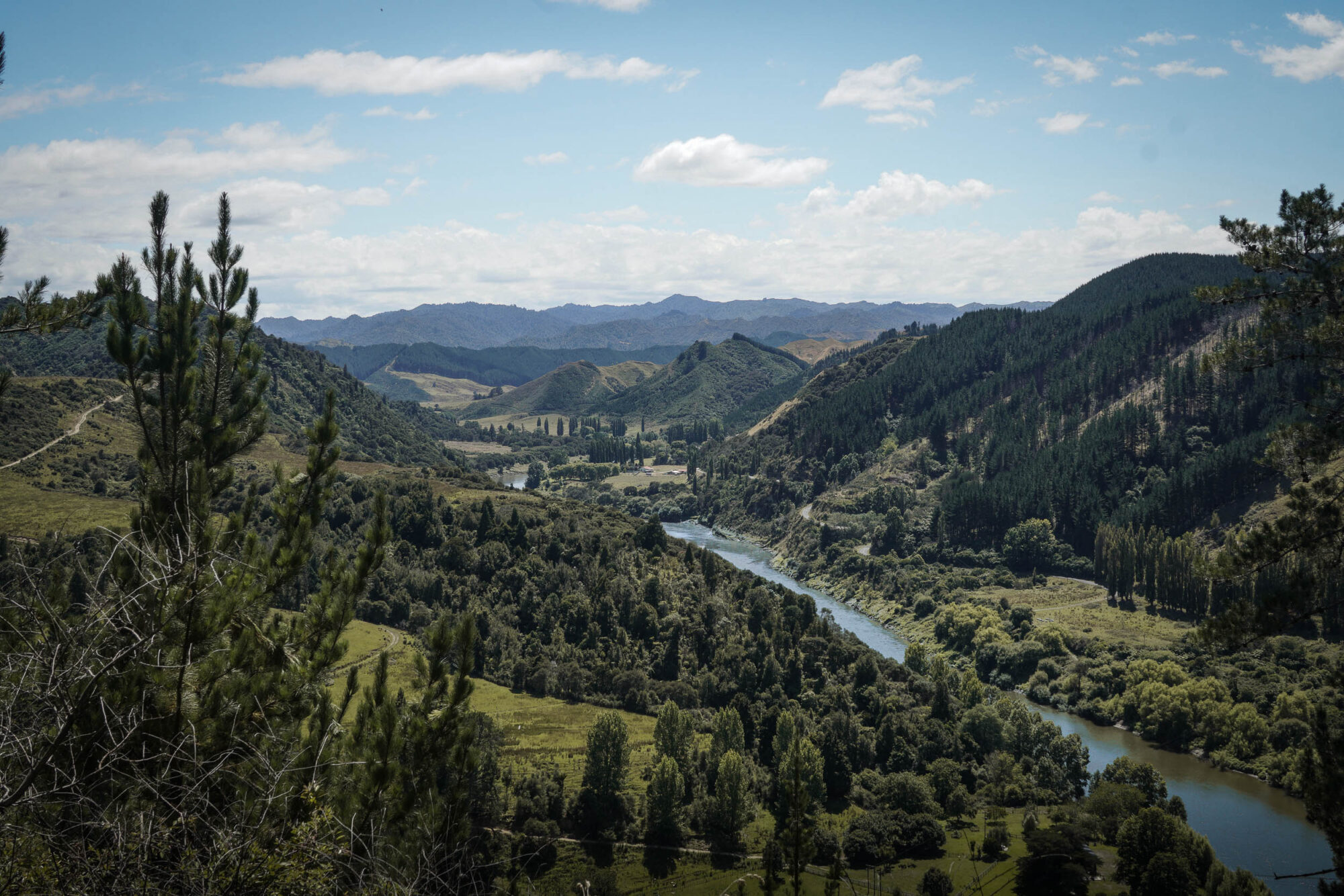
The benefit of having a pre-defined route to follow alleviated the anxiety of route planning in an unknown country, removing the fear of finding ourselves facing a barbed-wire gate with a large “private land” sign. Having come across this numerous times throughout Spain, Italy, Sardinia and the UK—and more than once ending up pedalling along a fast highway as the only feasible detour—we could ride easily knowing we were utilising the knowledge of those who’ve ridden before us. This meant that, save for weather-related surprises, the track would be largely passable and legal. There were even alternatives to the gnarlier sections for those on heavier touring rigs.
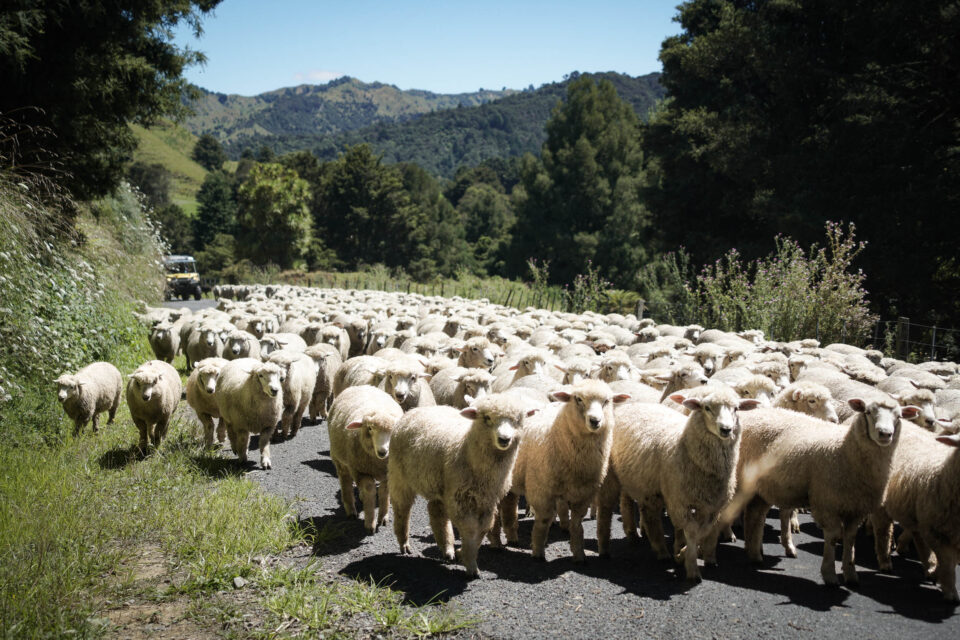
Beyond the security of a known route, there’s also an increased likelihood of meeting others and sharing those tales of how we handled tough sections, gleaning knowledge from each other’s research of the route ahead. On the same day we met Carsten, we also met Jon and Deb, who were riding the northern half of the Tour Aotearoa. As with Carsten, we saw them nearly every day at some point, and we soon struck up a friendship. They shared their accounts from racing and big bikepacking trips, offering us a wealth of knowledge we didn’t think we could possibly reciprocate, but after a few days, we noticed they’d started carrying wraps for lunch, something they’d picked up from watching us! A sense of close-knit camaraderie quickly developed from shared experience and goals. Their trip is one many of us dream of; tired of the slog of career-driven lives, they took a year out, rented out their home in Colorado, and set off in search of adventure.
On such a busy route, you will also inadvertently see people flash by and never learn their names or stories, which always seems a shame. On day three of the trip, we were battling fierce headwinds across the flat Hauraki Plains with nothing but each other to hide behind. We saw a pair following us, gaining quickly. They whipped by with a wave and a quick greeting that was stolen by the wind. This was an occurrence we expected to happen frequently over the coming weeks. The disparity in speeds of riders across the route will mean you often meet someone new to chat with at a campsite: those going slower, amazed at your progress, and those who turn up hours after you, dusty and exhausted, having ridden far further that day.

Except, wait a second, “Aren’t you the two who passed us a week ago on the Hauraki Plains? How did we get here before you?” Joost and Eva were fast on the bike, having just completed the Tour Divide in the States, followed by time touring Cuba and Costa Rica; they were strong. But here, they took days as they came and regularly took a day or two off the bike to experience the landscapes or shelter from the weather. We had leap-frogged them but would now see each other for the next few days, always amused by their infectious energy, such as pulling a bottle of gin out of a tail bag at one point. They were another couple who had rented their home out for a year and gone off on a bikepacking adventure around the world. Food for thought there.

A good route builder will weave highlights seamlessly into a journey whilst maintaining a flow. However, no matter their talent, you’ll naturally find your tastes will diverge at some point. If you have the ability and time to jump off route, you can visit some of your own highlights or inject some personal adventure. Sometimes, this can be a simple turning off, visiting somewhere, and returning a few miles back to where you were—much like our flying visit to the movie set tour of Hobbiton from the Lord of the Rings movies, only three miles off route and (as a longtime LOTR fan) worth every one of them when sat enjoying a beer in the actual Green Dragon Inn.

So successful was our Hobbiton detour that the very next day, we again decided to forego the pre-planned route and took a self-planned, two-day detour to Rotorua to visit the geothermally active town and its natural hot springs. But as we turned off onto a small Komoot-suggested road into the hills, a local stopped us and warned that the area we were heading to was not particularly safe. Unsure if she was serious or just trying to stop people from going past her home, we anxiously discussed our options.
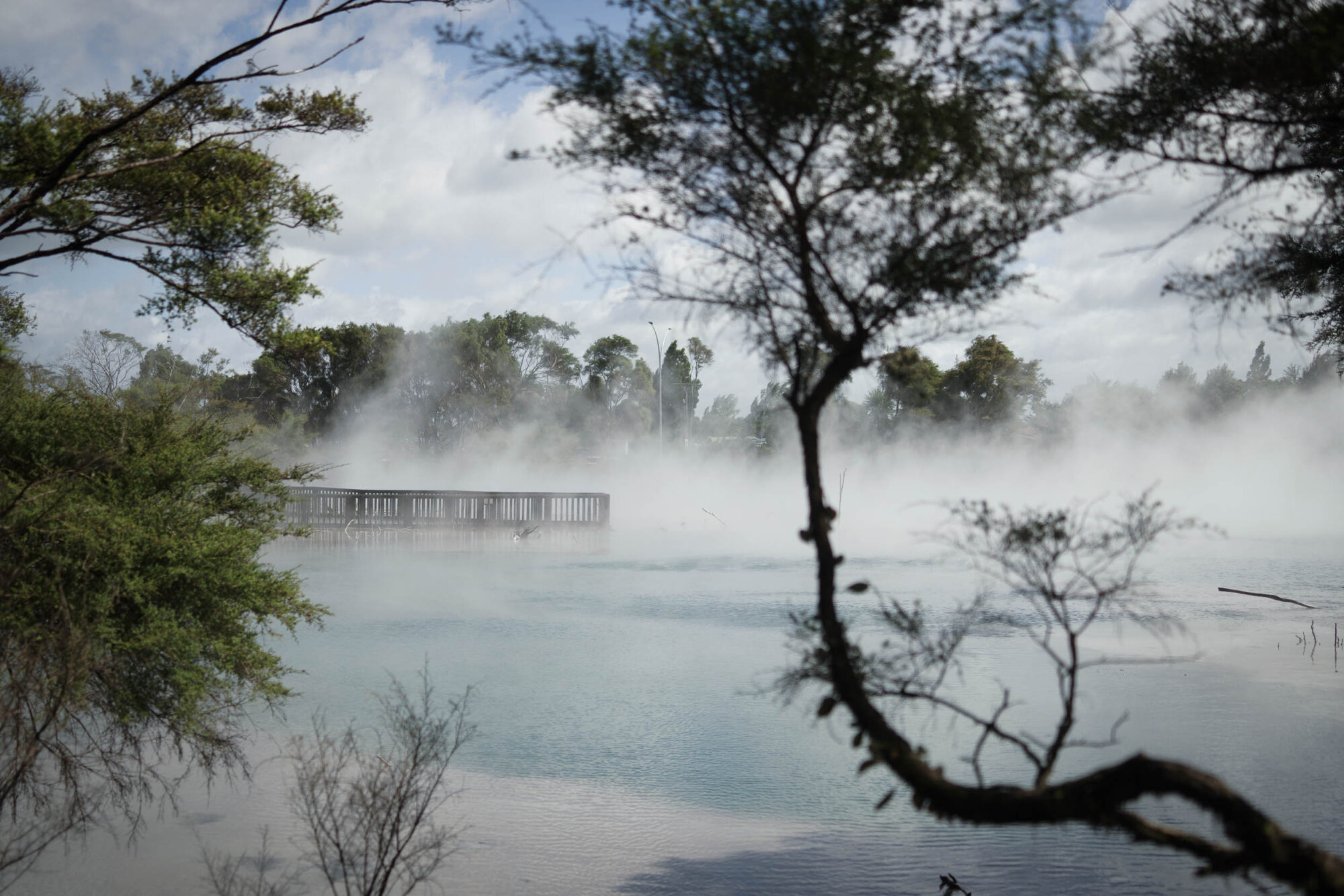
Following the advice meant turning back on ourselves and spending some miserable miles on a busy state highway or risking the mortal dangers that could lie ahead. The possible dangers and two-day detour soon seemed worthy when we stood in the kiwi hatchery watching two-day-old kiwi chicks being cared for. Combine this with soaking in the 40°C water and looking out over the lake, and the detour was worth every extra mile.
But within a lengthier detour lies a dilemma: do you return the way you came or loop around to find the route later on, potentially missing out on that bit in-between, forever unknown? What if it was an absolute gem of the entire route? We did just this and were rewarded with quiet country gravel roads and a beautiful riverside trail. Everyone we spoke to later said how good that section we missed was, but was it better than hot thermal pools? We will never know. Better than seeing two-day-old kiwi chicks? Unlikely.
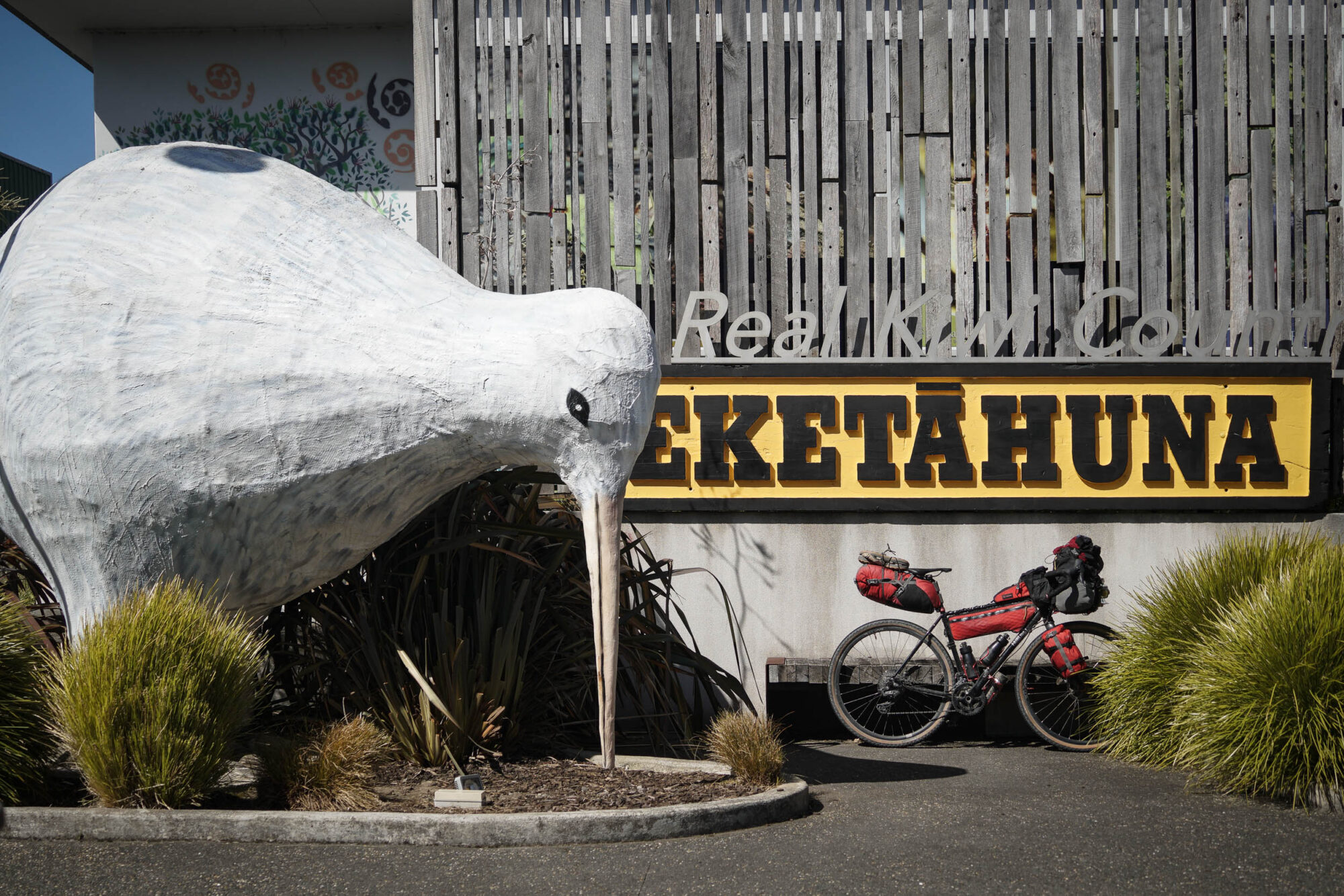
Wildlife detours formed a strong backbone for our trip, with our entire South Island plan based on improving our chances to see some of New Zealand’s special marine and bird life. The first detour took us to Kaikōura, which is renowned for its marine life, the sea trench just off the coast, and the combination of major sea currents forming the perfect habitat for dusky dolphins, fur seals, and sperm whales. The second saw us travelling to Dunedin, home to the only mainland nesting colony of albatross in the world. But both sit on the east coast, and the Tour Aotearoa route follows the west. Handily, the Kennet Brothers could assist here with another route, the Sounds-to-Sounds, which flows more to the east of the island. However, we still needed to divert off to reach our detours. We patched together a series of organised routes from the guidebook, sprinkled in a few roads, and stumbled across a few trails, researching our own ways adding to the sense of adventure.
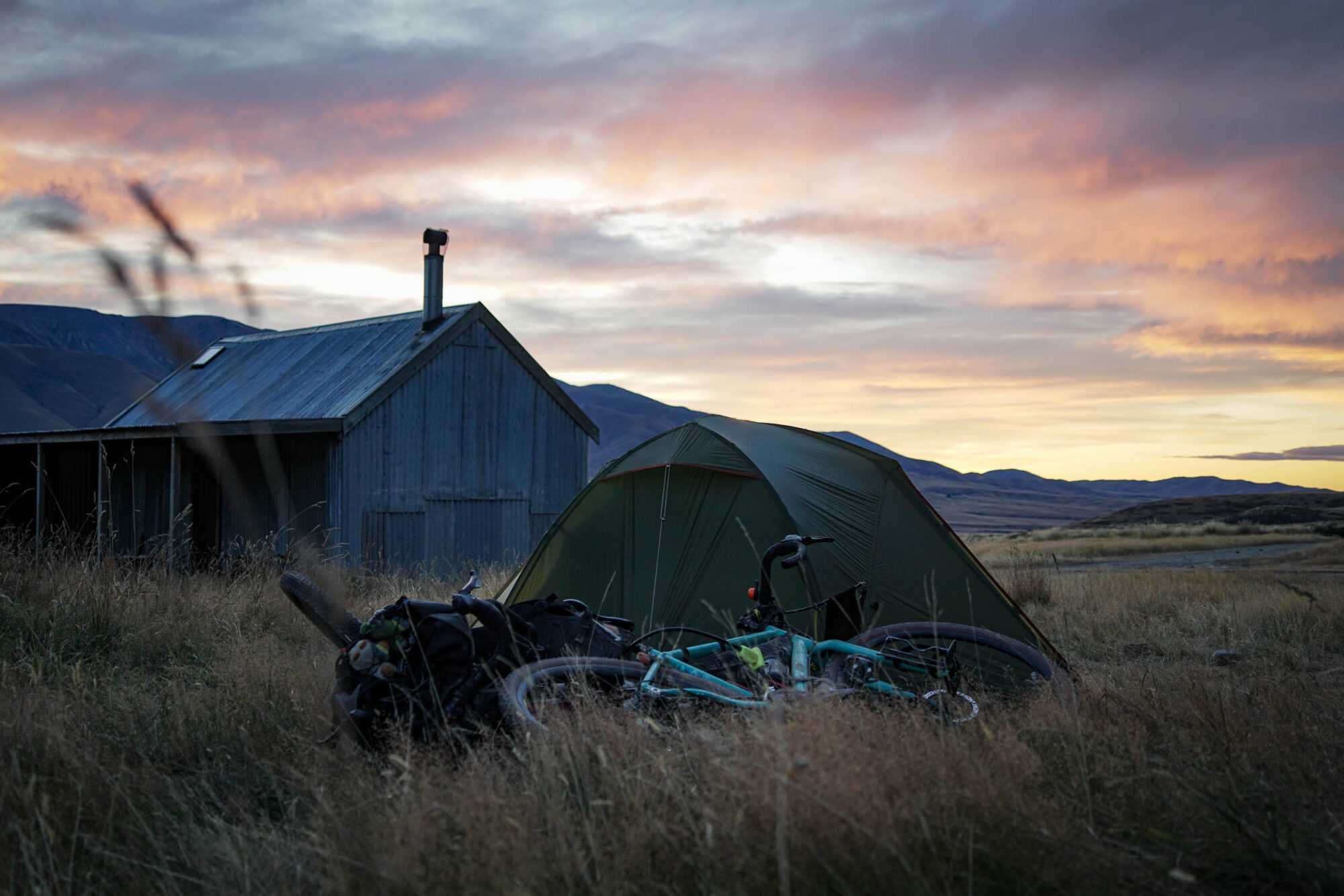
Navigating back to the route after Kaikōura, we once again faced the choice of going back the way we came or looping around. The way back, although a pleasant ride, was a day and a half back along a road we’d already ridden, and there’d be a significant amount of climbing. Looping around involved a busy, winding state highway and the accompanying concerns about riding in traffic. Instead, unencumbered by having to follow a pre-prescribed route where we didn’t want to, we booked a train down the coast and sat enjoying the views out of the panoramic cars over the rocky coast and rolling plains. From the carriage, we spotted the state highway traffic winding into fast, dark tunnels with no cycle lane; we were sure we’d made the right decision.
Most cyclists we met on the North Island seemed to be following the same Tour Aotearoa route, but on the South Island, we met riders on far more diverse adventures. We crossed paths with the likes of Elaine on a shared Warmshowers evening, following a long-term Tour Aotearoa and Sounds-to-Sounds combo before setting off for Vietnam. I spent a serendipitous evening chatting to Mike at a campsite, creator of the Camels, Dunes, and Wadis Loop in the United Arab Emirates about all things bikepacking and his meandering tour of the South Island. We met the Hughes family , who were spending a year cycling around the world with their three kids and discussed the cycle tourism industry with Pete, a member of the New Zealand Cycle Trails board. In all these interactions, we talked about the trails we’d share just as much as stories and tales from places we would unfortunately miss.
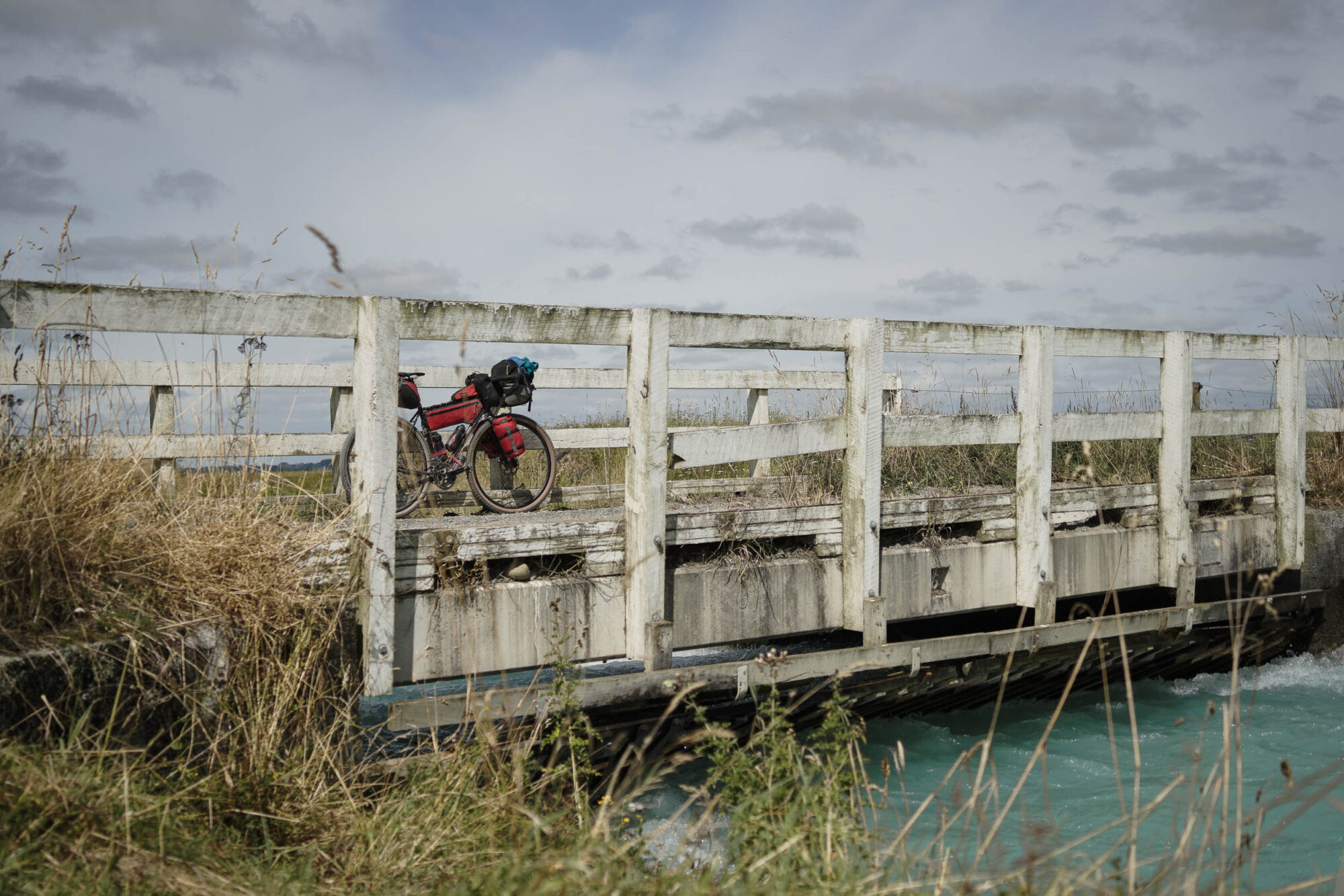
It’s easy to get consumed by a bikepacking bubble and forget that people without bikes do, in fact, exist. As the setting sun cast a golden light over us at one campsite, we got talking to Jen, who loved being outdoors in the tent and was out there for the weekend enjoying nature. Discussions led to our route and a rough idea to visit Dunedin, which turned out to be her home, and she kindly offered to put us up for a couple of nights. Once we got there, we left the bikes behind and jumped in her car to visit the albatross colony visitor centre, some of her favourite beaches, and a few microbreweries in the city. It was a chance encounter that you can’t find on any pre-planned itinerary, but it provided some of the best memories of our entire trip.
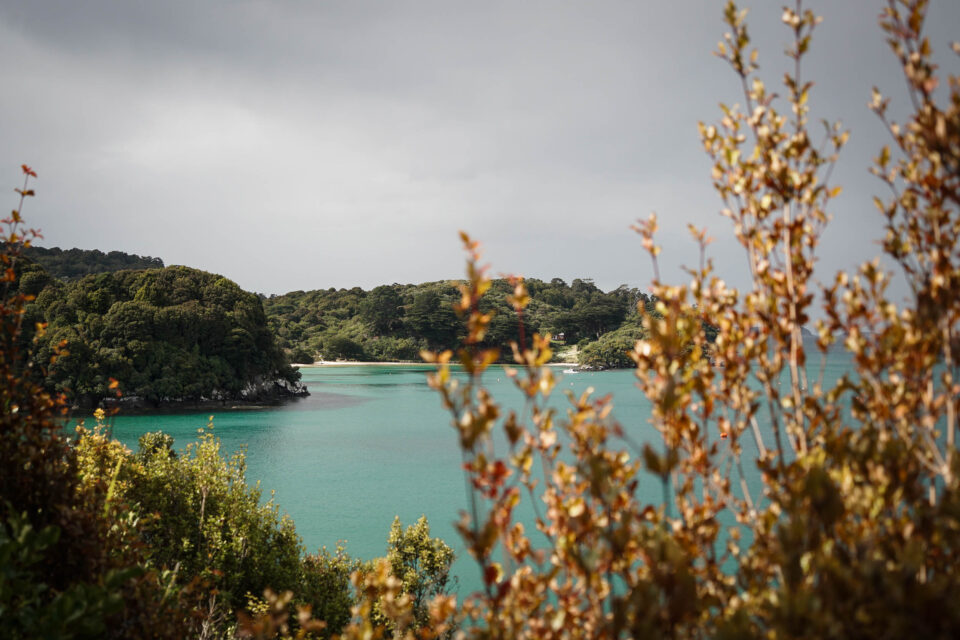
Facebook groups for big routes like the Tour Aotearoa and Sounds-to-Sounds allow you to chat to those with prior knowledge and gain their insight. Hannah was one such person, found through one of these Facebook groups, who had done a similar Tour Aotearoa and Sounds-to-Sounds trip and now resided on the island of Rakiura (Stewart Island) off the southern coast. After following our journey down the country, she invited us to stay with her if our detours took us that way. Rakiura doesn’t offer any bikepacking, but it’s a stunning island, and Hannah showed us around some of her favourite spots. An absolute highlight here was seeing kiwi out in the wild (the birds again, not the people!), aided by Hannah’s position as a guide with one of the local kiwi tour companies.

We finished our tour with a few days to cycle back from Bluff up to Queenstown for a flight home. Once again, we were now following the Tour Aotearoa route but in the opposite direction to the conventional flow. This gave us an interesting view of the route, which was very different from how many will experience it when finishing in Bluff. As is often the way with big routes, the finale can be somewhat dull but necessary to get you to some final point. Think arriving at John O’Groats with all its tourists or through an industrial estate at the back of an airport. It’s a struggle I have with many of my own routes that require some form of transit system. Here, the final stages near Bluff are flat and next to a busy highway, and they feel somewhat anti-climactic.
Thankfully, we did that final section in reverse, so we experienced a crescendo to our final few days. As we headed north from humble beginnings in the flat expanse, views of distant hills slowly grew into snow-capped mountains towering above our final gravel road. We saw a few Tour Aotearoa riders heading in the opposite direction and waved cheerily to them. As we neared the end of that final day, I spotted two riders sitting on the other side of a river crossing; they were watching with keen interest in how I would tackle it. We quickly realised that after not seeing them in over a month, it was Joost and Eva sitting there on our final day.
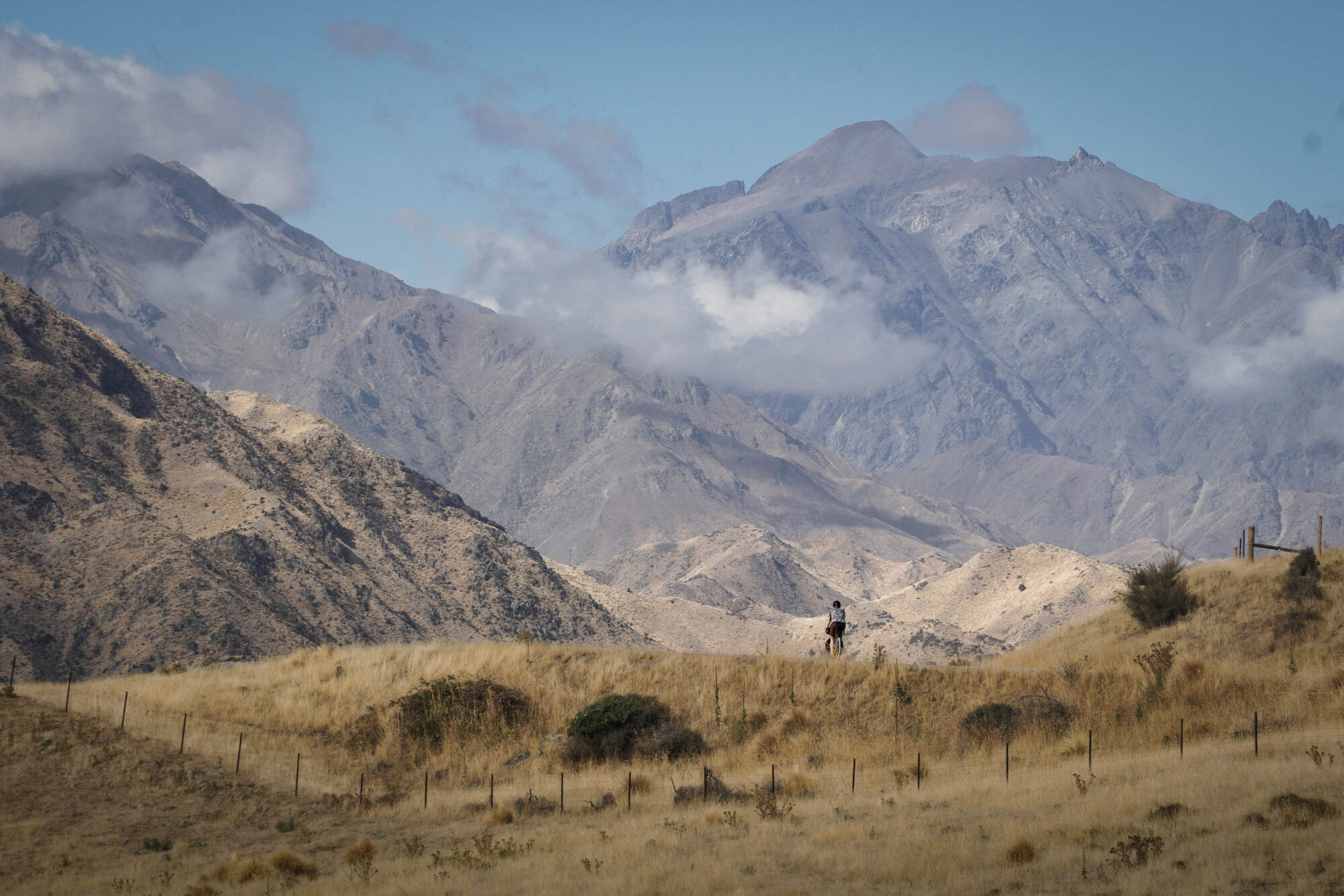
Our decisions and detours over the past 40 or so days meant we crossed paths once more—friends made because of riding a pre-planned route, friends reunited because of not religiously following that pre-planned route. We sat and shared a final coffee with them; the bottle of gin from before was, unfortunately, nowhere to be seen.
Further Reading
Make sure to dig into these related articles for more info...
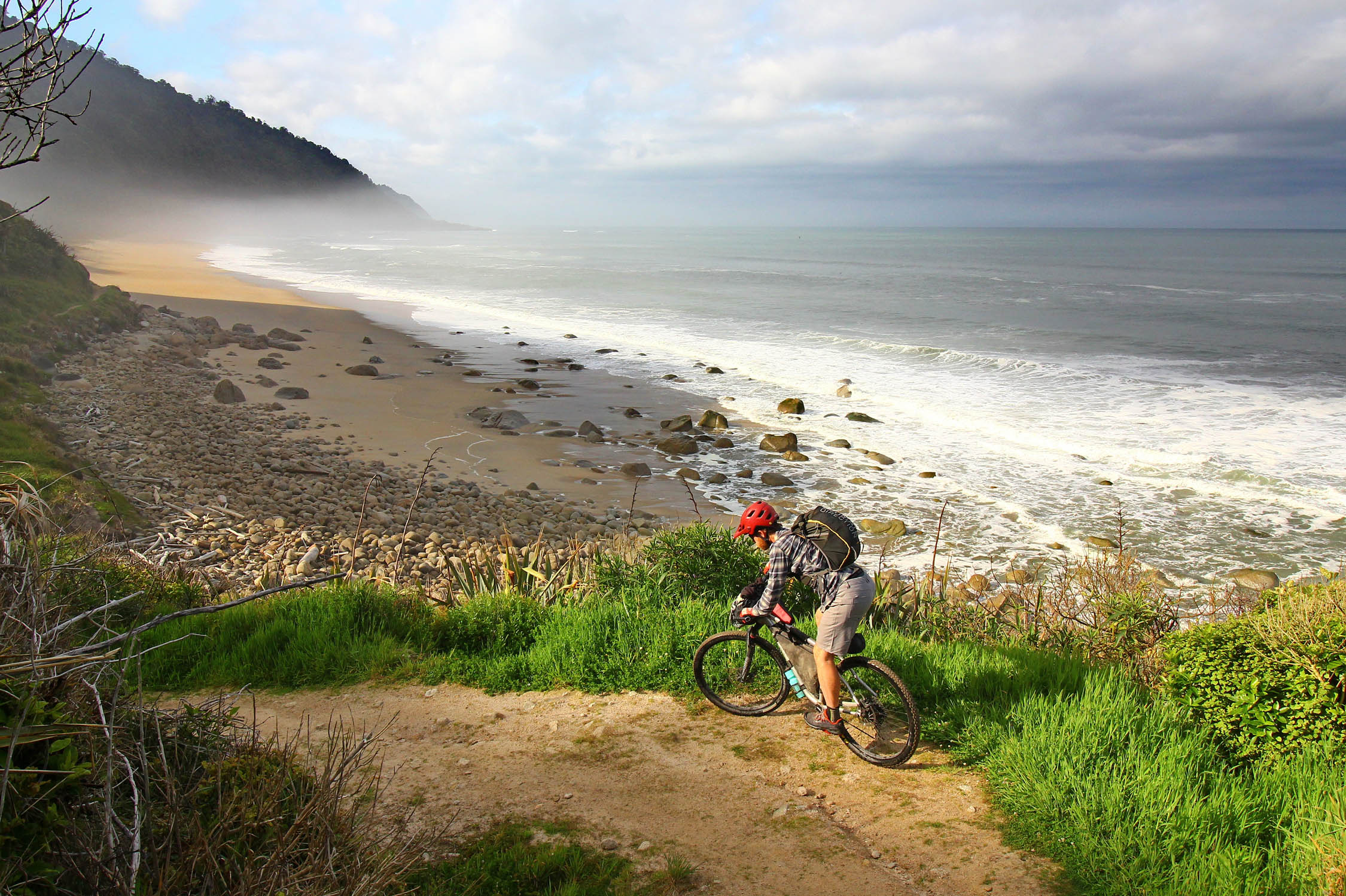
Top of the South (TOTS), NZ
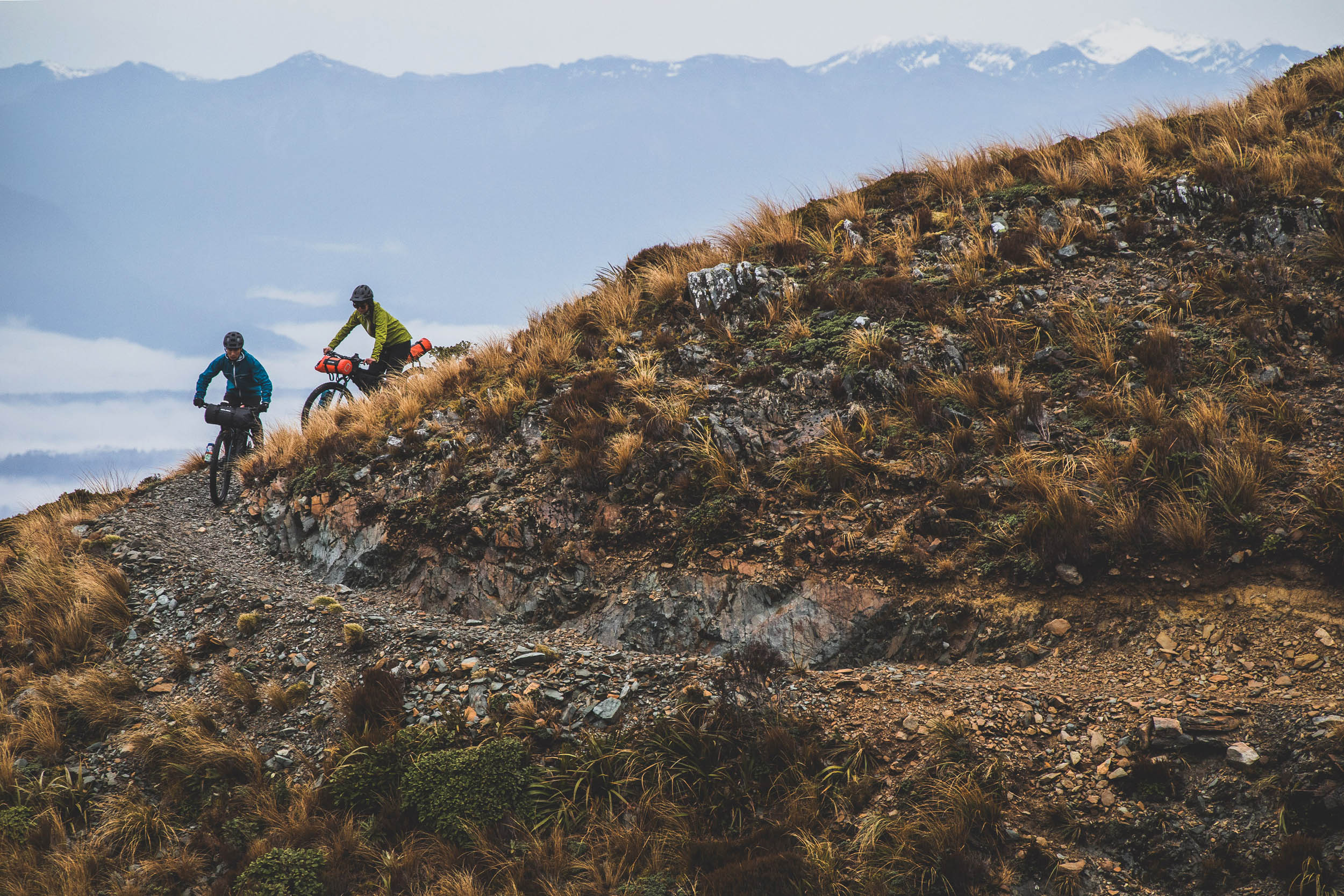
Bikepacking the Paparoa Range: A Love Letter of a Boy’s Journey Home
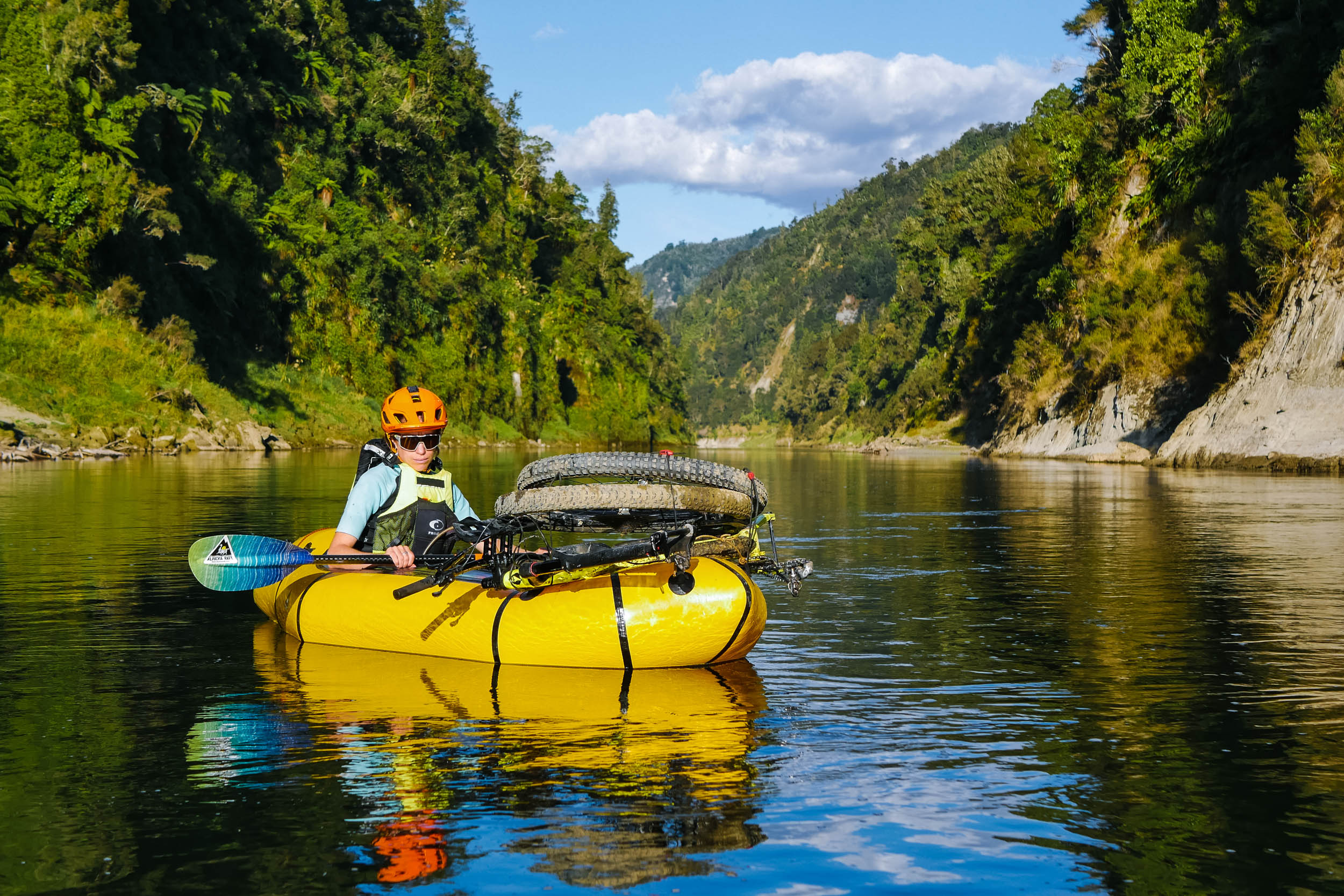
Forgotten Highways (Film)
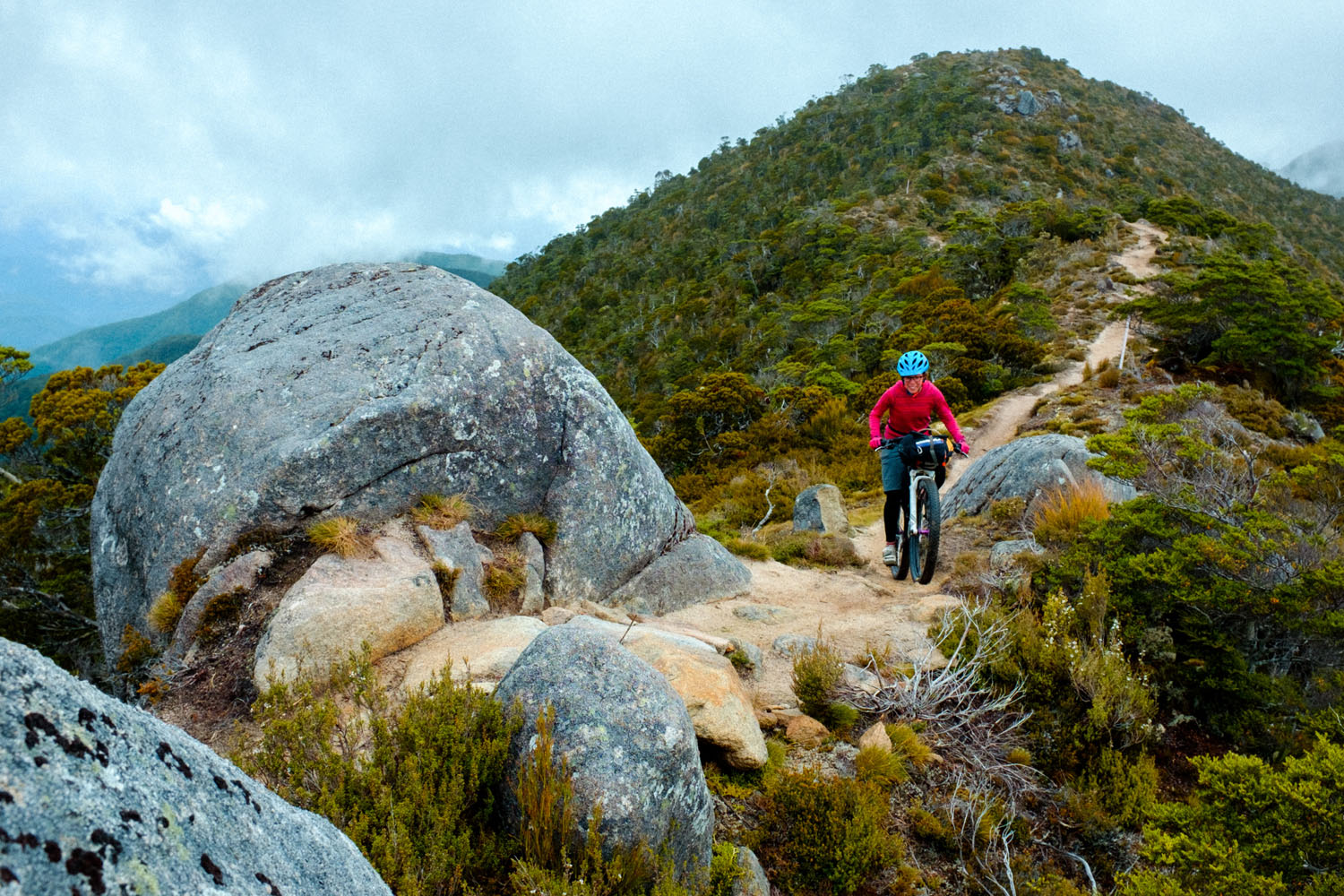
Old Ghost Road, New Zealand
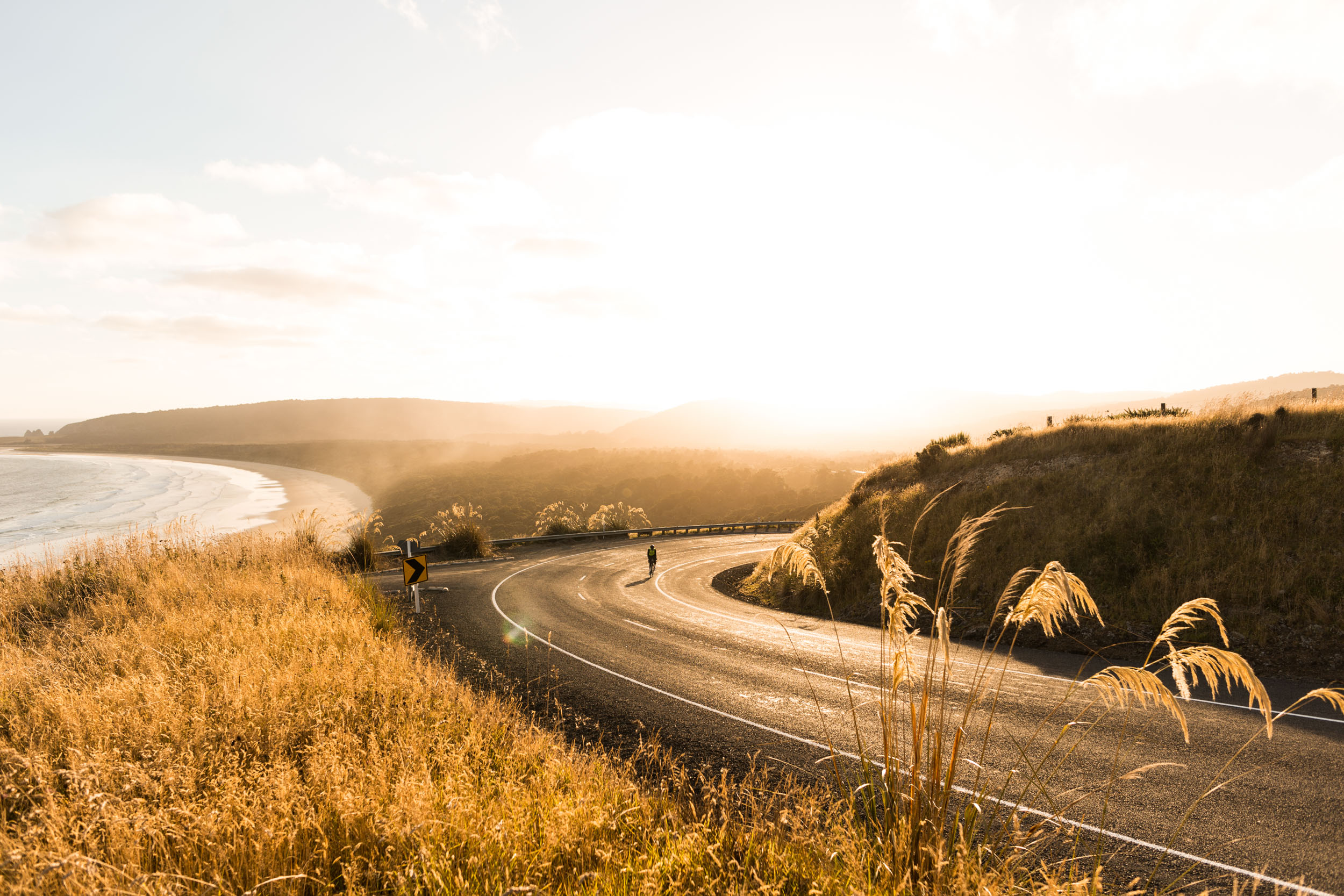
2022 Tuatara 1000: A Deep South Journey (Video)
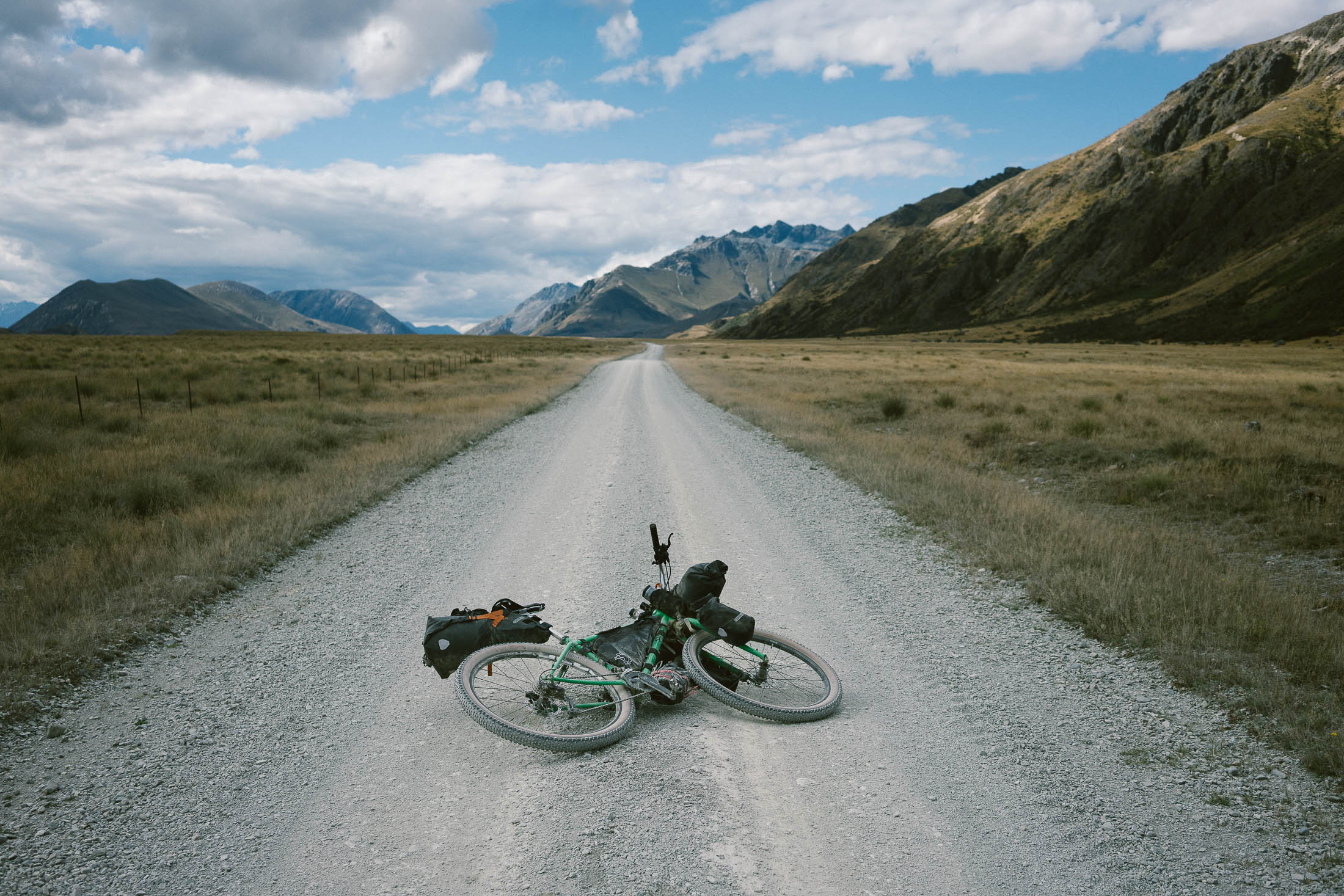
Fear: The Mind Games We Play
Filed in (categories & tags).
Please keep the conversation civil, constructive, and inclusive, or your comment will be removed.
Rad Companies that Support Bikepacking

You need to be logged in to use these features. Click here to login , or start an account if you’re not yet a member of the Bikepacking Collective…
- facebook-official
- youtube-play
- pinterest-circled
How to Travel by Bus in New Zealand 🚌 [2024] Guide
Nz pocket guide is 10 years old. thank you for trusting us with your trip for over a decade, the ultimate guide to travelling by bus in new zealand.
Which bus should you take to travel New Zealand? That’s right, you don’t need a car to travel New Zealand; travelling by bus is a super popular way to see the country. So popular, in fact, that there are three different ways to travel around the whole of New Zealand by bus! We’ll go through them all extensively in this ultimate guide to travelling by bus in New Zealand.
Bus travel and public transportation are not only ideal for the budget traveller but are also ways to explore New Zealand in an action-packed way while getting to meet loads of interesting people. This guide will go through all the ways you can travel by bus in New Zealand, including the pros and cons of each. We’ll even give you some quick details on city buses and day tours too.
Before we begin, be sure to bookmark the 10 Best Ways to Travel Around New Zealand for even more tips for getting around without a car.
Quick Tips for Travelling New Zealand by Bus
Our guide will go into detail about what is involved with each way to travel New Zealand by bus. But first, here are some quick tips for a New Zealand bus trip.
- Purchase your pass in the low season ( April to August ) when you can get the best deals; bus passes can usually be activated within a year
- Ask the driver which is the best side of the bus to sit on for views
- Pack some snacks so you can offer them around for a killer icebreaker
- Pack a lunch for bus trips that don’t have lunch included – this will help you save a killing on buying cabinet food in cafes and bakeries
- Pack a layer with you on the bus when the air conditioning gets too cold
- Buses are never on time in New Zealand but still, don’t be late because they will leave you, that goes for lunch stops on the coach buses too
- You need to wave city buses down; don’t expect them to stop at every bus stop.
For more tips, head to the 15 Tips to Make the Most of Your Bus Trip and 5 Tips to Get a Better Deal on a Bus Pass in New Zealand .
National Coach Buses: Public Transportation to Get Around New Zealand by Bus
The most extensive public transport network in New Zealand is the national coach buses. This is the mode of public transport which will get you to most places.
Which Companies Run the National Buses?
The main national coach bus service in New Zealand is InterCity which is covering the main tourist spots of the North Island and South Island . Atomic Travel is another national coach option running in the Canterbury and Otago regions of the South Island.
Which National Bus Companies Have Closed in New Zealand?
You might have heard about some other cheap buses in New Zealand. However, the following bus companies are no longer operating:
- Skip Bus (suspended until further notice)
How Do National Buses Work?
With national buses, single trip tickets can be purchased taking you from A to B. Bus passes can also be purchased, which is a great option if you plan to use InterCity on a regular basis. For example, InterCity do a FlexiPass bus pass which runs on a “travel hours” basis, and they do a TravelPass bus pass which is a bus pass for a set route around the country including a few activities. Find out more in What’s the Difference Between InterCity Bus Passes?
What is it Like to Travel with InterCity?
Using the national buses are easy. You can book your trip online or with most travel agents and accommodations in New Zealand. Then, just show up at the required bus stop 15 minutes before the departure time. The bus driver usually asks for a name and booking number (or bus pass details) then you hop on the bus. Bus trips usually involve a couple of 10-minute toilet/coffee breaks, as well as a 30-minute lunch break. Bus drivers give commentary on the speakers along the way and announce when approaching stops (so you’ll know when you reach your stop).
Night Buses (Sleeper Buses)
InterCity also offers a service between Auckland and Wellington throughout the night on their “ Sleeper Buses “. These buses are kitted out with beds for a more comfortable journey. Find out more in the 10 Things We Love About the New Sleeper Buses .
Pros of Travelling with InterCity
- This is the cheapest transport method to get around New Zealand
- It allows for independent travel, so you can plan your own trip and where you want to go
- There are daily departures all over the country
- See more pros in the 10 Reasons Why Bus Travel is Actually Awesome in New Zealand .
Cons of Travelling with InterCity
- It’s not as social as other bus options
- The bus doesn’t make any stops for photos or short walks, etc. along the way.
New Zealand Tour Buses: How Tourists Get Around New Zealand
Another way to see New Zealand is on a bus tour. This is a guided route around the country with a group, a bus and a couple of tour guides or driver guides. Bus tours come with a lot of inclusions, such as accommodation, meals and some activities.
Who are the New Zealand Bus Tour Companies?
There is a huge range of bus tours available in New Zealand, from backpacker bus tours aimed at 18 to 30-year-olds to bus tours with specialised activities like hiking and snowsports to bus tours for seniors and luxury travellers. Compare the bus tours by flavour in the following articles:
- The Best National Bus Tours in New Zealand
- The Best National Coach Tours in New Zealand
- The Best Backpacker Bus Tours in New Zealand
- The Best Small-Group Tours in New Zealand
- The Best New Zealand Tours for Seniors
- The Best New Zealand Hiking Tours
And compare bus tours by duration in the following articles:
- The Best 5-Day Tours of New Zealand
- The Best 5-Day Tours of the North Island
- The Best 5-Day Tours of the South Island
- The Best 7-Day Tours of New Zealand
- The Best 7-Day Tours of the North Island
- The Best 7-Day Tours of the South Island
- The Best 10-12-Day Tours of New Zealand
- The Best 10-12-Day Tours of the North Island
- The Best 10-12-Day Tours of the South Island
- The Best 20+ Days Tours of New Zealand
… And compare bus tours by starting destination with these:
- The Best New Zealand Tours Starting in Auckland
- The Best New Zealand Tours Starting in Christchurch
- The Best New Zealand Tours Starting in Queenstown
- The Best New Zealand Tours Starting in Wellington
Featured Bus Tour: Backyard Roadies
You can’t get more local than Backyard Roadies who formed out of the pandemic showing locals their awesome New Zealand “backyard”. Well, it’s time to show international travellers the highlights too on their variety of New Zealand tours ranging from 10 to 21 days! To add to the “Kiwi” vibe, Backyard Roadies is not only 100% New Zealand-owned and operated, but they go the extra mile to make their guests feel like locals, spending more time at each destination than most other tours. With small groups and a mix of male and female guides, Backyard Roadies offers fun, safe and great-value tours for all. Learn more about their tours and become part of the Backyard Roadies family over at backyardroadies.com .
How Do New Zealand Bus Tours Work and What is it Like to Travel on a Tour Bus?
With bus tours, you have a huge variety of tours to choose from ranging from 3 to 24 days. You pay for the whole trip before your chosen departure date, which often includes accommodation, at least one meal a day and some activities. You also have the option to choose some activity add-ons, upgrade to a private room, and provide information on any dietary requirements.
From there, you travel to New Zealand and, usually, tour groups will have an “introduction” evening giving you a chance to meet everyone the day before the tour. Otherwise, turn up at the designated bus stop or meeting place at the departure date and away you go!
You will have a tour guide or two who will look after you and your group for the whole trip. They will help organise bookings for any additional activities you might want to do. Plus, make you aware of each days’ itinerary. They usually prepare meals or organise to make meals together as a group. As all tour guides do, they also give commentary as you are travelling through the country.
See how some New Zealand bus tours work, like Contiki, G Adventures and Wild Kiwi, in Contiki Vs. G Adventures: Comparison for New Zealand and What is it Really Like to Travel With Wild Kiwi?
Pros of Travelling New Zealand on a Bus Tour
- This is a stress-free way of travelling with everything planned for you
- It’s a great way to meet new people
- It’s action-packed; you’re either always on the move or always doing something.
Cons of Travelling New Zealand on a Bus Tour
- You have limited time to yourself and not much scope for independent travel
- There’s no flexibility
- As it’s mostly all-inclusive, it’s the most expensive bus option upfront.
Hop-on Hop-off Buses: How to Travel Around New Zealand Without a Car
Like bus tours, hop-on hop-off buses follow set routes across the country with the option to “hop-off” just about anywhere along the route. Unlike bus tours, accommodation, meals and activities are not included in the price but are run on a more “pay-as-you-go” basis.
Which Companies are Hop-on Hop-off Buses?
The hop-on hop-off bus with the most frequent departures, therefore a true “hop-on hop-off” experience, is Kiwi Experience , which you can learn more about in our Kiwi Experience Review: What is it Really Like to Travel with Kiwi Experience?
Flying Kiwi also allows you the option to hop-off their bus tours for 9-day+ periods. For the guide below, we’ll focus on hop-on hop-off as being Kiwi Experience, but head over to this article if you want to know how Flying Kiwi works .
How Does Kiwi Experience Work and What is it Like to Travel on a Hop-on Hop-off Bus?
Bus passes for a chosen route are booked and paid for before departure. You can even buy a pass and decide your departure date later (as long as it’s within 12 months of purchasing the pass). When you’re ready, book your departure date and meet your bus at the given location and time. From your departure date, bus passes are valid for one year. For national routes, you are able to complete a route multiple times with a few conditions.
You will meet your driver-guide who is your driver, tour guide and travel agent, where you will give your name and/or passenger number to get on the bus.
Throughout each day that you travel on the bus (as opposed to the days that you hop off and do your own thing), there will be plenty of toilet/refreshment stops, short walks, photo stops, supermarkets and more. Clipboards will go around the bus to sign up to accommodation choices and activity choices (if any) that you want the driver to book and organise for you.
Accommodations are usually hostels with a communal kitchen and lounge facilities. You pay for your accommodation and activities on arrival to the accommodation or activity. Because meals are not included, you have the choice to eat out (if available) or cook in the hostel kitchen with food you would have bought at the supermarket stops.
If there’s anything we’ve missed in this explanation, it will probably be in How Does the Hop-on Hop-off Bus Network in New Zealand Work?
Pros of Travelling with Kiwi Experience
- Best of both worlds in terms of stress-free tour bus-style travel and the option to be more independent by hopping off the bus, choosing your own activities and accommodation
- They are action-packed tours and you have the option to slow down by hopping off the bus
- See more of the 10 Things We Like About the Hop-on Hop-off Buses .
Cons of Travelling with Kiwi Experiences
- It can get quite expensive by paying as you go. You need to be quite strict with yourself on what activities to do if you are on a tight budget – check out our advice in How to Budget for a Hop-On Hop-Off Bus Trip Around New Zealand
- The terms and conditions of travel can be a little cloudy, for instance, the “unlimited travel” policy and there are some locations you can’t “hop off”. That is explained more in the video over on our What is the Difference Between Stray and Kiwi Experience page.
- During the busy summer season , it can be hard to get yourself booked onto the next available bus when buses are full and book extra nights in accommodation on the spot.
Other Buses in New Zealand
Aside from bus transport for getting around New Zealand, buses can also be found as public transport in cities or as a transport method for day tours. Get details on the different types of buses in What is the Difference Between the Buses in New Zealand? Otherwise, check out the quick overview below.
Local City Buses: New Zealand’s Public Transportation
New Zealand’s larger cities have their own bus networks to connect the suburbs with the city centre. Check out some of our public transport guides for more information.
- Public Transport in Auckland
- Public Transport in Christchurch
- Public Transport in Wellington
- Public Transport in Queenstown
- Public Transport in Dunedin
- Public Transport in Palmerston North
- Public Transport in Gisborne
- Public Transport in Invercargill
How Does New Zealand Public Transportation Work (and Does New Zealand Have Good Public Transportation?)
City buses provide a cheap way of getting around the city. You pay for one-way tickets which are usually priced on how many “zones” you pass through. For those of you staying in a city for a while, perhaps working on a working holiday visa , then you might want to consider getting a travel card for discounted fares, such as the AT Hop for Auckland , Snapper for Wellington , Metrocard for Christchurch , Bee Card for Queenstown , etc.
While New Zealand public transportation is pretty affordable and reliable, travel times can be slow, especially in congested cities like Auckland, so always factor much more time into your travel plan than you might usually do when driving or when taking the bus in cities with bus lanes.
For more advice on taking the bus, check out How to Catch a City Bus in New Zealand .
Day Tours: The Other Way Buses are Used in New Zealand
Some tours in New Zealand involve tours by bus. These tours usually involve activities and food. The most popular day tours by bus are trips from Queenstown to Milford Sound (see the 10 Best Milford Sound Tours from Queenstown & Te Anau ) and Cape Reinga tours (see Explore Group or Dune Rider ). Check out other locations around New Zealand with popular day tours in Places in New Zealand Only Accessible by Bus .
Day tours are booked as an activity rather than a mode of transport. For more information on booking activities, see The Essential Guide to Booking Activities in New Zealand .
More About Getting Around New Zealand by Bus
That’s it for our complete guide to bus travel in New Zealand, but there are a few more articles we can point you to if, for some crazy reason, we haven’t already given you enough:
- What You Need to Know About Booking Transport in New Zealand
- A Day in the Life of a Hop-On Hop-Off Bus Passenger
- Bus Networks in New Zealand
Finally, don’t forget to consider all of your transport options listed in What is the Best Way to Get Around New Zealand? and bookmark The Travel Guide to New Zealand on a Budget for more money-saving tips.
The information in this guide has been compiled from our extensive research, travel and experiences across New Zealand and the South Pacific, accumulated over more than a decade of numerous visits to each destination. Additional sources for this guide include the following:
- Tourism New Zealand (General travel advice - Updated [2024])
- Immigration New Zealand (Visa and immigration advice - Updated [2024])
- New Zealand Customs Service (Customs and Biosecurity - Updated [2024])
- New Zealand Traveller Declaration (NZTD online platform - Updated [2024])
- Tiaki Promise (Care for people place and culture - Updated [2024])
- Safe Travel (NZ travel advisories - Updated [2024])
- Stats NZ (Statistics and travel data - Updated [2024])
- Waka Kotahi NZ Transport Agency (Road and transport tips - Updated [2024])
- DriveSafe (Road safety - Updated [2024])
- Council websites and freedom camping maps (Local travel advice region by region - Updated [2024])
- AdventureSmart (Know before you go - Update [2024])
Our editorial standards : At NZ Pocket Guide, we uphold strict editorial standards to ensure accurate and quality content.
About The Author
This article has been reviewed and published by Laura, the editor-in-chief and co-founder of NZ Pocket Guide. Laura is a first-class honours journalism graduate and a travel journalist with expertise in New Zealand and South Pacific tourism for over 10 years. She also runs travel guides for five of the top destinations in the South Pacific and is the co-host of over 250 episodes of the NZ Travel Show on YouTube.
Was this article useful?
Related posts, the 10 best new zealand tours starting from auckland 🗻 [2024], the 10 best new zealand tours starting from christchurch [2024], the 10 best 10-12-day tours of new zealand 🧭 [2024], what is the difference between stray and kiwi experience, the 10 best 5-day tours of new zealand 🧭 [2024], the 6 best new zealand tours for seniors (over 40s, 50s & 60s), recommended for you, will your phone work in new zealand, 7 ways to get rid of your excess luggage before you leave new zealand, the best motorhome & campervan rentals in wellington [2024], destinations, travel tips, connect with us, accommodation.
Welcome/Kia Ora By using this website you agree to our Privacy Policy and terms of use within it which includes sponsored posts and affiliate links.
Connect with us
Welcome/Kia Ora! By using this website you agree to our Privacy Policy and the terms of use within it.
© 2024 NZ Pocket Guide. Contact – Disclaimer – About Us – Our Standards
Plan your trip
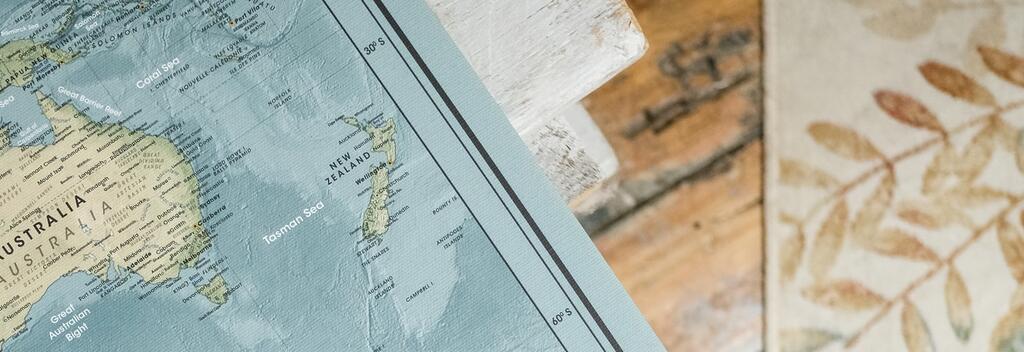
Planning to visit New Zealand? Read our guide that covers all the practical travel advice you need to know ahead of your trip.
Travelling to New Zealand

Learn about the COVID-19 requirements for travelling to New Zealand, visa and entry requirements and what sort of travel visa you might need. Find out how to get to New Zealand and how to book your trip.
See more on travelling to New Zealand >
When is the best time to visit New Zealand?
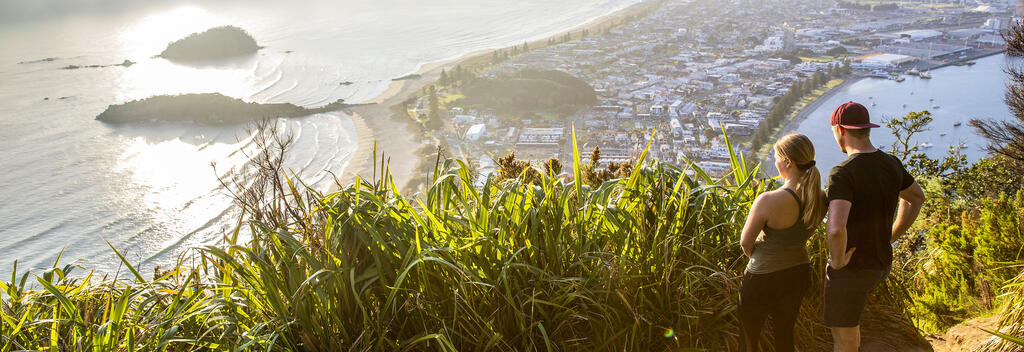
It’s always a good time to visit New Zealand – find out about the weather, popular times to travel to New Zealand, seasonal activities around the country and major events and festivals you won’t want to miss.
Find out more >
Getting around New Zealand
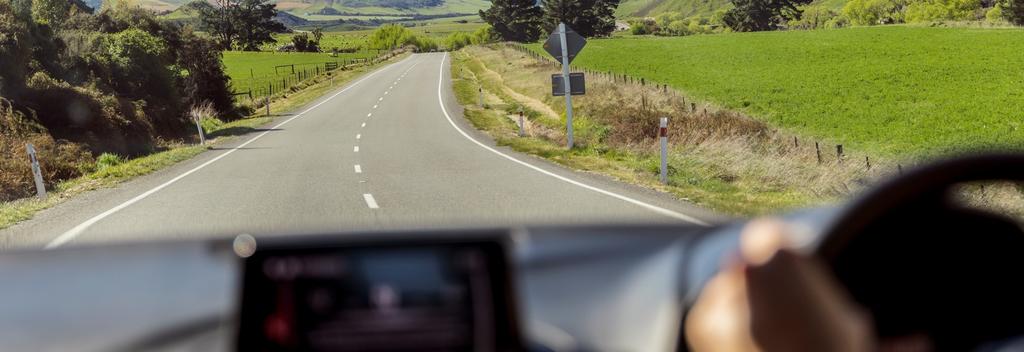
Whether you want to self-drive, fly, join a tour, or hop on a bus or train, there are plenty of options for getting around New Zealand. Find out what’s best for you with our practical advice on travel and transport in New Zealand.
Find more transport options >
Essential travel information
- Share on Facebook
- Share by email
Next on your journey
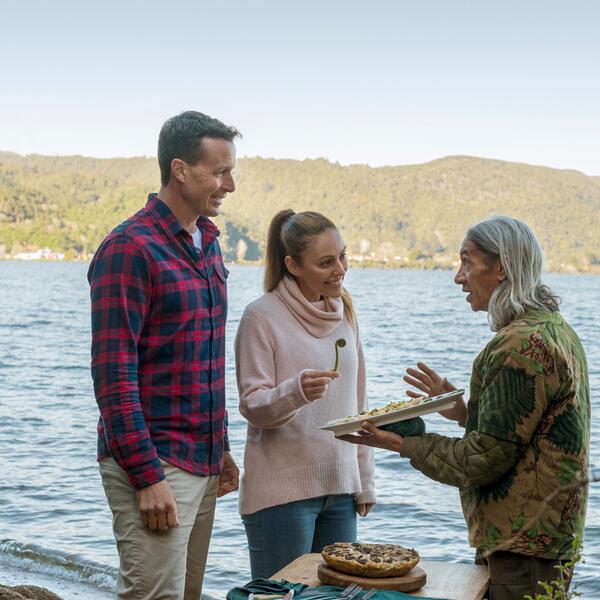
Learn more about New Zealand long-arrow-right
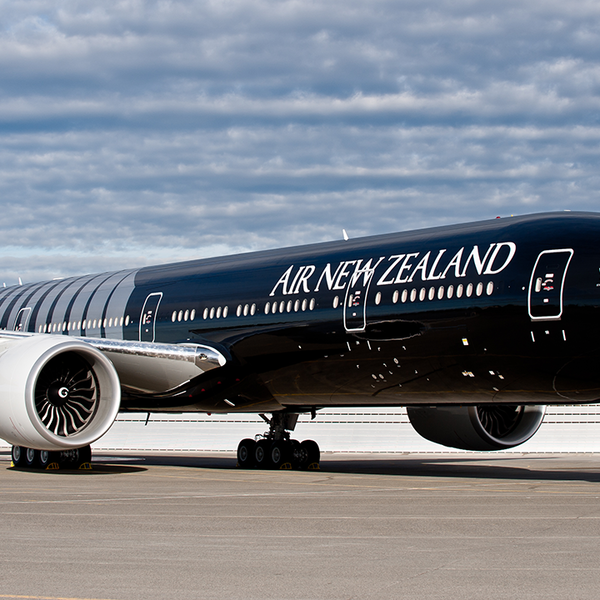
Flights to New Zealand long-arrow-right
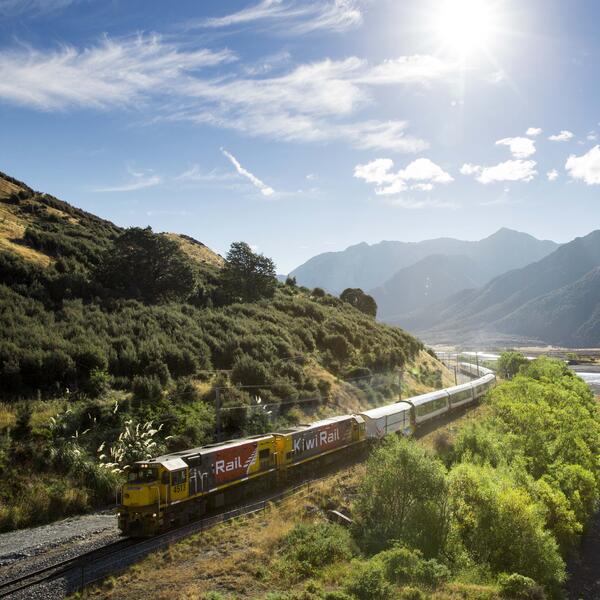
Getting around New Zealand long-arrow-right
- News and articles
- Find us Find nearest IDP offices IDP Australia IDP Bahrain IDP Bangladesh IDP Cambodia IDP Canada IDP China IDP Egypt IDP Ghana IDP Hong Kong IDP India IDP Indonesia IDP Iran IDP Jordan IDP Kenya IDP Korea IDP Kuwait IDP Lebanon IDP Malaysia IDP Mauritius IDP Middle East IDP Nepal IDP Nigeria IDP Oman IDP Pakistan IDP Philippines IDP Saudi Arabia IDP Singapore IDP Sri Lanka IDP Taiwan IDP Thailand IDP Turkey IDP UAE IDP Vietnam IDP Global IDP Corporate
- Course advice
- Student visa support
- Latest visa news
- Arrive and Thrive
- Our history
- Internships
- Find a course
- FastLane courses
- Scholarships
- University Rankings - THE
- University Rankings - CUG
- What is IELTS?
- Why take IELTS with IDP?
- IELTS Preparation
- Book an IELTS test
- Arrival services
- Money transfer
- Student health cover
- Student banking
- Accommodation
- Guardianship welfare services
- About New Zealand
- Work in New Zealand
- Migrate to New Zealand
- Green List Courses in New Zealand
- Study to migrate
- Study Cookery in New Zealand
- Guide to NZ Permanent Residency
- Study Nursing in New Zealand
- Find nearest IDP offices
- IDP Australia
- IDP Bahrain
- IDP Bangladesh
- IDP Cambodia
- IDP Hong Kong
- IDP Indonesia
- IDP Lebanon
- IDP Malaysia
- IDP Mauritius
- IDP Middle East
- IDP Nigeria
- IDP Pakistan
- IDP Philippines
- IDP Saudi Arabia
- IDP Singapore
- IDP Sri Lanka
- IDP Thailand
- IDP Vietnam
- IDP Corporate
From inspiring a global mindset to enhancing your career prospects, studying abroad opens doors for a world of opportunities.
Lost in a maze of choices and don't know where to begin? IDP helps you navigate study abroad options with ease.
Now that you’ve shortlisted your dream course and university, get a head start with our expert tools and support to fast-track your application process.
Got an offer from a university you applied to? Now, let's help you take the next steps towards making your study abroad dream a reality.
Ready to embark on your study abroad adventure? Let’s help set you up for the journey ahead.
Touch down in your new home and pave your own path to success. Learn how to make the most of your study abroad experience.

- IDP Education /
- Going through a breakup whi...
Going through a breakup while studying abroad? It’s not over
On this page, 5 ways to survive a breakup while studying abroad, 1. reach out to someone on campus, 2. stay active and keep socialising, 3. travel around your study destination to keep busy, 4. talk to friends and family back home, 5. understand it’s all part of the journey, embark on your overseas study journey with idp, topics covered.
- 16 May 2024
When making the bold move to pursue your studies abroad, one crucial challenge comes to mind if you’re in a relationship. What if it doesn’t work out?
While some of the most common challenges you’ll hear are about settling into your study destination, dealing with your academics, and finding a sense of community among your peers, a potential breakup while studying overseas might be a scarier thought.
All of the above are valid struggles that international students often have to overcome, and may also add to putting your relationship to the test.
As optimistic as you might be, sometimes breakups inevitably happen especially when you are pursuing a long-distance relationship. Let’s be real: situations like this can leave you feeling emotionally exhausted for days and even take a toll on your well-being for a while.
But that doesn’t mean you’ll never get back up on your feet. This is your reminder to never let heartbreak make you lose sight of the dreams that you’ve worked hard for.
Here’s how you can get through a breakup even as you pursue your studies overseas.
It’s easy to keep your problems to yourself and feel as though sharing your worries might burden those around you.
But more often than not, some people are willing to listen, give you words of encouragement, and simply be there for you in one of your most trying times.
As much as you’ll find it tempting to want to solve your problems all on your own, talking about them to someone on campus might just help ease some of the pain away and help you find some sort of emotional relief.
Think of it this way. The more you try to suppress your feelings, keep them to yourself, and avoid communicating with anyone, your pent-up emotions will burst and eventually come out.
There are days when all you want to do is stay in bed, cry your eyes out, and isolate yourself from the people around you. It’s completely normal.
Everyone going through heartbreak needs some alone time to process their feelings and simply sit with them.
But too much isolation can also be bad for you. Ultimately, loneliness could lead to higher levels of stress, lower quality of sleep, as well as mental health issues.
Find comfort in the company of those around you and staying active in your daily social interaction will not only take your mind off the breakup but also positively impact your overall well-being.
Want to know one of the best ways to move on from a breakup? Travel.
Sometimes, being in an entirely new place physically and emotionally is exactly what people need to draw their focus towards the things that are right in front of them rather than the heartbreak they’re currently facing.
Instead of dwelling on the past, you wouldn’t be able to help but soak in the sights and wonders of wherever you’re travelling to.
However, one of the most common misconceptions about travelling during a breakup is that it’s merely a band-aid remedy. But this cannot be further from the truth.
Not only does travelling provide a break from your routine back in university, but it also puts things in perspective and serves as a reminder that life goes on and so will you. This distance will help you clear your mind, make the emotional healing process quicker, and find yourself again.
It’s not a distraction or temporary solution; it’s a way forward.
There’s truly nothing like the comfort of your friends and family back in your hometown. While you may have a community of friends you trust and feel supported by on campus, being reassured by your loved ones will always hit a soft spot in your heart and fill a void that only they can fill.
It’s easy to feel embarrassed by a failed relationship but family and friends are the last ones you should be hiding your breakup from. You need their support, warmth, and comfort more than anything else.
Always remember that dealing with heartbreak is a grieving process where the people around you can help.
There are some things in the course of our lives that are inevitable, breakups included. And as cliche as it sounds, everything happens for a reason. It’s simply a process one has to go through.
In every negative or unfortunate situation, there are life lessons there that will shape you into becoming a better person. Always remind yourself that you will come out of this stronger than before.
Once you look at the bigger picture of the study abroad experience, you’ll come to realise that the benefits will certainly always outweigh the setbacks in life.
Don’t let the fear of potential heartbreak derail you from the dreams you’ve set your mind to in your study journey abroad!
Here at IDP, our education counsellors are here to support students like you at every step of the way. From finding the right course to preparing students for departure , you name it, we’ll be there.
Ready to get started? Book your free counselling session with us today.
One account for all your study abroad needs
Create your profile and unlock a wide array of features including personalised recommendations, fast-tracked applications and much more.
Related articles

Best apps for studying abroad in Ireland
- May 29, 2024

Best apps for studying abroad in Canada

Best apps for studying abroad in the UK

Read this before you use ChatGPT to write your university application cover letter
- May 28, 2024

Best apps for studying abroad in New Zealand

Never run out of topics again – stay connected with your loved ones while studying abroad

Can You Lose A Scholarship? How To Deal With Stress And Imposter Syndrome

TikTok Study Hacks: What Works And What Doesn’t
- May 27, 2024

Best apps for studying abroad in Australia

8 Strategies To Ace Your Face-To-Face Presentations
- May 26, 2024
Feeling stuck? Let our expert counsellor help you.
Can't decide on the university and course? Our experienced counsellors are here to guide and support you through each stage of your study abroad journey. Reach out today!

Book an appointment
We'll call you back
+64800005728
Mountain View, CA
Mountain View
Around the Globe
Hurricane tracker.
Severe Weather
Radar & Maps
News & features, winter center, news / travel, world’s best airline for 2024 named by airlineratings.com.
Its annual Airline Excellence Awards assesses carriers using 12 criteria that include safety and product rating, fleet age, profitability, serious incidents, innovation, forward fleet orders and passenger reviews from multiple sources.
By Maureen O'Hare, CNN
Published May 30, 2024 8:29 AM PDT | Updated May 30, 2024 8:29 AM PDT

Qatar Airways, the state-owned flag carrier of Qatar has been named the world's best airline for 2024 by Australia-based aviation safety and product rating agency AirlineRatings.com. (Photo credit: Nicolas Economou/NurPhoto/Getty Images via CNN Newsource)
Editor's note: Sign up for Unlocking the World , CNN Travel’s weekly newsletter. Get the latest news in aviation, food and drink, where to stay and other travel developments.
(CNN) — When planning a trip, you can’t guarantee your flight won’t be delayed , your bag won’t go missing , or you won’t have a nightmare neighbor . But you can lighten your unease when things go wrong by choosing an airline brand you trust.
Journeys on Qatar Airways don’t always go as hoped – 12 people were injured after a flight from Doha to Dublin was hit with turbulence on Sunday – but the Qatari flag carrier consistently places highly on global airline rankings.
Now, after surrendering its crown in 2023 to Air New Zealand, it has once again been named the world’s best airline by Australia-based aviation safety and product rating agency AirlineRatings.com.
Its annual Airline Excellence Awards assesses carriers using 12 criteria that include safety and product rating, fleet age, profitability, serious incidents, innovation, forward fleet orders and passenger reviews from multiple sources. The judging panel of five editors, led by AirlineRatings.com Editor-in-Chief Geoffrey Thomas, has more than 100 years of industry experience between them.
“Qatar Airways came out number one in many key areas although it was a very close scoring for the top 10,” said Thomas . “The passenger reviews however scored Qatar Airways ahead of all airlines and its consistency and high standard of service delivery came through in the feedback.”
Excellence in aviation
Singapore Airlines won Best First Class, Qatar Airways picked up Best Business Class, Emirates scooped Best Premium Economy and Air New Zealand was awarded Best Economy Class.
Qatar Airways won Best Catering, Virgin Australia had the best Cabin Crew, while Qantas triumphed with its Lounges.
For long-haul travel, AirlineRatings.com has excellence awards according to region.
For the Middle East, Qatar Airways was the top pick. Korean Air triumphed in North Asia, Cathay Pacific Airways was the leader in Southeast Asia and Air New Zealand ruled in Australia-Pacific. Air France was the top choice for Europe, and Turkish Airlines led the way in southern Europe. Air Canada won the award for North America, and Latam was the winner in South America.
United is the first airline to deploy a tool fleetwide that helps pilots navigate turbulence and creates safer alternate routes during stormy weather.
AirlineRatings.com’s top 25 premium airlines for 2024:
1. Qatar Airways 2. Korean Air 3. Cathay Pacific Airways 4. Air New Zealand 5. Emirates 6. Air France/KLM 7. All Nippon Airways 8. Etihad Airways 9. Qantas 10. Virgin Australia/Atlantic 11. Vietnam Airlines 12. Singapore Airlines 13. EVA Air 14. TAP Portugal 15. JAL 16. Finnair 17. Hawaiian 18. Alaska Airlines 19. Lufthansa / Swiss 20. Turkish Airlines 21. IGA Group (British Airways & Iberia) 22. Air Canada 23. Delta Air Lines 24. United Airlines 25. American Airlines
AirlineRatings.com’s top 25 low-cost airlines for 2024:
In alphabetical order:
• AirAsia Group • Air Baltic • Air Canada Rouge • Cebu Pacific • EasyJet • Eurowings • FlyDubai • FlyNAS • GOL • JetBlue • Jet2 • Jetstar Group • Jeju Air • Norwegian • Peach • Ryanair • Scoot • SpiceJet • Sun Country Airlines • Southwest Airlines • Transavia • Vietjet • Volotea • Vueling • WizzAir

The-CNN-Wire™ & © 2024 Cable News Network, Inc., a Warner Bros. Discovery Company. All rights reserved.
Weather News

Potent storm to drench Northwest, trigger severe weather in Midwest

Another Outer Banks home collapses into the Atlantic Ocean
Tropical threat may arise in Caribbean as hurricane season begins
Top Stories
Trending Today
Accuweather early, forecast victories.
Super-charged Atlantic hurricane season poised for intense activity

Severe storms to target Plains states through the weekend
16 hours ago

Two hypothermic climbers waiting for rescue on Denali, North America's...
20 hours ago

Weather Forecasts
Sunny days ahead for Northeast, but not for long
17 hours ago

Featured Stories
Iceland volcano: Gas pollution possible, lava flows over roads
22 hours ago

Rivers in Alaska are turning orange, the reason surprised scientists

First fatal lightning strike of 2024 kills rancher, dozens of cattle

More than 50 killed by Cyclone Remal in India and Bangladesh

Turbulence injures 12 more people on flight to Dublin

We have updated our Privacy Policy and Cookie Policy .
Get AccuWeather alerts as they happen with our browser notifications.
Notifications Enabled
Thanks! We’ll keep you informed.

IMAGES
VIDEO
COMMENTS
Welcome to New Zealand. Get official travel information, maps, itineraries, best time to travel & things to do to help you plan your next holiday to New Zealand. ... Travelling around New Zealand. Driving Get familiar with driving in New Zealand. Public transport ...
8. Train. Although a stunning way to travel in New Zealand, the train network is pretty small with limited departures in New Zealand, making it an unpopular way to travel around New Zealand as a transport method. However, the train journeys in New Zealand are seen as more like a scenic experience and a fun way to get between the likes of ...
Introducing New Zealand. 2. It's okay to dress down. Casualness rules in New Zealand, even in urban areas. Depending on what region you're in, even a wedding might see some Kiwis in jeans, their cleanest bush shirt (a tough woolen shirt) and gumboots (rubber boots) or jandals (flip flops). This is unremarkable.
The Ultimate List of New Zealand Travel Tips. Ah, New Zealand!Known to the local Māori as "Aotearoa", New Zealand is a remote country in the South Pacific famous for its dramatic scenery. At about 1,600 km (1,000 mi) long and 450 km (280 mi) at its widest point, the country is easy to explore.
Being an island nation, ferries and water taxis are an important part of getting around New Zealand. Regular passenger and vehicle ferries connect the North and South Islands across Cook Strait, while a passenger ferry links the South Island with Stewart Island. Elsewhere around the country, you'll find ferries travelling between outlying ...
New Zealand's stunning scenery makes for remarkable road trips and traveling by car is convenient and flexible, especially for visiting attractions away from main arterial routes. Many of the best-known national parks are remote, so you'll need a car to explore them. Driving around New Zealand is reasonably straightforward and traffic is ...
Welcome to New Zealand. Get official travel information, maps, itineraries, best time to travel & things to do to help you plan your next holiday to New Zealand. ... Travelling around New Zealand. Drive times. Find out travel times around the country. Times and distance calculator Accommodation . Explore accommodation options ...
An Intro About New Zealand. Location: New Zealand is a country in the Oceania continent.It's located in the South Pacific Ocean, about 1,500km (930 miles) east of Australia and around 1,000km (620 miles) south of the South Pacific Islands.See Where is New Zealand? for more information.. Size: 268,021km 2 (103483 mi 2) in total.It is approximately 1,600km (990mi) long and around 400km (250mi ...
Backpacking New Zealand Suggested Budgets. On a backpacker budget, prepare to spend at least 75-85 NZD per day. On this budget, you can stay in a hostel dorm, take public transportation to get around, limit your drinking, do free hikes, visit the odd paid site (like museums), and cook your own meals.
Travelling by plane in New Zealand. While many visitors choose to travel overland in New Zealand, opting for a plane can be a good option if you want to get to specific destinations within a short timeframe. Air New Zealand is the national airline and goes to 25 different destinations around the country. Jetstar, a low-cost carrier, is another ...
29. Acceptable ID. The legal drinking age is 18 years old in New Zealand and you may be asked to show your ID to prove your age when buying alcohol. The only forms of ID that are accepted are your passport, a valid New Zealand driver license and the Kiwi Access Card (previously known as the 18+ Card).
In New Zealand we drive on the left-hand side of the road at all times and have speed limits that range from 50km/h to 110km/h. If you are driving slowly on the open road, it is wise to pull over to let faster traffic past. When travelling on the motorway (highway), keep to the left unless passing.
But don't let that stop you - it is still totally possible to explore New Zealand on a budget. If you are on a tight budget and watch your spending closely, you could get by with a daily budget of $60 - $90 per person. If you want a few splurges and to stay in nicer accommodation, plan to budget $100 - $150.
4. Negotiate a two-wheeled adventure in Central Otago. New Zealand's first - and arguably best - multi-day cycling experience is the Otago Central Rail Trail. An undulating ride through sunbaked southern landscapes and the heritage streetscapes of former gold-mining towns, it takes four to six days to complete.
N/A. 90/day. 84/day. If you drive, getting a campervan is one of the most economical ways to get around. You'll be able to use your van/car as accommodation, pick up travelers to split the cost of gas, and maybe find travel partners to split the cost of the vehicle itself.
Waitomo and the Forgotten World Highway. Mount Taranaki to Wellington. New Zealand South Island Road Trip. Ferry Crossing from Wellington to Picton. Picton to the Abel Tasman National Park. Abel Tasman National Park to Kaikoura. Kaikoura to the West Coast via the Arthurs Pass National Park.
In New Zealand you drive on the leftand will find road rulessimilar to those in the UK, Australia and the US. All occupants must wear seatbeltsand drivers must park in the same direction as that in which they are travelling. The speed limitfor the open road is 100kmph, reduced to 70kmph or 50kmph in built-up areas.
Travelling around New Zealand by bus is one of the best ways to see the country without a car. Despite many towns in New Zealand being remote and nestled in the mountains, New Zealand has a great bus network. The Lindis Pass. One of the major bus operators in New Zealand is InterCity. Honestly, if you're looking for the cheapest and most ...
Following a two-month bikepacking trip around New Zealand, Matt Bark reflects on the value of following established routes versus the potential risks and rewards that come with charting your own path. Find his story of finding the right balance, making new connections, and embracing spontaneity here…. PUBLISHED May 29, 2024. 10.
Here's a few useful links to help with planning your trip to Aotearoa New Zealand. Best things to do in the North Island ; Best things to do in the South Island; Other Islands; Best ways to travel around; Calculate travel times and distances
PressReader. Catalog; For You; Motorhomes Caravans & Destinations. EPIC EVENTS TO PLAN YOUR TRAVEL AROUND 2024-05-30 - . Whether you're exploring New Zealand's scenic landscapes or venturing into one of the vibrant towns, plan your next RV adventure around one of these upcoming events and enjoy unique entertainment while exploring and discovering a new destination.
Using the national buses are easy. You can book your trip online or with most travel agents and accommodations in New Zealand. Then, just show up at the required bus stop 15 minutes before the departure time. The bus driver usually asks for a name and booking number (or bus pass details) then you hop on the bus.
Getting around New Zealand. Whether you want to self-drive, fly, join a tour, or hop on a bus or train, there are plenty of options for getting around New Zealand. Find out what's best for you with our practical advice on travel and transport in New Zealand. Find more transport options >.
Our experienced counsellors are here to guide and support you through each stage of your study abroad journey. Reach out today! Meet a counsellor. Find the nearest IDP office. Study Overseas Consultants in India - Study abroad with IDP education, we help students to study overseas in Australia, USA, Canada, UK & New Zealand.
After surrendering its crown in 2023 to Air New Zealand, the airline topping the list has once again been named the world's best airline by Australia-based aviation safety and product rating ...